British Dog Breeds
British dog breeds include a variety of dogs from the United Kingdom, known for their distinct characteristics and historical roles in hunting, herding, and as companions.
British dog breeds, with a rich heritage in the UK, range from agile terriers to noble working dogs. Each breed is known for its unique traits and has been historically bred for specific roles like hunting, herding, or companionship.
Owning British dog breeds can be challenging due to their diverse needs. Active breeds require significant exercise and mental stimulation, while those with thick coats need regular grooming. Additionally, some are prone to specific health issues, necessitating attentive care and regular veterinary check-ups.
TAP ON THE IMAGE TO READ THE MORE OF THE ARTICLE.

Airedale Terrier
The Airedale Terrier, known as the "King of Terriers," originated in the Aire Valley of Yorkshire, England, during the mid-19th century. It emerged from the crossing of the Otterhound with the now-extinct Black and Tan Terrier, combining the former's keen scenting ability and the latter's agility and tenacity. Initially bred for hunting otters and rats along the riverbanks, the Airedale's versatility saw its roles expand to include guarding, police work, and even serving in military capacities.
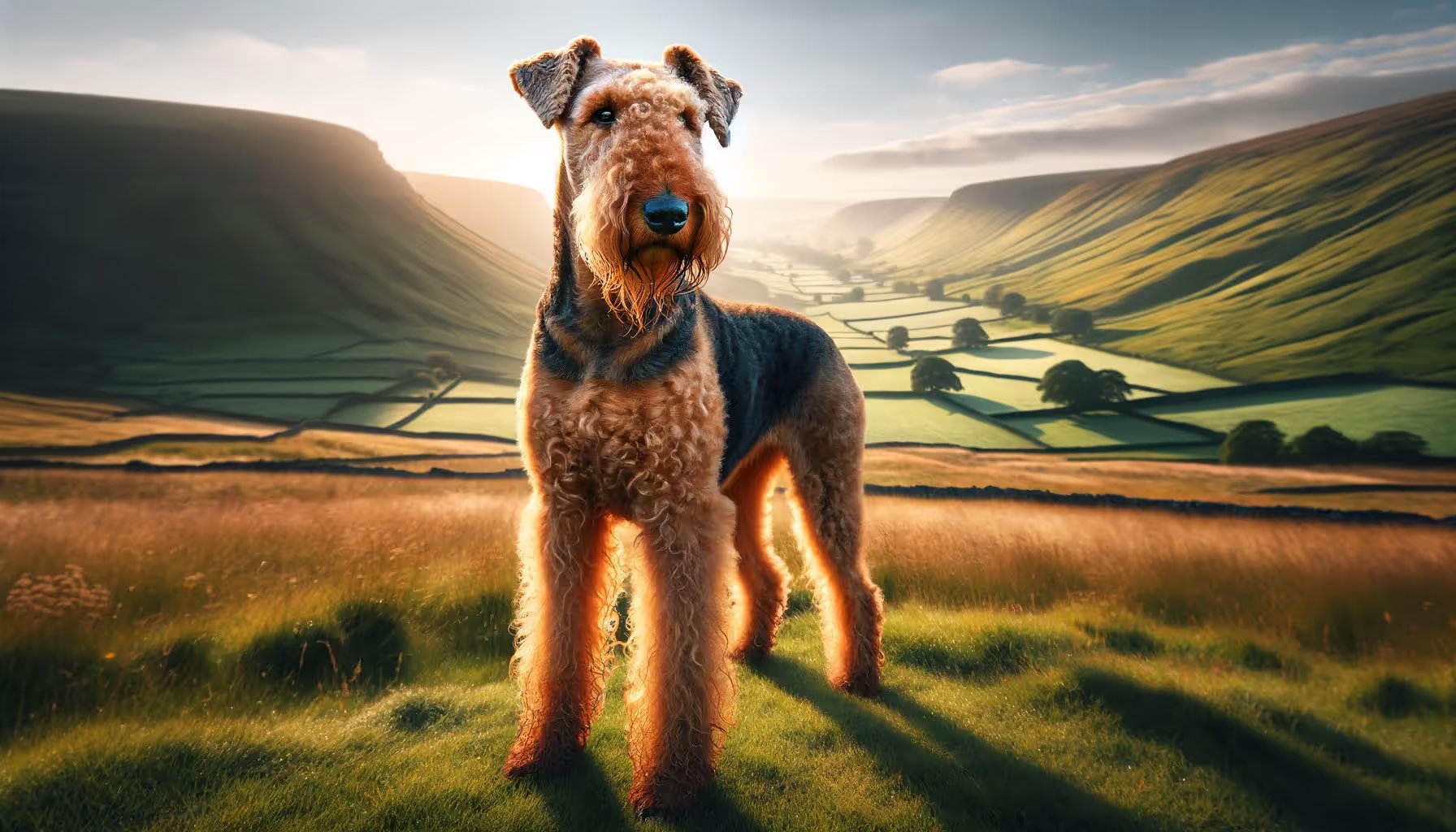 In World War I, the Airedale Terrier distinguished itself as a war dog, known for its bravery and loyalty. They were used to carry messages across enemy lines and proved their worth under challenging battlefield conditions. Following the war, the breed's popularity surged, transitioning from a working dog to a favored show dog and family companion. Officially recognized by The Kennel Club in 1886 and the American Kennel Club in 1888, the Airedale Terrier today is celebrated for its intelligence, independent spirit, and friendly nature, maintaining its status as a beloved dog breed across the globe.
In World War I, the Airedale Terrier distinguished itself as a war dog, known for its bravery and loyalty. They were used to carry messages across enemy lines and proved their worth under challenging battlefield conditions. Following the war, the breed's popularity surged, transitioning from a working dog to a favored show dog and family companion. Officially recognized by The Kennel Club in 1886 and the American Kennel Club in 1888, the Airedale Terrier today is celebrated for its intelligence, independent spirit, and friendly nature, maintaining its status as a beloved dog breed across the globe.
Group: Terrier Group, The Airedale Terrier belongs to the Terrier Group among British dog breeds. This group is known for its energetic, tenacious, and spirited nature, originally bred for tasks like hunting and vermin control.
The Airedale, as the largest terrier breed, holds a unique place within this group.
Temperament: The Airedale Terrier is known for its courage, independence, and playful nature. They are intelligent and friendly but can sometimes show stubborn and free-spirited behavior.
Height: Males typically stand about 23-24 inches (58-61 cm), with females being slightly shorter.
Weight: An average adult Airedale Terrier weighs between 50-70 pounds (23-32 kg).
Coat and Color: They have a hard, dense, and wiry coat, usually in a classic black and tan color pattern.
Life Expectancy: Airedale Terriers generally live for about 10-13 years.
Activity Level: They are high-energy dogs requiring regular exercise and mental stimulation.
Trainability: Airedales are highly trainable but require consistent and patient training methods due to their independent nature.
Socialization: Early socialization is crucial for Airedale Terriers to develop well-rounded behaviors towards other animals and humans.
Grooming Needs: Their wiry coat needs regular grooming, including brushing and hand-stripping, to maintain its condition.
Health Issues: Airedale Terriers are prone to certain health issues like hip dysplasia, allergies, and heart problems.
Adaptability: They adapt well to different living environments but need sufficient space for exercise and play.
Living Space Compatibility: Airedale Terriers can adapt to various living situations but do best in homes with enough space to roam.
Family Situation: They generally do well in families, being good with children if properly socialized, but their high energy and size should be considered.
Owning an Airedale Terrier involves commitment to their exercise, training, and care. They're energetic and intelligent dogs that make loyal family members. Proper care and attention will ensure a rewarding companionship with this breed. The Kennel Club
Beagle
The Beagle, one of the most recognizable British dog breeds, boasts a history that dates back to Roman times. However, the modern Beagle, as we know it, began to be developed in England in the 1830s. Early Beagles were used for hunting small game, especially rabbits and hares, and were valued for their keen sense of smell and tracking ability. These dogs were bred to be small enough to follow prey into dense underbrush, yet loud enough to be heard from a distance.
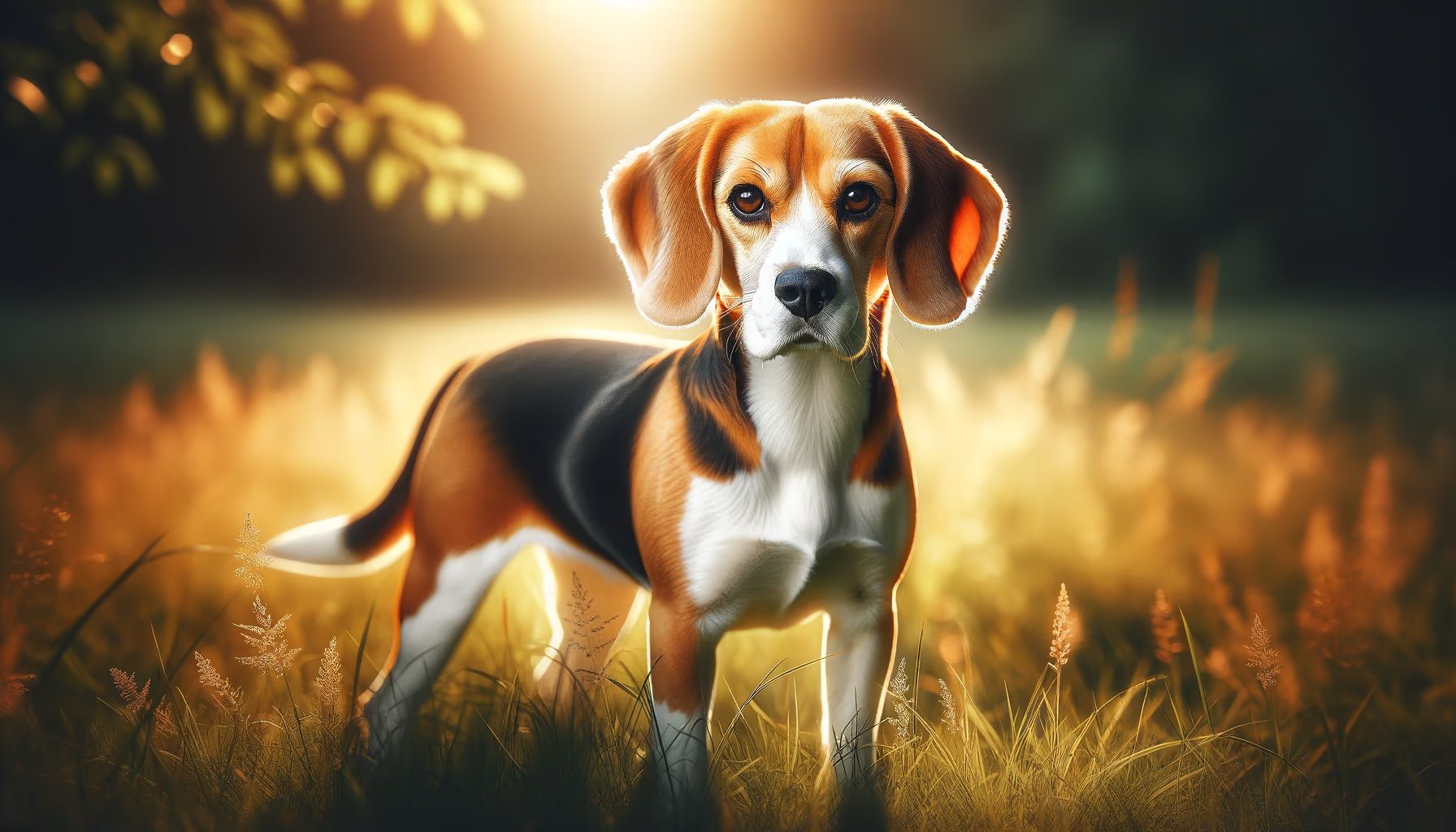 In the 19th century, the Reverend Phillip Honeywood established a Beagle pack in Essex, which is believed to have played a significant role in developing the modern breed. Although initially bred for hunting, the Beagle's friendly and companionable nature allowed it to transition seamlessly into a popular family pet.
In the 19th century, the Reverend Phillip Honeywood established a Beagle pack in Essex, which is believed to have played a significant role in developing the modern breed. Although initially bred for hunting, the Beagle's friendly and companionable nature allowed it to transition seamlessly into a popular family pet.
The breed was recognized by The Kennel Club in the UK in 1873 and gained popularity in the United States shortly afterward. Today, the Beagle is celebrated not only for its prowess as a hunting dog but also for its friendly demeanor and compact, sturdy build, making it a favored choice for families.
Group: Hound Group
Temperament: Beagles are known for their friendly, curious, and outgoing nature. They are generally happy and companionable dogs.
Height: Typically, Beagles stand about 13-16 inches (33-41 cm) at the shoulder.
Weight: They usually weigh between 20-30 pounds (9-13.5 kg).
Coat and Color: Beagles have a short, dense coat that is weather-resistant. Common color patterns include tricolor (black, brown, and white) and bicolor with various shades.
Life Expectancy: Beagles typically live between 10 to 15 years.
Activity Level: High; Beagles are energetic and require regular exercise.
Trainability: Moderate; they can be trained but may be distracted by smells, requiring patience and consistency.
Socialization: They are generally sociable with humans and other dogs but early socialization is recommended.
Grooming Needs: Low to moderate; regular brushing is required to manage shedding.
Health Issues: Prone to certain conditions like epilepsy, heart disorders, and obesity.
Adaptability: Highly adaptable, Beagles can live in various environments, from apartments to houses with yards.
Living Space Compatibility: Adaptable to both small and large living spaces, but they do need space for exercise.
Family Situation: Excellent family pets; good with children and other pets when properly socialized.
The Beagle is an energetic and sociable breed, ideal for families. They require regular exercise and consistent training. With minimal grooming needs but some health considerations, Beagles adapt well to various living situations and thrive in a loving, active environment. The Kennel Club
Bedlington Terrier
The Bedlington Terrier's origins trace back to the small mining town of Bedlington, Northumberland in Northeast England. Initially known as the "Rothbury" or "Northumberland Fox Terrier," this breed was primarily used by miners for hunting vermin and participating in dog races. Its development in the early 19th century involved crosses with various local terriers, possibly including the Dandie Dinmont and Whippet, which contributed to its distinct appearance and agile nature.
 Renamed as the Bedlington Terrier in the 1820s, the breed gained popularity not only for its ratting and hunting abilities but also for its unique lamb-like appearance, characterized by a pear-shaped head, arched back, and curly topknot.
Renamed as the Bedlington Terrier in the 1820s, the breed gained popularity not only for its ratting and hunting abilities but also for its unique lamb-like appearance, characterized by a pear-shaped head, arched back, and curly topknot.
The breed was one of the earliest to be shown in dog shows in the UK and was officially recognized by The Kennel Club in 1870. Throughout its history, the Bedlington Terrier has transitioned from a skilled hunter to a beloved companion and show dog, known for its good-natured temperament and distinctive looks.
Group: Terrier Group
Temperament: The Bedlington Terrier is known for being affectionate, spirited, and intelligent. They can be gentle but also have a lively and bold personality typical of terriers.
Height: They usually stand about 15-17.5 inches (38-44 cm) at the shoulder.
Weight: Their weight typically ranges from 17-23 pounds (7.7-10.4 kg).
Coat and Color: Bedlington Terriers have a distinctive, curly, wool-like coat, commonly in shades of blue, liver, or sandy, often with a lighter-colored topknot.
Life Expectancy: Their average lifespan is around 11-16 years.
Activity Level: Moderate; they are active and enjoy regular exercise but can also adapt to relaxed living situations.
Trainability: High; Bedlington Terriers are intelligent and generally respond well to training, though they may exhibit stubbornness.
Socialization: Early socialization is important. They are generally friendly but can be reserved or cautious around strangers.
Grooming Needs: High; their coat requires regular grooming, including clipping and trimming to maintain its shape and health.
Health Issues: They are prone to certain health issues such as Copper Toxicosis, eye problems, and liver disease.
Adaptability: Bedlington Terriers are adaptable to various environments, including apartments, as long as they get enough exercise.
Living Space Compatibility: Suitable for both small and large living spaces but do need a secure area to run and play.
Family Situation: They make good family pets, generally getting along well with children and other animals when properly introduced and socialized.
The Bedlington Terrier is a distinctive and adaptable breed, ideal for various homes. Known for their wool-like coat and playful nature, they require regular grooming and moderate exercise. Friendly and intelligent, they fit well in family settings, but potential owners should be mindful of their specific health needs. The Kennel Club
Border Collie
The Border Collie, renowned for its intelligence and herding abilities, has its roots in the borderlands between Scotland and England. The breed evolved from ancient herding dogs in the British Isles, and its development was primarily influenced by the demanding nature of sheep herding in the hilly border country. The name "Border Collie" was first recorded in the late 19th century, referring to the breed's origin area.
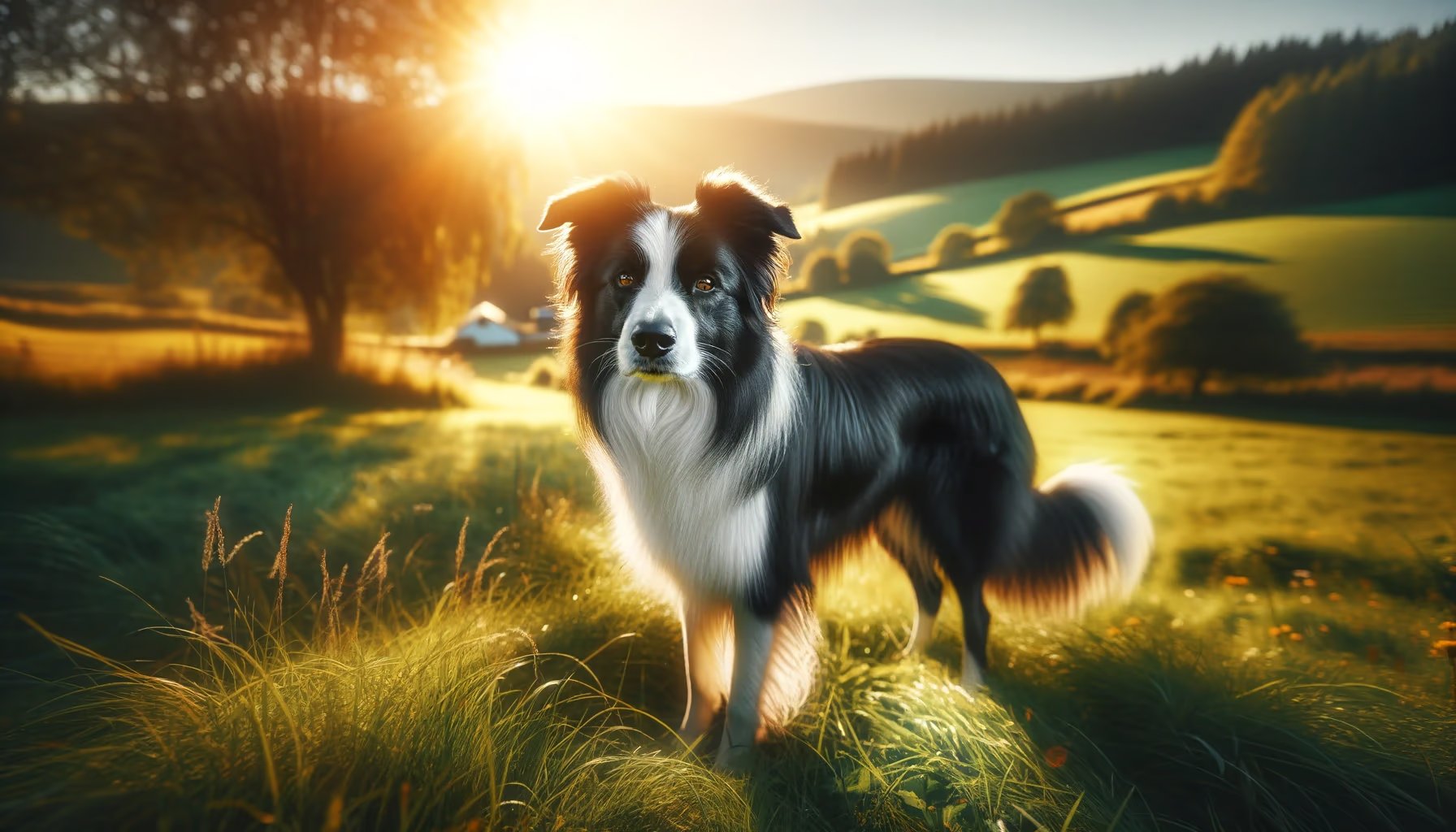 Originally, these dogs were known for their working ability rather than a specific breed standard. The first standard was developed by the International Sheep Dog Society in the United Kingdom, focusing on the dog's herding skills and intelligence. Old Hemp, a dog born in Northumberland in 1893, is considered a progenitor of the modern Border Collie, known for his quiet, powerful herding style.
Originally, these dogs were known for their working ability rather than a specific breed standard. The first standard was developed by the International Sheep Dog Society in the United Kingdom, focusing on the dog's herding skills and intelligence. Old Hemp, a dog born in Northumberland in 1893, is considered a progenitor of the modern Border Collie, known for his quiet, powerful herding style.
The breed gained popularity not only for farm work but also in various dog sports due to its trainability and agility. The Border Collie was officially recognized as a breed in the 20th century and continues to be revered as one of the most capable herding dogs, as well as a beloved companion and competitive sport dog.
Group: Herding Group
Temperament: Border Collies are known for their intelligence, alertness, and responsiveness. They are energetic and enthusiastic, often displaying a strong desire to work and please their owners.
Height: Typically, Border Collies stand about 18-22 inches (46-56 cm) at the shoulder.
Weight: They generally weigh between 30-45 pounds (14-20 kg).
Coat and Color: Their coat can be either short or long and is often dense and weather-resistant. Common colors include black and white, although they can come in various color combinations.
Life Expectancy: Border Collies usually live about 12-15 years.
Activity Level: High; they are extremely energetic and require significant physical and mental exercise.
Trainability: Very high; Border Collies are eager to learn and respond well to training, excelling in obedience and agility.
Socialization: Early socialization is important to prevent shyness or wariness around strangers.
Grooming Needs: Moderate; their coat requires regular brushing to prevent matting, especially for the longer-haired variety.
Health Issues: Generally healthy, but some may be prone to genetic issues like hip dysplasia, collie eye anomaly, and epilepsy.
Adaptability: While adaptable to different living situations, they thrive in environments where they have space to run and tasks to perform.
Living Space Compatibility: Best suited for homes with ample outdoor space; can adapt to smaller spaces if adequately exercised.
Family Situation: Good with families, especially if they are active. They do well with children when socialized properly, but their herding instinct might need to be managed around small kids.
The Border Collie is highly intelligent and active, ideal for energetic households. They require significant exercise and mental engagement. Generally healthy and good with families, these dogs thrive in spacious environments where they can channel their herding instincts and energy. The Kennel Club
Border Terrier
Originating in the rugged border region between England and Scotland, the Border Terrier was bred primarily for fox hunting. In the 18th century, its main role was to assist hunters by driving foxes out of their dens, showcasing its agility and determination. This small but sturdy breed was valued for its ability to navigate the difficult terrain and keep up with the hunters and horses. The Border Terrier's wiry coat provided essential protection against harsh weather, making it a reliable and resilient working dog.
 By the early 20th century, the Border Terrier had gained recognition beyond its hunting prowess. In 1920, it was officially recognized by The Kennel Club in Great Britain.
By the early 20th century, the Border Terrier had gained recognition beyond its hunting prowess. In 1920, it was officially recognized by The Kennel Club in Great Britain.
Group: Terrier Group
Temperament: Border Terriers are known for their friendly, affectionate, and spirited nature. They are adaptable and make excellent family companions.
Height: Typically stands around 10-11 inches (25-28 cm) at the shoulder.
Weight: Usually weighs between 11.5-15.5 pounds (5.2-7 kg).
Coat and Color: They have a distinctive wiry coat, which can be red, grizzle and tan, blue and tan, or wheaten in color.
Life Expectancy: The average lifespan is around 12-15 years.
Activity Level: Border Terriers are active and require regular exercise but are not as high-energy as some other terrier breeds.
Trainability: They are intelligent and generally responsive to training, but their terrier nature can sometimes lead to stubbornness.
Socialization: Good with people and other dogs, especially when socialized from a young age.
Grooming Needs: Moderate; regular brushing and occasional stripping of the coat are necessary.
Health Issues: Generally a healthy breed but can be prone to conditions like hip dysplasia, heart defects, and certain eye problems.
Adaptability: Adaptable to various living situations, including apartments, as long as they get sufficient exercise.
Living Space Compatibility: They can live comfortably in both small and large spaces but need access to outdoor areas for exercise.
Family Situation: Excellent with families, including those with children, and typically get along well with other pets.
The Border Terrier is an adaptable, friendly breed ideal for families and various living situations. With moderate exercise and grooming needs, this intelligent and affectionate dog fits well into active homes, gets along with children and other pets, and makes a loving companion. The Kennel Club
Bull Terrier
The Bull Terrier's history begins in early 19th-century England, where it was initially bred for dog fighting, a popular sport at the time. The breed originated from crossing the Old English Bulldog with the now-extinct White English Terrier, aiming to create a dog that combined the Bulldog's toughness and the Terrier's agility and spirit. After dog fighting was outlawed in the UK, the breed's focus shifted from fighting to becoming a fashionable companion for the upper class.
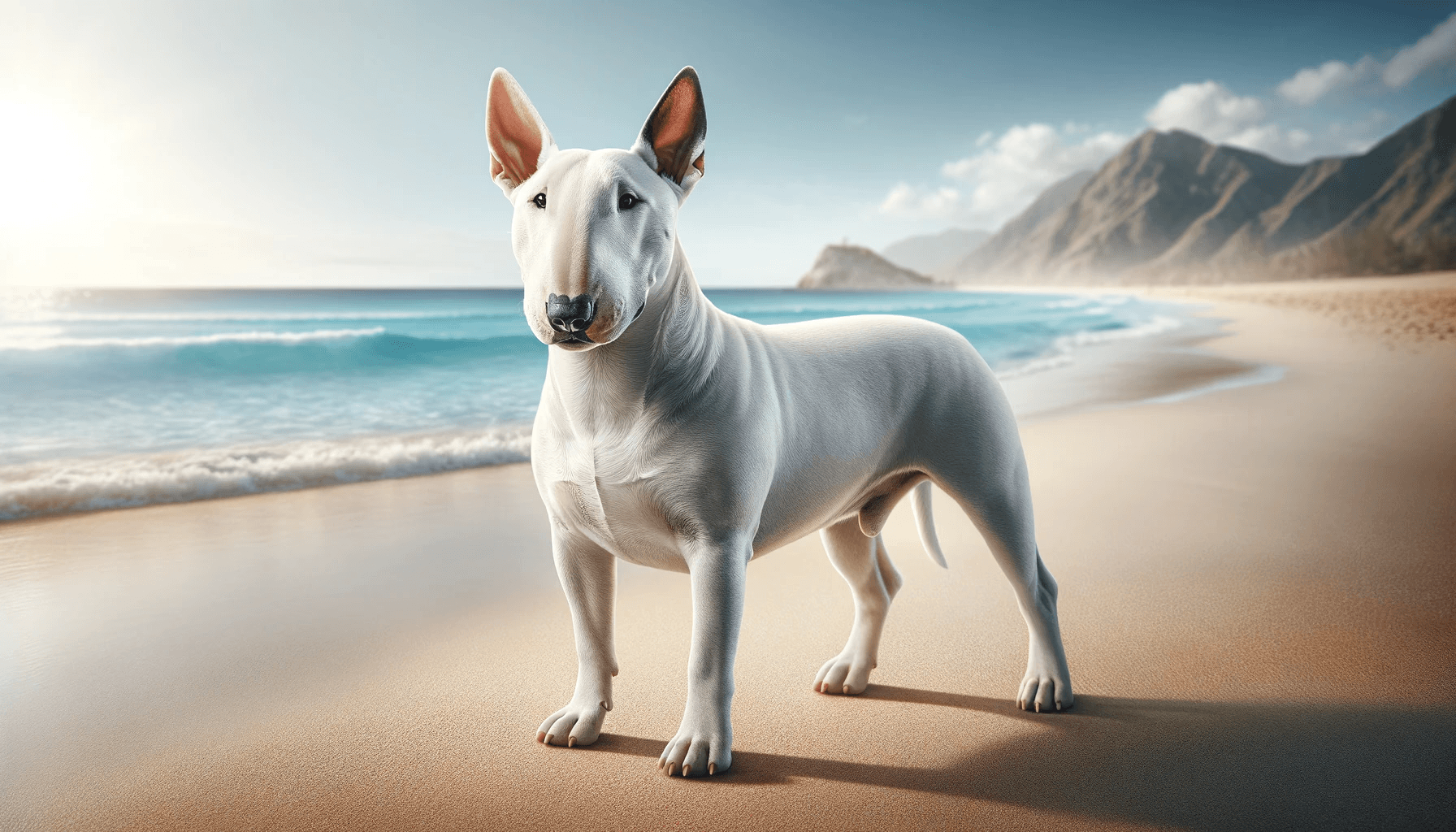 During this transition, breeders focused on refining the Bull Terrier's temperament, making them less aggressive and more suitable as family pets. The distinct egg-shaped head, a hallmark of the breed, became more pronounced in the late 19th century due to selective breeding. Today, the Bull Terrier is known more for its unique appearance, playful nature, and status as a loyal and affectionate companion.
During this transition, breeders focused on refining the Bull Terrier's temperament, making them less aggressive and more suitable as family pets. The distinct egg-shaped head, a hallmark of the breed, became more pronounced in the late 19th century due to selective breeding. Today, the Bull Terrier is known more for its unique appearance, playful nature, and status as a loyal and affectionate companion.
Group: Terrier Group
Temperament: Bull Terriers are known for their bold, affectionate, and playful nature. They are energetic and often have a mischievous streak.
Height: Typically stands about 21-22 inches (53-56 cm) for males and slightly shorter for females.
Weight: Males weigh around 55-65 pounds (25-29 kg), and females are usually slightly lighter.
Coat and Color: They have a short, dense coat that can be white, or colored with various markings, including brindle, black, red, fawn, and tricolor.
Life Expectancy: The average lifespan is around 11-14 years.
Activity Level: High; Bull Terriers require regular exercise to manage their energy levels.
Trainability: They can be challenging to train due to their independent nature but respond well to consistent, positive training methods.
Socialization: Early socialization is crucial to prevent aggression and stubbornness. They generally get along well with people but can be aggressive towards other dogs if not properly socialized.
Grooming Needs: Low; their short coat requires minimal grooming, mainly regular brushing and occasional baths.
Health Issues: Prone to certain health conditions like heart problems, kidney issues, and deafness (particularly in white Bull Terriers).
Adaptability: Can adapt to various living environments but do best in homes where they have space to play and exercise.
Living Space Compatibility: Suitable for both apartments and houses, provided they get enough exercise.
Family Situation: Good with families, especially when raised with them. Their playful and protective nature makes them good companions, but their strength and energy level should be considered around small children.
The Bull Terrier is an energetic and playful breed, known for its unique appearance and affectionate nature. They require regular exercise, consistent training, and early socialization. Suitable for various households, they make loyal and protective family pets, though their robust energy and potential health issues should be considered. With proper care, Bull Terriers are delightful companions. The Kennel Club
Bulldog
The Bulldog, with its distinctive and storied past, is a breed deeply rooted in British history. Originating in the 13th century, Bulldogs were initially bred and used for bull-baiting, a popular medieval sport in England. These early Bulldogs were bred for their toughness and tenacity, necessary traits for grappling with bulls. This period highlighted a much more ferocious and larger animal than the Bulldog of today. However, with the banning of bull-baiting in 1835, the breed faced a period of uncertainty, with its primary purpose no longer relevant.
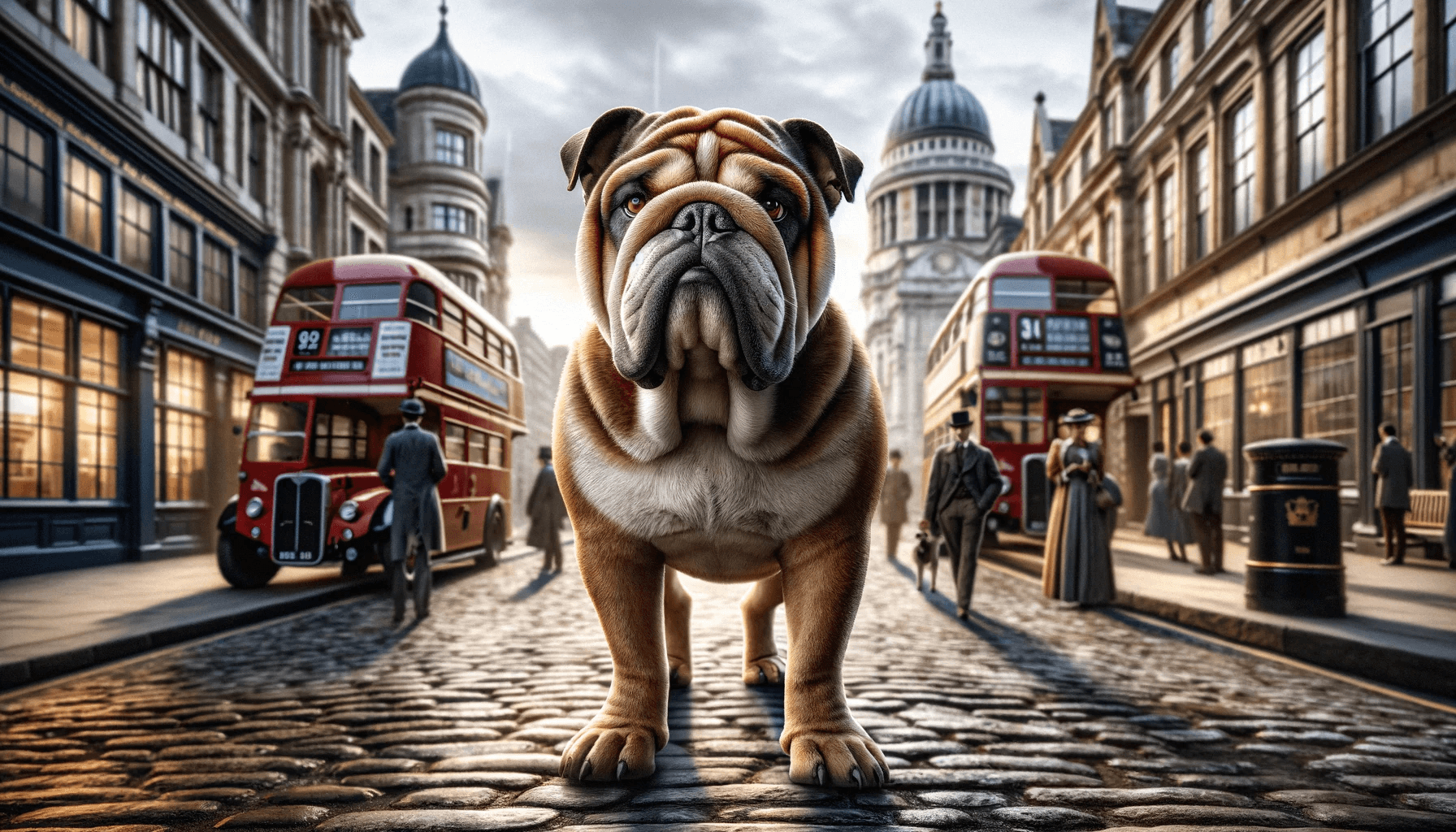 In the years following the prohibition of bull-baiting, breed enthusiasts undertook the task of transforming the Bulldog. They selectively bred for more amiable traits, significantly altering the Bulldog's temperament and physical characteristics. By the late 19th century, the Bulldog had evolved from a fierce combatant to a gentle companion. Its physical appearance also changed, becoming more compact with a broader face and distinctive wrinkles. Officially recognized by The Kennel Club in 1873, the Bulldog came to be seen as a national symbol of courage and determination in the United Kingdom.
In the years following the prohibition of bull-baiting, breed enthusiasts undertook the task of transforming the Bulldog. They selectively bred for more amiable traits, significantly altering the Bulldog's temperament and physical characteristics. By the late 19th century, the Bulldog had evolved from a fierce combatant to a gentle companion. Its physical appearance also changed, becoming more compact with a broader face and distinctive wrinkles. Officially recognized by The Kennel Club in 1873, the Bulldog came to be seen as a national symbol of courage and determination in the United Kingdom.
Group: Non-Sporting Group
Temperament: Bulldogs are known for their calm, courageous, and friendly demeanor. They are affectionate and dependable, often forming strong bonds with their families.
Height: They typically stand about 14-15 inches (36-38 cm) tall at the shoulder.
Weight: The average weight is between 40-50 pounds (18-23 kg) for males and slightly less for females.
Coat and Color: Bulldogs have a short, smooth coat. Common colors include white, fawn, red, or a combination of these, often with brindle patterns or black masks.
Life Expectancy: Their lifespan usually ranges from 8 to 10 years.
Activity Level: Relatively low; Bulldogs require moderate exercise but can be prone to laziness, so regular walks are important.
Trainability: They can be stubborn, but with consistent and patient training, they are capable of learning and following commands.
Socialization: Bulldogs are generally good with other pets and people, but early socialization is recommended to promote well-rounded behavior.
Grooming Needs: Minimal; regular brushing is sufficient, though their facial wrinkles need cleaning to prevent infection.
Health Issues: Prone to various health problems including respiratory issues, hip dysplasia, and skin allergies.
Adaptability: Adaptable to various living situations, including apartments, due to their size and moderate activity level.
Living Space Compatibility: They do well in both apartments and houses, as long as they have a cool, comfortable space, especially in hot weather.
Family Situation: Excellent with families, known for being gentle and patient, particularly with children. Their laid-back nature makes them a good fit for various household environments.
The Bulldog is a beloved, gentle breed known for its affectionate nature, making it a great family pet. Suited for various living environments, it requires moderate exercise and minimal grooming. Owners should be mindful of its health needs. With its friendly disposition, the Bulldog forms strong family bonds and fits well into both active and relaxed households. The Kennel Club
Cavalier King Charles Spaniel
The Cavalier King Charles Spaniel, a toy breed known for its elegance and affectionate nature, has its roots in the royal courts of England. The breed descends from the toy spaniels frequently seen in the court of King Charles II in the 17th century, who was so fond of his spaniels that he decreed they should be allowed in any public place, including the Houses of Parliament. These early spaniels had a longer nose and were more athletic in build than the Cavalier King Charles Spaniel we know today.
 In the 19th century, with the rise of the Victorian era, the breed underwent a transformation. The Pug and other flat-faced breeds were crossed with the original King Charles Spaniels, leading to a shorter snout and domed skull. However, in the 1920s, an American named Roswell Eldridge sought to revive the original appearance of the King Charles Spaniels. He offered a prize at the Crufts Dog Show in London for the best male and female dogs of the "old type." This led to the re-emergence of the breed with the longer nose, which was then named the Cavalier King Charles Spaniel to differentiate it from the shorter-nosed variety, now known as the King Charles Spaniel.
In the 19th century, with the rise of the Victorian era, the breed underwent a transformation. The Pug and other flat-faced breeds were crossed with the original King Charles Spaniels, leading to a shorter snout and domed skull. However, in the 1920s, an American named Roswell Eldridge sought to revive the original appearance of the King Charles Spaniels. He offered a prize at the Crufts Dog Show in London for the best male and female dogs of the "old type." This led to the re-emergence of the breed with the longer nose, which was then named the Cavalier King Charles Spaniel to differentiate it from the shorter-nosed variety, now known as the King Charles Spaniel.
Group: Toy Group
Temperament: Known for their affectionate, gentle, and friendly nature, Cavalier King Charles Spaniels are great companions and family pets. They are sociable, adaptable, and typically get along well with other pets and children.
Height: They stand about 12 to 13 inches (30 to 33 cm) at the shoulder.
Weight: Their weight generally ranges from 13 to 18 pounds (5.9 to 8.2 kg).
Coat and Color: They have a silky, medium-length coat, available in four color patterns: Blenheim (chestnut and white), tricolor (black/white/tan), black and tan, and ruby.
Life Expectancy: The average lifespan is around 9 to 14 years.
Activity Level: Moderate; they enjoy regular walks and play but are also content with lounging and cuddling.
Trainability: Cavaliers are intelligent and eager to please, making them relatively easy to train with positive reinforcement techniques.
Socialization: They are naturally friendly but benefit from early socialization to boost confidence and social skills.
Grooming Needs: Moderate; regular brushing is required to prevent tangles, along with routine ear cleaning and nail trimming.
Health Issues: Prone to certain health problems such as heart conditions (mitral valve disease), syringomyelia, hip dysplasia, and eye issues.
Adaptability: Highly adaptable, they can thrive in both apartments and houses as long as they have companionship and regular exercise.
Living Space Compatibility: They are well-suited to both small and large living spaces, thanks to their adaptable and easygoing nature.
Family Situation: Excellent with families, including those with children and other pets. Their gentle and affectionate demeanor makes them ideal family dogs.
The Cavalier King Charles Spaniel is a beloved companion, known for its affectionate and gentle nature. Ideal for families and adaptable to various living environments, they require moderate grooming and attention to health. Their sociable and easygoing temperament makes them a popular choice for both individuals and families seeking a loving pet. The Kennel Club
Chihuahua
The Chihuahua's history, while predominantly rooted in Mexico, intertwines with British dog breeding, particularly in the breed's refinement and spread across Europe. Believed to have descended from the Techichi, a small dog favored by ancient Mexican civilizations, the Chihuahua we know today emerged more distinctly in the late 19th century. These tiny dogs caught the attention of American and European breeders, including those in Britain, who were fascinated by their diminutive size and lively character.
 In Britain, the Chihuahua gained popularity among dog enthusiasts and breeders who played a significant role in developing the breed's long-coated variety. The smooth-coat (short-haired) and long-coat Chihuahuas, while sharing the same breed standards, offer diversity in appearance and grooming needs, a result of selective breeding practices. Officially recognized by the American Kennel Club in 1904, the Chihuahua's charm and adaptability have made it a beloved companion worldwide, with its British history contributing to the breed's global appeal and diversity.
In Britain, the Chihuahua gained popularity among dog enthusiasts and breeders who played a significant role in developing the breed's long-coated variety. The smooth-coat (short-haired) and long-coat Chihuahuas, while sharing the same breed standards, offer diversity in appearance and grooming needs, a result of selective breeding practices. Officially recognized by the American Kennel Club in 1904, the Chihuahua's charm and adaptability have made it a beloved companion worldwide, with its British history contributing to the breed's global appeal and diversity.
Group: Toy Group
Temperament: Chihuahuas are known for their lively, confident, and often bold personalities. They can be fiercely loyal to their owners and may be wary of strangers.
Height: Typically, Chihuahuas stand about 6-9 inches (15-23 cm) tall.
Weight: They usually weigh between 2-6 pounds (1-3 kg).
Coat and Color: Chihuahuas come in two coat varieties: smooth-coat (short-haired) and long-coat. Their color range is broad, including but not limited to black, white, fawn, chocolate, and gold. They can be solid, marked, or splashed in color.
Life Expectancy: The average lifespan is around 14-16 years.
Activity Level: Moderate; they enjoy being active but their small size means their exercise needs can be met with indoor play and short walks.
Trainability: They can be challenging to train due to their strong-willed nature. Consistent, positive reinforcement methods work best.
Socialization: Early and continuous socialization is crucial to prevent them from becoming overly territorial or aggressive.
Grooming Needs: Smooth-coat Chihuahuas require minimal grooming, while long-coat varieties need regular brushing to prevent tangles.
Health Issues: Common health concerns include dental problems, hypoglycemia, patellar luxation, and heart issues.
Adaptability: Highly adaptable, Chihuahuas are well-suited to apartment living due to their small size.
Living Space Compatibility: They are ideal for small living spaces, including apartments, as long as they have a warm and cozy environment.
Family Situation: Best suited for families with older children or adults, as they may not tolerate the rough play of younger children. They often bond closely with one person.
Chihuahuas are ideal for apartment living and suited for owners who can manage their bold personality and modest exercise needs. Best in homes with older children or adults, they require regular socialization and health care. Their small size and loyalty make them charming, affectionate companions. The Kennel Club
Cocker Spaniel
The Cocker Spaniel, a breed deeply embedded in British history, originated as a skilled hunting dog, primarily used for flushing woodcock in dense brush, which led to its name. Tracing back to the 14th century, these spaniels were renowned for their agility, endurance, and keen hunting abilities.
 The breed diversified into two types over time: the English Cocker Spaniel, retaining closer ties to its British origins and hunting heritage, and the American Cocker Spaniel, a variant developed later in the United States. The English Cocker Spaniel was one of the first breeds recognized by The Kennel Club in England when it was formed in 1873, distinguishing it from other spaniel types.
The breed diversified into two types over time: the English Cocker Spaniel, retaining closer ties to its British origins and hunting heritage, and the American Cocker Spaniel, a variant developed later in the United States. The English Cocker Spaniel was one of the first breeds recognized by The Kennel Club in England when it was formed in 1873, distinguishing it from other spaniel types.
Throughout the 20th century, the Cocker Spaniel, particularly the English variant, continued to be a favorite in Britain, both as a working dog and a companion. The American version, slightly smaller with different physical characteristics, gained popularity in the U.S., leading to its recognition as a separate breed. Today, the Cocker Spaniel, in both its English and American forms, is celebrated for more than its hunting prowess.
Group: Sporting Group
Temperament: Cocker Spaniels are known for their gentle, affectionate, and friendly nature. They are outgoing and sociable, making them excellent companions and family pets.
Height: Typically, they stand about 14-17 inches (36-43 cm) at the shoulder.
Weight: The average weight ranges from 26-34 pounds (12-15 kg).
Coat and Color: Cocker Spaniels have a silky, medium-length coat that can come in a variety of colors, including black, liver, red, and golden, as well as combinations and patterns like roan and ticked.
Life Expectancy: They usually live for about 12-15 years.
Activity Level: Moderate to high; they require regular exercise and enjoy activities like walking, playing, and retrieving.
Trainability: Highly trainable, they respond well to positive reinforcement techniques due to their eagerness to please.
Socialization: Socialization from a young age is important to develop well-rounded behaviors and prevent shyness.
Grooming Needs: High; their coat requires regular grooming, including brushing and professional trimming to maintain its condition and prevent matting.
Health Issues: Prone to certain health issues such as ear infections, eye conditions, and hip dysplasia.
Adaptability: Adaptable to various living environments, including apartments, as long as they receive enough exercise.
Living Space Compatibility: They can thrive in both small and large living spaces, provided they have opportunities for regular exercise and play.
Family Situation: Excellent with families, including those with children. Their friendly and playful nature makes them great family pets, but they should be supervised around very young children due to their energy and enthusiasm.
The Cocker Spaniel is an affectionate and sociable breed, ideal for families. They adapt well to different living situations but require regular exercise and grooming. Known for their friendly disposition, Cocker Spaniels are popular companions, thriving in loving homes where they can be active and engaged. The Kennel Club
Dandie Dinmont Terrier
The Dandie Dinmont Terrier, a distinctive and rare breed, originates from the border region between England and Scotland. Its history is closely tied to the early 18th century and the dogs owned by gypsies and farmers in the Cheviot Hills, used for hunting otters and badgers. The breed's unique name is credited to Sir Walter Scott's 1814 novel "Guy Mannering," in which a character named Dandie Dinmont owns a group of similar terriers. This literary reference led to the adoption of the name "Dandie Dinmont Terrier" for the breed.
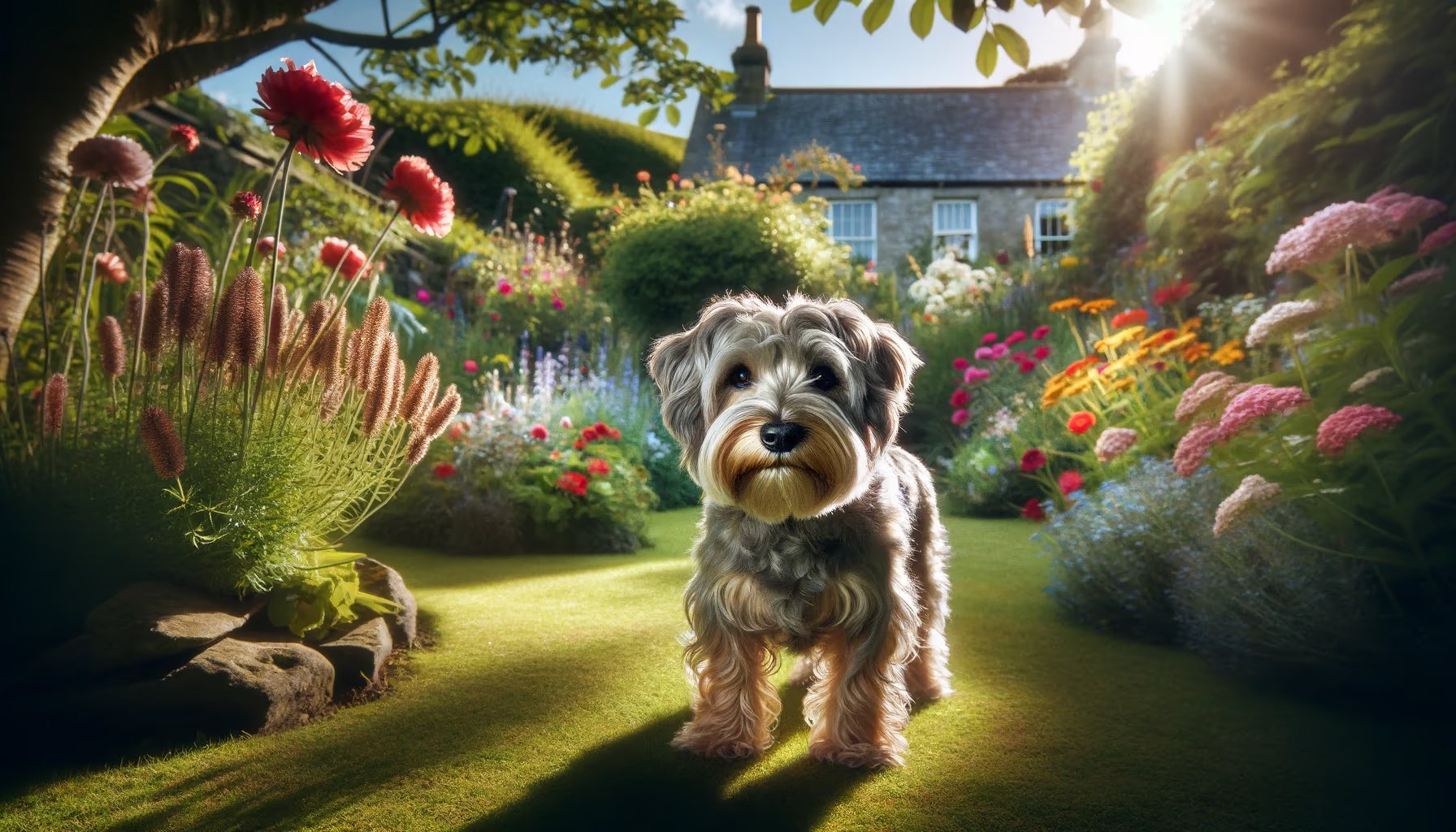
Characterized by its long body, distinctive 'top-knot' of hair on the head, and short legs, the Dandie Dinmont Terrier was recognized as a distinct breed in the mid-19th century. It was one of the first breeds to be registered by The Kennel Club when it was formed in 1873. Originally bred for hunting, the Dandie Dinmont Terrier's gentle and affectionate nature also made it a popular companion. While it has never been among the most numerous of terriers, its unique appearance and endearing character have earned it a loyal following.
Group: Terrier Group
Temperament: Dandie Dinmont Terriers are known for their independent, intelligent, and affectionate nature. They are calm and reserved, yet have a brave and tenacious side typical of terriers.
Height: Typically stands about 8-11 inches (20-28 cm) at the shoulder.
Weight: Usually weighs between 18-24 pounds (8-11 kg).
Coat and Color: They have a distinctive double coat with a soft undercoat and a harder topcoat. The breed is known for its unique 'top-knot' of hair on the head. Coat colors include pepper (grayish) and mustard (reddish-brown).
Life Expectancy: Their average lifespan is around 12-15 years.
Activity Level: Moderate; they enjoy daily walks and playtime but are not overly energetic.
Trainability: Fairly trainable, but their independent nature can sometimes pose a challenge. They respond best to consistent, positive training methods.
Socialization: They are generally friendly but can be reserved with strangers. Early socialization is important to ensure they are well-rounded.
Grooming Needs: Moderate; regular brushing is required to maintain their coat, and occasional trimming may be necessary.
Health Issues: Generally a healthy breed but can be prone to issues like spinal problems, hypothyroidism, and glaucoma.
Adaptability: Adaptable to various living environments, including apartments, as long as they get regular exercise.
Living Space Compatibility: They can live comfortably in both small and large spaces, ideally with access to a yard or garden.
Family Situation: Good with families, including those with children. They generally get along well with other pets but might chase smaller animals due to their hunting instincts.
The Dandie Dinmont Terrier is a distinctive and affectionate breed, suitable for various living environments, including apartments and homes with yards. With moderate grooming and exercise needs, they are a good fit for families, including those with children. While relatively rare, these terriers are cherished for their unique appearance and independent, yet loving nature. Owners should be mindful of their specific health requirements. The Kennel Club
Foxhound
The English Foxhound has a storied past that begins in late 16th-century Britain, where fox hunting emerged as a favored sport among the nobility. To meet the demands of this sport, a breed capable of enduring long hunts over diverse terrain was essential. The English Foxhound was meticulously developed by crossing various hound breeds, including the Greyhound for speed, the Fox Terrier for its keen hunting instincts, and the Bulldog for determination. This breeding program aimed to create a hound with excellent stamina, a strong sense of smell, and the ability to operate cohesively within a pack.
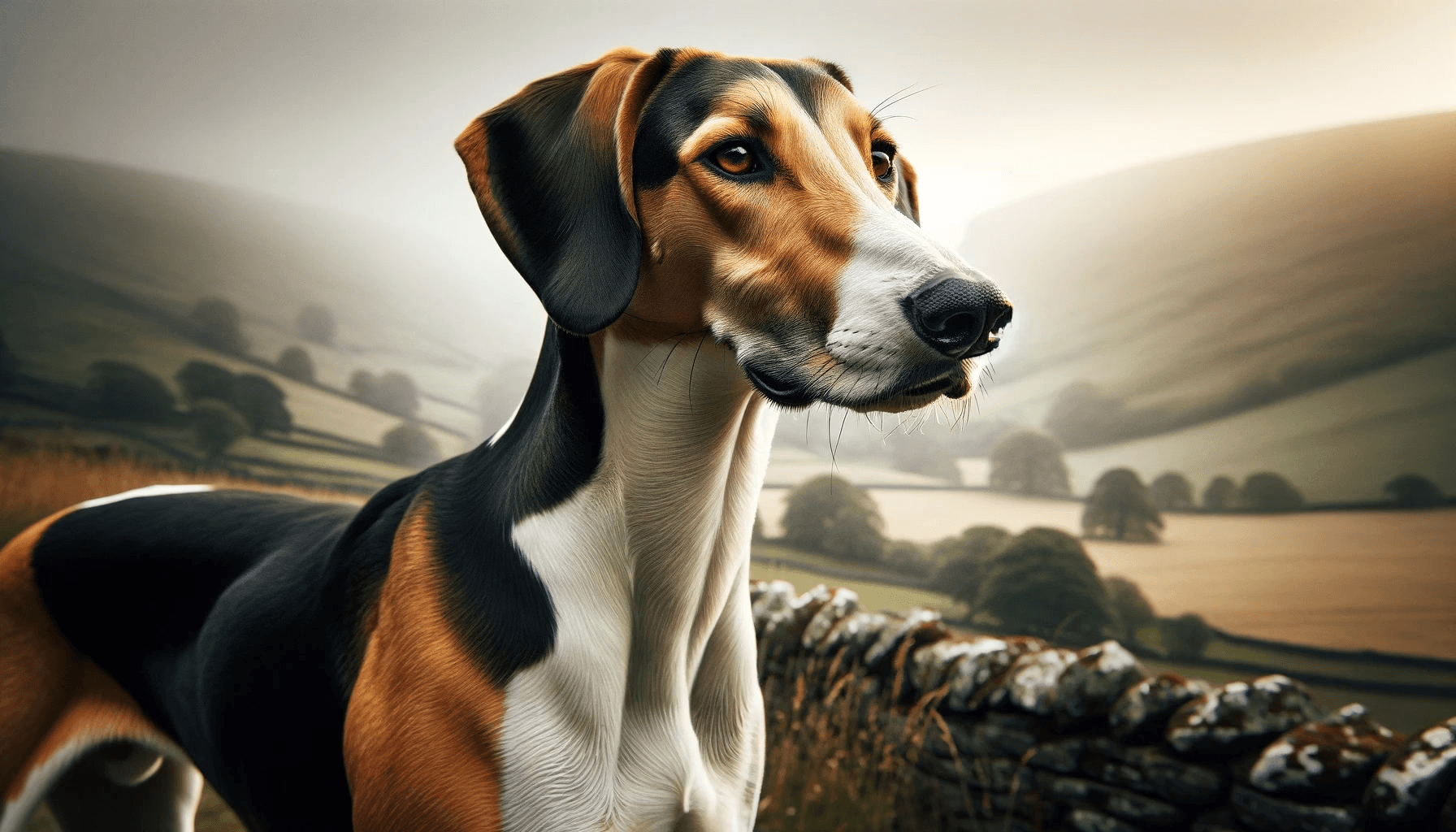 Throughout the 17th and 18th centuries, the breeding of the English Foxhound was a matter of great interest and record-keeping, especially among foxhunt masters. The breed was finely tuned to the requirements of fox hunting, necessitating hounds that could relentlessly pursue foxes across long distances and varied landscapes, all while being responsive to the hunters' commands. The English Foxhound significantly influenced the development of other hound breeds and is notably a progenitor to many American hound breeds.
Throughout the 17th and 18th centuries, the breeding of the English Foxhound was a matter of great interest and record-keeping, especially among foxhunt masters. The breed was finely tuned to the requirements of fox hunting, necessitating hounds that could relentlessly pursue foxes across long distances and varied landscapes, all while being responsive to the hunters' commands. The English Foxhound significantly influenced the development of other hound breeds and is notably a progenitor to many American hound breeds.
Group: Hound Group
Temperament: English Foxhounds are known for their friendly, sociable, and gentle nature. They are typically good-natured and get along well with other dogs, given their pack-hunting background.
Height: They stand about 24 inches (61 cm) tall at the shoulder.
Weight: Typically, they weigh between 65-75 pounds (29-34 kg).
Coat and Color: Their coat is short and dense, providing good protection in all weathers. The coat colors include combinations of black, white, and tan.
Life Expectancy: The average lifespan is about 10-13 years.
Activity Level: Very high; they require a lot of exercises, ideally with opportunities to run and explore in safe environments.
Trainability: They are intelligent and trainable but may require patience and consistency due to their independent nature.
Socialization: Socialization is important, especially since they are used to being in a pack. They generally get along well with other dogs.
Grooming Needs: Low; their short coat requires minimal grooming, though regular brushing is beneficial.
Health Issues: Generally a healthy breed but can be prone to certain conditions like hip dysplasia and kidney issues.
Adaptability: They are best suited to rural or suburban environments where they can have plenty of space to exercise.
Living Space Compatibility: Due to their size and high energy levels, they are better suited to homes with large yards or access to open spaces.
Family Situation: Good with families, especially active ones that can meet their exercise needs. Their friendly disposition makes them suitable companions, but their energy and size might be overwhelming for very small children.
The English Foxhound is ideal for active families and suitable for rural or suburban homes due to its high energy and exercise needs. Known for being sociable and good-natured, they thrive in environments where they can have plenty of outdoor activity. While their pack mentality suits a home with other dogs, their friendly temperament makes them great family companions, provided their specific exercise and space requirements are met. The Kennel Club
English Setter
The English Setter, with roots tracing back to 14th-century spaniels, has evolved over centuries in England as a skilled bird setting dog. Initially bred to assist hunters by 'setting'—crouching near birds to indicate their location, the breed's development into the elegant gundog we recognize today began in earnest during the 19th century. Key to this development was Edward Laverack, who dedicated over half a century to refining the breed. Laverack focused on enhancing traits like intelligence, a keen sense of smell, and the breed's now-signature beautiful speckled coat. His efforts established the English Setter's distinct appearance and versatile hunting skills.
 Another significant contributor to the breed's history was R. Purcell Llewellin, who introduced new lines to improve field performance. Officially recognized by The Kennel Club in the late 1800s, the English Setter has since transitioned from a premier hunting dog to a beloved show ring and family companion.
Another significant contributor to the breed's history was R. Purcell Llewellin, who introduced new lines to improve field performance. Officially recognized by The Kennel Club in the late 1800s, the English Setter has since transitioned from a premier hunting dog to a beloved show ring and family companion.
Group: Sporting Group
Temperament: English Setters are known for their friendly, gentle, and affectionate nature. They are sociable, good with families, and typically have a calm demeanor.
Height: They usually stand about 24-27 inches (61-69 cm) at the shoulder.
Weight: English Setters typically weigh between 45-80 pounds (20-36 kg).
Coat and Color: They have a long, silky coat with feathering on the legs, tail, and ears. Coat colors include blue belton (white with black markings), orange belton, lemon belton, liver belton, and tricolor.
Life Expectancy: The average lifespan is around 11-12 years.
Activity Level: Moderate to high; they enjoy regular exercise and have plenty of stamina.
Trainability: Generally easy to train, they respond well to positive reinforcement due to their eagerness to please.
Socialization: They are naturally friendly but benefit from early socialization to develop well-rounded behaviors.
Grooming Needs: High; their coat requires regular brushing to prevent matting and tangling, and they may need professional grooming.
Health Issues: Prone to certain health conditions such as hip dysplasia, deafness, and thyroid issues.
Adaptability: Adaptable to various living environments, but they do best with access to outdoor space for exercise.
Living Space Compatibility: Ideally suited for homes with yards but can adapt to apartment living if given sufficient exercise.
Family Situation: Excellent with families, including those with children. Their friendly and playful nature makes them great family pets.
The English Setter is a gentle and affectionate breed, ideal for families and active households. They adapt well to various living conditions, provided they have enough exercise and space. With their friendly nature and ease of training, they make excellent companions. Regular grooming and attention to health are important for their well-being. The Kennel Club
English Springer Spaniel
The English Springer Spaniel's history in Britain traces back to its use in the Renaissance period as a hunting dog, adept in flushing and retrieving game. The breed's name reflects its ability to "spring" game from hiding. Initially, English Springer Spaniels and Cocker Spaniels were classified together, with size being the primary differentiator: larger dogs were used for flushing game, while smaller ones, adept at navigating dense underbrush, were employed for hunting woodcock.
 This functional distinction in size and role gradually led to the recognition of the English Springer Spaniel as a separate breed, formalized by The Kennel Club in the UK in 1902. Renowned for their endurance, intelligence, and agility, these spaniels excelled in bird flushing and retrieving. While they retain their esteemed status as skilled working dogs, English Springer Spaniels have also gained popularity as companion animals, beloved for their friendly and adaptable nature.
This functional distinction in size and role gradually led to the recognition of the English Springer Spaniel as a separate breed, formalized by The Kennel Club in the UK in 1902. Renowned for their endurance, intelligence, and agility, these spaniels excelled in bird flushing and retrieving. While they retain their esteemed status as skilled working dogs, English Springer Spaniels have also gained popularity as companion animals, beloved for their friendly and adaptable nature.
Group: Sporting Group
Temperament: The English Springer Spaniel is known for being friendly, eager to please, and enthusiastic. They are sociable dogs with a cheerful disposition, making them great family pets.
Height: Typically stands about 19-20 inches (48-51 cm) for males and 18-19 inches (46-48 cm) for females.
Weight: Usually weighs between 40-50 pounds (18-23 kg).
Coat and Color: They have a medium-length coat, which can be either flat or wavy, and comes in a variety of colors, most commonly liver and white or black and white.
Life Expectancy: The average lifespan is around 12-14 years.
Activity Level: High; they require plenty of exercises and enjoy activities like running, playing, and swimming.
Trainability: Highly trainable, they are intelligent and quick learners, responding well to positive reinforcement techniques.
Socialization: They are generally friendly with other dogs and people, but early socialization is recommended to promote well-rounded behavior.
Grooming Needs: Moderate; regular brushing is needed to maintain their coat and prevent matting, and they may require occasional professional grooming.
Health Issues: Prone to certain health conditions such as hip dysplasia, ear infections, and eye problems like progressive retinal atrophy.
Adaptability: Adaptable to various living situations, but they thrive in homes with access to outdoor space.
Living Space Compatibility: They do best in homes with yards but can adapt to apartment living if given sufficient exercise.
Family Situation: Excellent with families, including those with children. Their playful and affectionate nature makes them a compatible companion for active households.
The English Springer Spaniel is an energetic and affable breed, ideal for active families. They adapt well to different living environments but benefit from regular exercise and space to play. Known for their sociability and trainability, these spaniels are great with children and other pets, making them a popular choice for family companionship. The Kennel Club
English Toy Terrier
The English Toy Terrier's lineage traces back to the 16th century in Britain, where it evolved from the Black and Tan Terrier, one of the oldest native terrier breeds. Initially, these terriers were valued for their rat-catching abilities, excelling in the sport of rat-baiting, which was widely popular in Victorian England. Their agility and prowess in these rat pits made them a favorite among spectators, showcasing the breed's speed and tenacity.
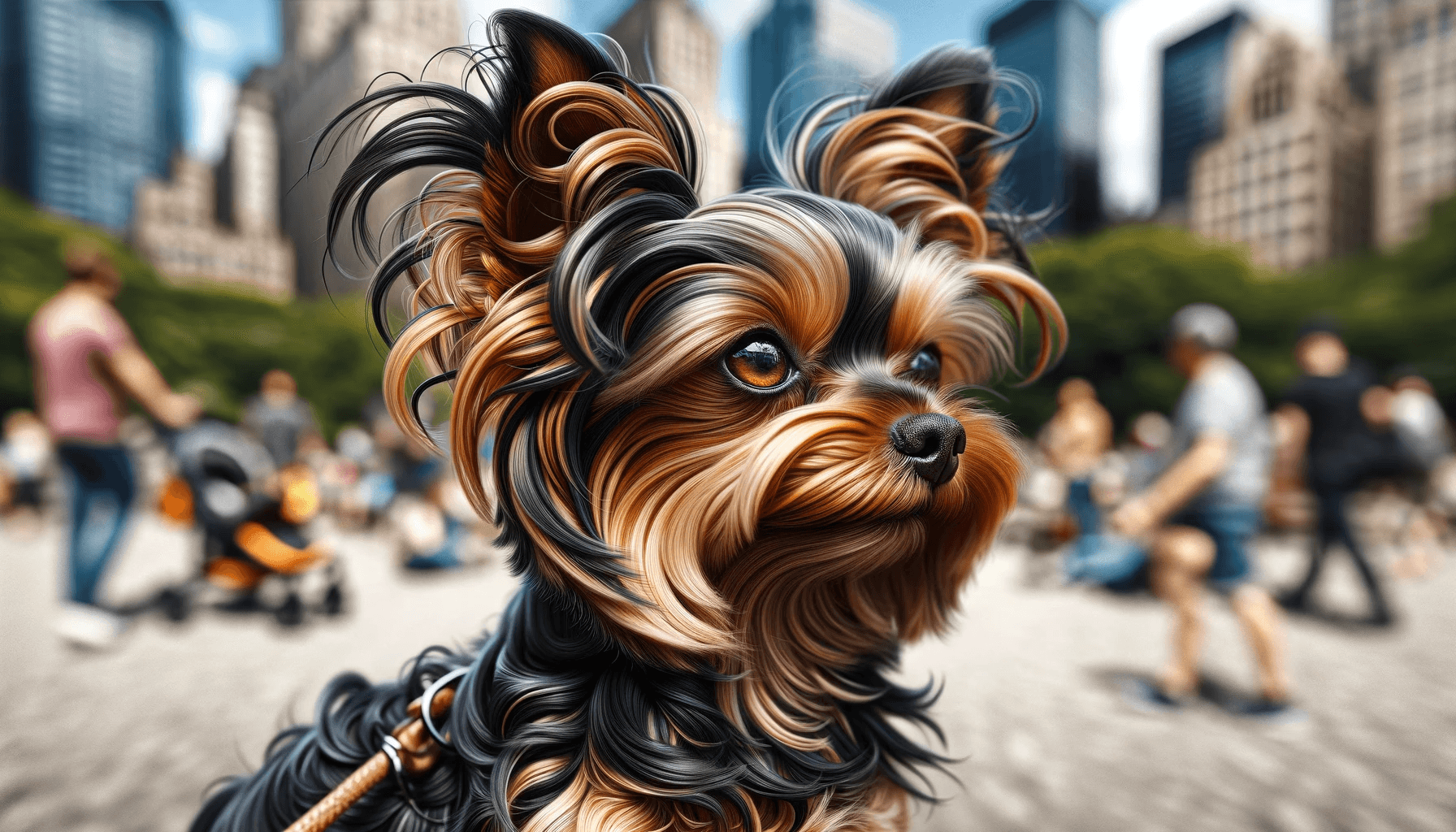 As the 19th century progressed and rat-baiting declined, the Black and Tan Terrier began its transformation into a companion dog. Selective breeding focused on reducing size and enhancing the breed's elegant features, leading to the emergence of the English Toy Terrier. This breed was distinguished from its larger relative, the Manchester Terrier, by its more refined and diminutive stature. The English Toy Terrier is characterized by its sleek black and tan coat, distinctive candle-flame shaped ears, and graceful build.
As the 19th century progressed and rat-baiting declined, the Black and Tan Terrier began its transformation into a companion dog. Selective breeding focused on reducing size and enhancing the breed's elegant features, leading to the emergence of the English Toy Terrier. This breed was distinguished from its larger relative, the Manchester Terrier, by its more refined and diminutive stature. The English Toy Terrier is characterized by its sleek black and tan coat, distinctive candle-flame shaped ears, and graceful build.
Group: Toy Group
Temperament: English Toy Terriers are known for being alert, intelligent, and loyal. They have a lively and affectionate nature, making them excellent companions.
Height: Typically stands about 10-12 inches (25-30 cm) at the shoulder.
Weight: Usually weighs between 6-8 pounds (2.7-3.6 kg).
Coat and Color: They have a short, glossy coat that is predominantly black with distinct tan markings.
Life Expectancy: The average lifespan is around 12-13 years.
Activity Level: Moderate; they enjoy regular walks and playtime but are also content with indoor activities.
Trainability: Highly trainable due to their intelligence, but they can have a stubborn streak. Consistent, positive training methods work best.
Socialization: Early socialization is important to prevent them from becoming shy or reserved.
Grooming Needs: Low; their short coat requires minimal grooming, making upkeep relatively easy.
Health Issues: Generally a healthy breed but can be prone to patellar luxation, heart conditions, and eye problems.
Adaptability: Highly adaptable, they can thrive in both apartments and houses as long as their exercise needs are met.
Living Space Compatibility: Suitable for small living spaces, including apartments, due to their size and moderate activity level.
Family Situation: Good with families, especially those who can provide regular interaction and play. They may be better suited to households with older children due to their small size.
The English Toy Terrier is an alert, loyal, and affectionate breed, ideal for apartment living and suited to families with older children. They require moderate exercise and minimal grooming. Known for their intelligence and playful nature, they make engaging and low-maintenance companions. The Kennel Club
Field Spaniel
The Field Spaniel, a breed deeply rooted in British dog breeding history, emerged in the late 19th century, initially as a longer-bodied variant of the Cocker Spaniel. Its development coincided with the growing popularity of dog shows, where certain physical traits were exaggerated for aesthetic appeal. This led to the Field Spaniel's distinctive long and low body shape. However, early breeders also incorporated traits from other breeds like the Sussex Spaniel and the English Water Spaniel to enhance its field capabilities. Despite this, the breed's exaggerated show traits eventually hindered its effectiveness as a working dog, leading to a decline in its popularity for practical fieldwork.
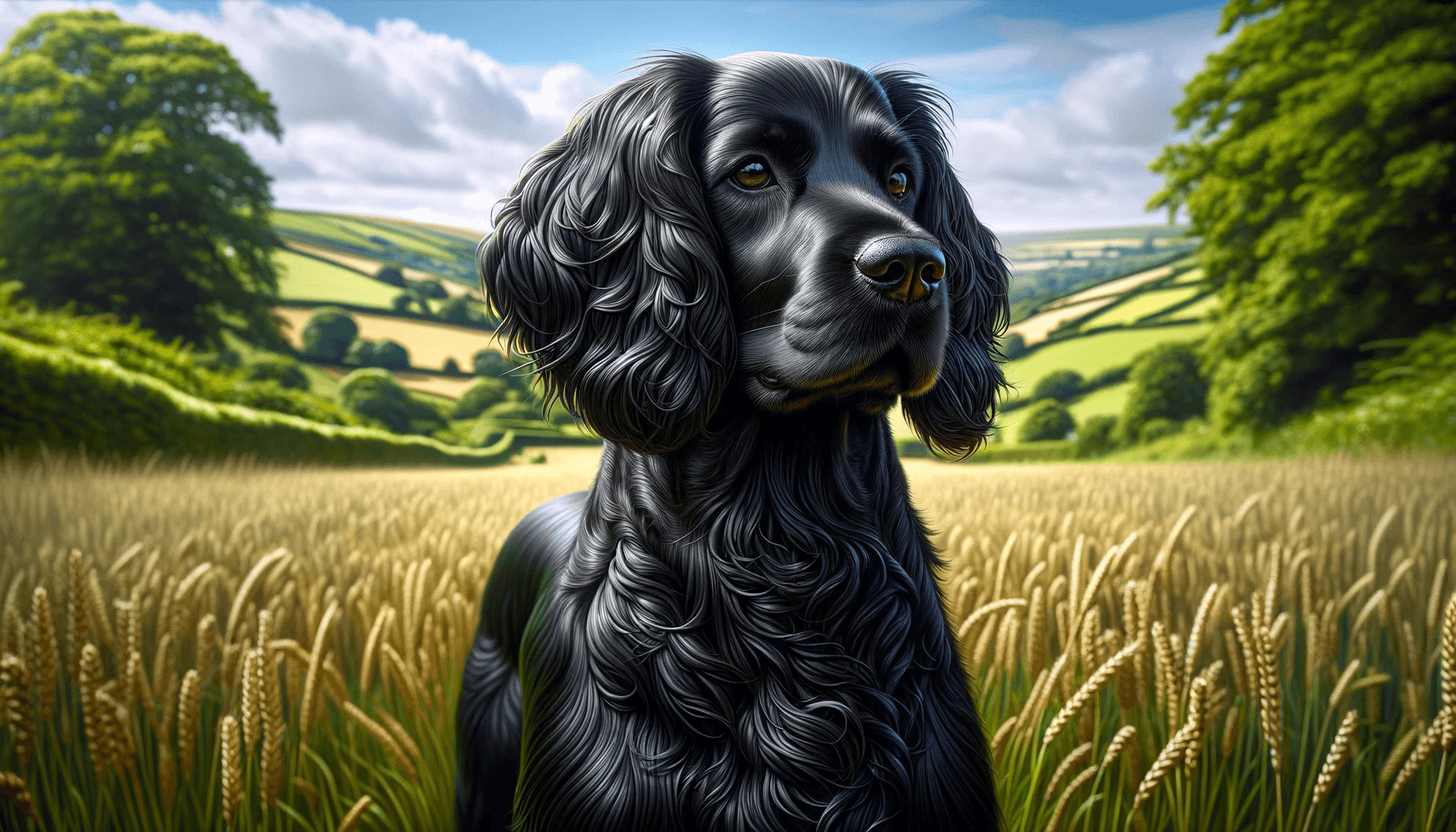 By the mid-20th century, the Field Spaniel was on the brink of extinction, primarily due to breeding practices that prioritized appearance over function. A concerted effort by dedicated breeders reversed this trend, focusing on restoring the breed's health, temperament, and working abilities. This revival saw the Field Spaniel re-emerge not just as a capable field dog but also as a gentle and affectionate family pet.
By the mid-20th century, the Field Spaniel was on the brink of extinction, primarily due to breeding practices that prioritized appearance over function. A concerted effort by dedicated breeders reversed this trend, focusing on restoring the breed's health, temperament, and working abilities. This revival saw the Field Spaniel re-emerge not just as a capable field dog but also as a gentle and affectionate family pet.
Group: Sporting Group
Temperament: Field Spaniels are known for their docile, sensitive, and affectionate nature. They are intelligent and generally good-natured, making them excellent companions.
Height: Typically stands about 17-18 inches (43-46 cm) at the shoulder.
Weight: Usually weighs between 35-50 pounds (16-23 kg).
Coat and Color: They have a long, dense, and glossy coat. Common colors include black, liver, and combinations of these with tan markings.
Life Expectancy: The average lifespan is around 10-12 years.
Activity Level: Moderate; they require regular exercise but are not as high-energy as some other spaniel breeds.
Trainability: Highly trainable due to their intelligence and eagerness to please, though they can be sensitive, so gentle training methods work best.
Socialization: They benefit from early socialization to develop confidence, as they can be reserved with strangers.
Grooming Needs: Moderate to high; regular brushing is necessary to prevent matting, and they may need occasional professional grooming.
Health Issues: Generally healthy, but can be prone to hip dysplasia, ear infections, and eye conditions.
Adaptability: Adaptable to various living situations, including both city and country living.
Living Space Compatibility: Suitable for homes with enough space for regular exercise, including a backyard.
Family Situation: Good with families, including those with children. Their gentle disposition makes them a compatible companion for family environments.
The Field Spaniel is a gentle, intelligent breed ideal for families, adaptable to both city and rural living. They require regular exercise and grooming. Known for their affectionate nature, they are well-suited to households with children, thriving in a loving environment. Their moderate activity level and friendly disposition make them a cherished companion in many homes. The Kennel Club
Flat-Coated Retriever
The Flat-Coated Retriever, developed in mid-19th century Britain, originated from a blend of now-extinct breeds like the St. John’s Water Dog, along with various retriever types, setters, spaniels, and sheepdogs. This breed was specifically crafted to cater to hunters' needs for a dog proficient in retrieving game from both water and land. Renowned for its field skills, especially in bird retrieving, the Flat-Coated Retriever became popular for its working capabilities and later, for its elegant appearance and cheerful nature, as dog shows gained prominence towards the end of the 19th century. Recognized by The Kennel Club in 1915, the breed enjoyed widespread popularity in Britain before experiencing a significant decline during the World Wars.
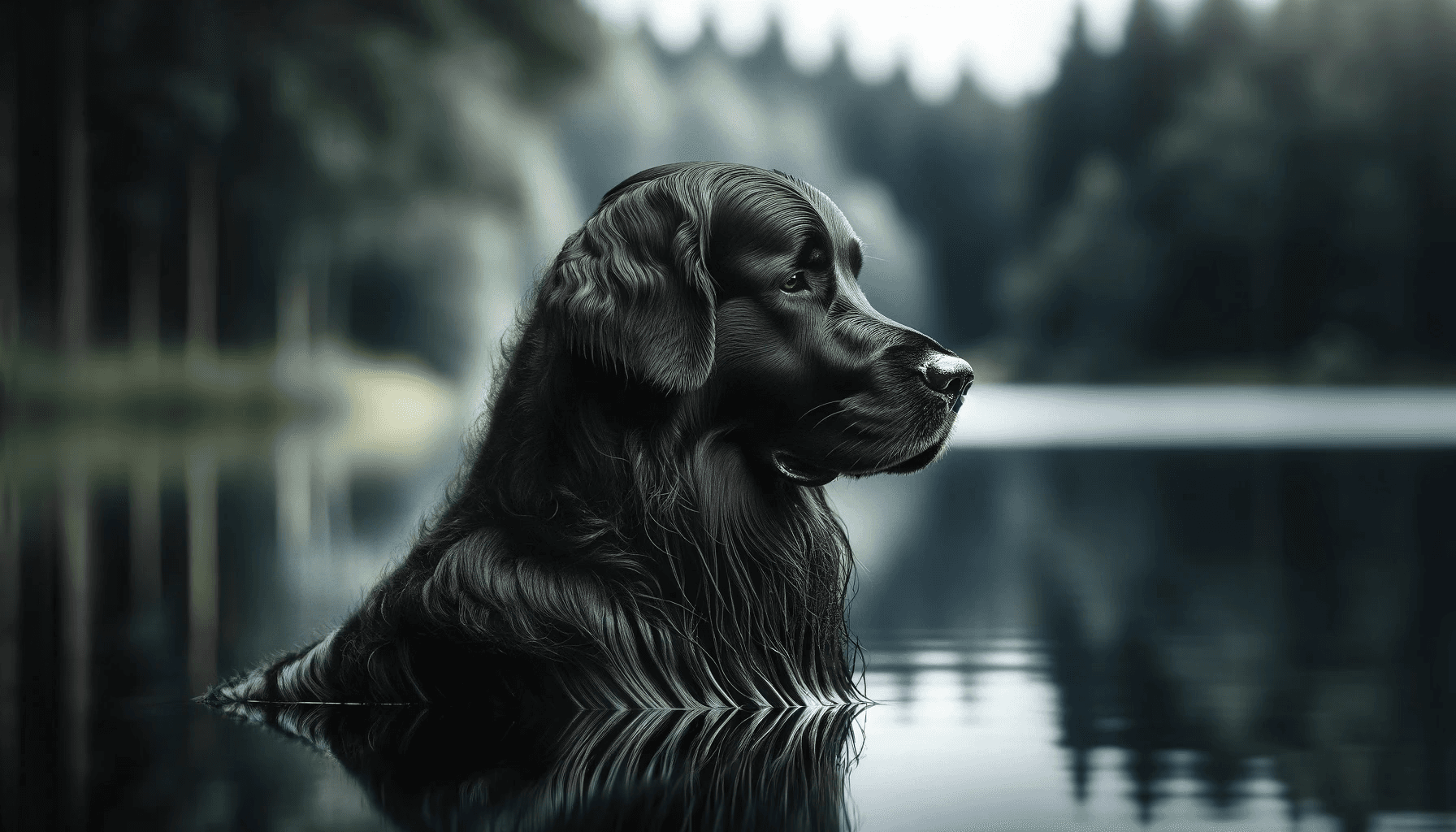 In the post-World War II era, the Flat-Coated Retriever faced stiff competition from other retriever breeds like the Labrador and Golden Retriever, leading to a decrease in its numbers. Nonetheless, the latter half of the 20th century saw a revival of the breed thanks to the efforts of dedicated enthusiasts.
In the post-World War II era, the Flat-Coated Retriever faced stiff competition from other retriever breeds like the Labrador and Golden Retriever, leading to a decrease in its numbers. Nonetheless, the latter half of the 20th century saw a revival of the breed thanks to the efforts of dedicated enthusiasts.
Group: Sporting Group
Temperament: Flat-Coated Retrievers are known for their friendly, outgoing, and optimistic nature. They are sociable and have a playful, enthusiastic demeanor.
Height: Typically, males stand about 23-24.5 inches (58-62 cm) tall, and females stand about 22-23.5 inches (56-60 cm).
Weight: Males usually weigh between 60-80 pounds (27-36 kg), and females weigh between 55-70 pounds (25-32 kg).
Coat and Color: They have a dense, flat-lying coat that is water-resistant. Common colors are solid black or liver.
Life Expectancy: The average lifespan is around 10-12 years.
Activity Level: High; they are energetic and require regular, vigorous exercise.
Trainability: Highly trainable due to their intelligence and desire to please, making them excellent candidates for obedience and agility training.
Socialization: They are naturally friendly but benefit from early socialization to foster well-rounded behavior.
Grooming Needs: Moderate; regular brushing is required to maintain their coat and minimize shedding.
Health Issues: Prone to certain health issues, including hip dysplasia, cancer, and ear infections.
Adaptability: Adaptable to various living environments, but they thrive in homes where they can get plenty of exercise and outdoor play.
Living Space Compatibility: Best suited to homes with yards; can adapt to apartment living if given enough exercise.
Family Situation: Excellent with families, good with children, and generally get along well with other pets. Their friendly and playful nature makes them ideal companions for active households.
The Flat-Coated Retriever is a sociable and energetic dog, ideal for active families. Known for its friendly nature and playfulness, it requires regular exercise and grooming. Adaptable to different living situations, this breed thrives in environments where it can stay active and engaged, making it a great companion for households with children and other pets. The Kennel Club
Fox Terrier (Smooth ve Wire)
The Fox Terrier, encompassing the Smooth and Wire varieties, boasts a rich history in Britain, originating in the 17th century. These breeds were specifically developed for fox hunting, tasked with driving foxes from their dens. The Fox Terrier's agility, keen sense of smell, and bold disposition made it highly effective in this role. Initially, the Smooth and Wire Fox Terriers were interbred, with little distinction made between the two.
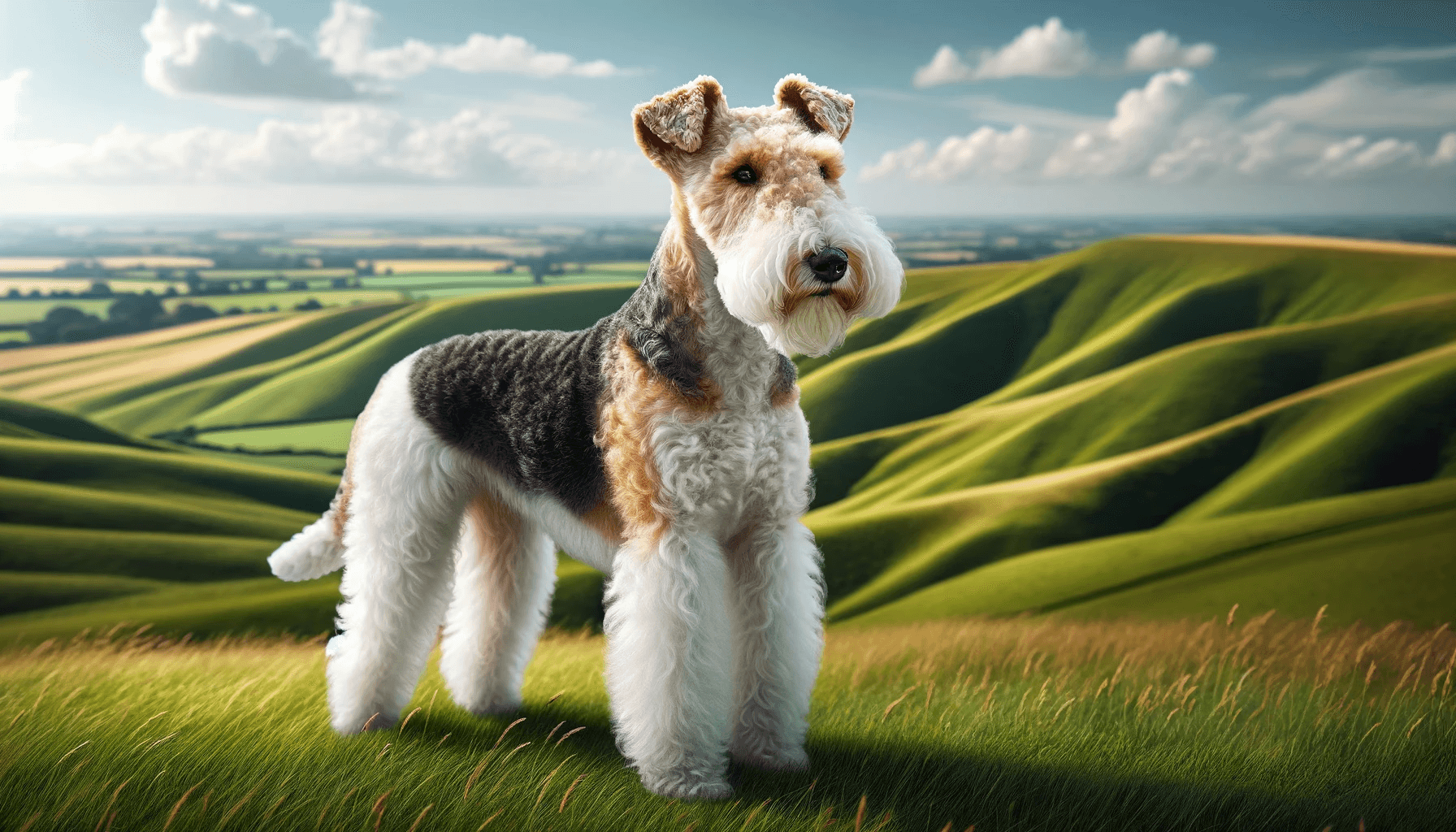 The Smooth variety emerged from a mix of existing terrier breeds with Beagles and Bull Terriers, enhancing its agility and determination. The Wire variety likely evolved from crosses between rough-coated black and tan terriers and Smooth Fox Terriers, resulting in a dog suited to more challenging terrains with its wiry coat.
The Smooth variety emerged from a mix of existing terrier breeds with Beagles and Bull Terriers, enhancing its agility and determination. The Wire variety likely evolved from crosses between rough-coated black and tan terriers and Smooth Fox Terriers, resulting in a dog suited to more challenging terrains with its wiry coat.
By the late 19th century, the Fox Terrier had become immensely popular in Britain, not only as a skilled hunting companion but also as a beloved show dog. Recognized as distinct varieties by The Kennel Club in 1876, both the Smooth and Wire Fox Terriers have since enjoyed fame beyond the hunting field. Known for their lively and spirited character, these breeds have become well-loved companion animals.
Group: Terrier Group
Temperament: Both Smooth and Wire Fox Terriers are known for their energetic, alert, and intelligent nature. They are playful, bold, and can be quite independent.
Height: Typically stands about 15-16 inches (38-41 cm) at the shoulder.
Weight: Usually weighs between 15-19 pounds (7-9 kg).
Coat and Color: Smooth Fox Terrier, Has a short, smooth coat. Common colors are white with black or tan markings. Wire Fox Terrier, Features a dense, wiry coat. Colors are similar to the Smooth variety, predominantly white with black or tan markings.
Life Expectancy: The average lifespan is around 12-15 years.
Activity Level: High; they require plenty of exercises and enjoy active playtime.
Trainability: Intelligent and trainable but can be stubborn. Consistent, positive training methods work best.
Socialization: Early socialization is important to manage their strong terrier instincts, especially around other animals.
Grooming Needs: Smooth Fox Terrier, Low; requires basic grooming.Wire Fox Terrier, Moderate; needs regular brushing and occasional professional grooming to maintain the coat.
Health Issues: Generally healthy but can be prone to certain conditions like deafness, patellar luxation, and eye disorders.
Adaptability: Adaptable to various living environments, but they do best with access to outdoor space.
Living Space Compatibility: Can live in apartments if adequately exercised, but a house with a yard is ideal.
Family Situation: Good with families and generally do well with children, but their high energy and strong personality might be overwhelming for very young kids.
Fox Terriers, encompassing both Smooth and Wire types, are lively and intelligent, ideal for active households. They adapt well to different living spaces but thrive with regular exercise. These breeds are trainable but require consistent guidance. Suitable for families, they do best with older children due to their energetic nature. Their grooming needs vary, with Wire Fox Terriers needing more care. In general, Fox Terriers are spirited companions for those who enjoy an active and engaging dog. The Kennel Club
Golden Retriever
The Golden Retriever's journey began in the Scottish Highlands in the late 19th century, bred by Lord Tweedmouth, Dudley Marjoribanks, with the intent of creating an ideal gundog for the rainy climate and rugged landscape. Starting with a now-extinct yellow-colored Retriever and the Tweed Water Spaniel, known for its swimming prowess, Lord Tweedmouth aimed to produce a breed proficient in retrieving game from both land and water. Further breeding involved the Irish Setter and Bloodhound, contributing to the development of the breed's characteristics and skill set.
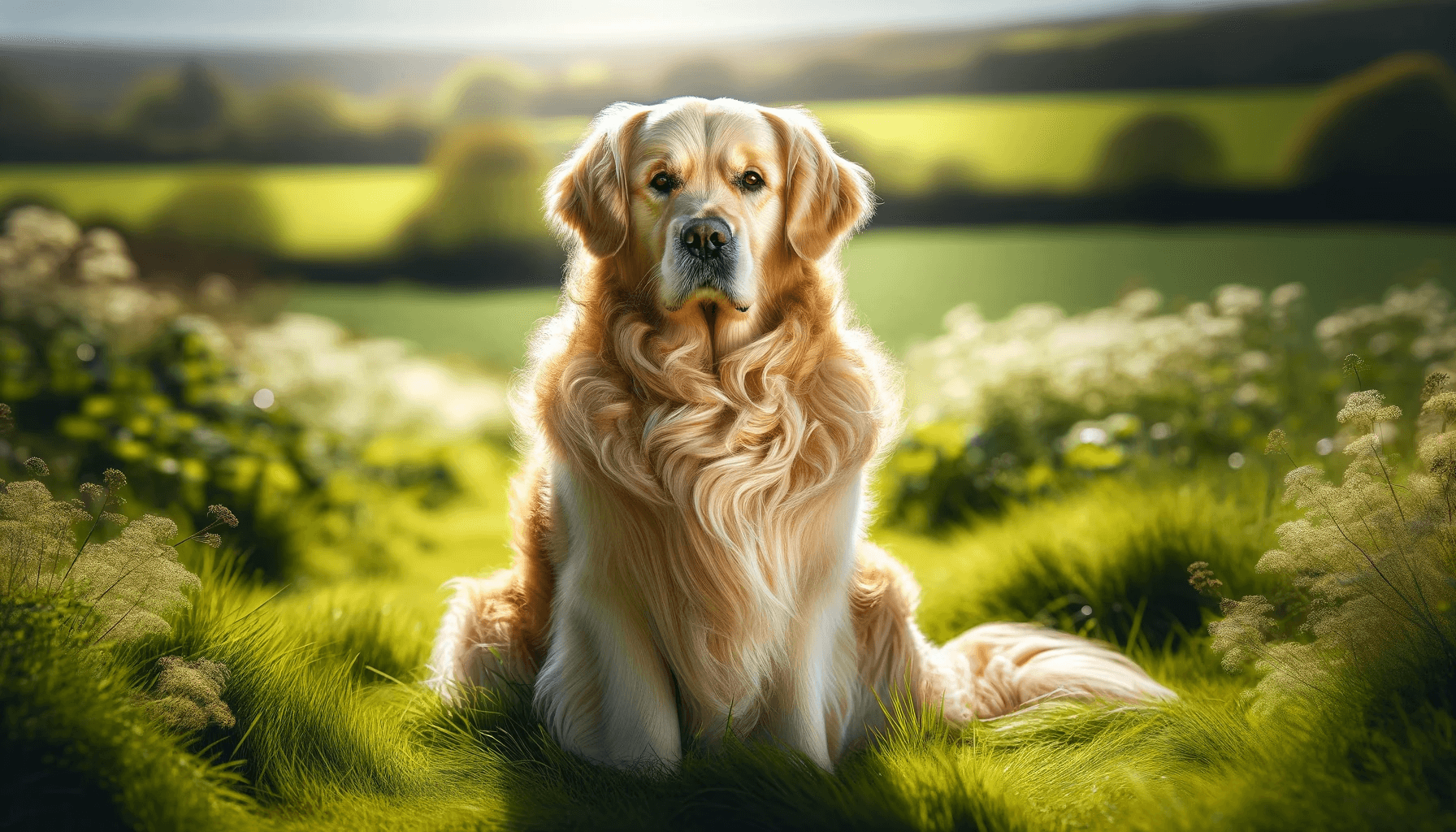 Officially recognized as the Golden Retriever by The Kennel Club of England in 1911, the breed was initially exhibited as the "Flat-Coat (Golden)" in 1908. Quickly rising in popularity, the Golden Retriever became renowned for its gentle temperament, intelligence, and adaptability. While its roots lie in hunting, the breed has become a favorite in households worldwide, known for its friendly nature and loyalty.
Officially recognized as the Golden Retriever by The Kennel Club of England in 1911, the breed was initially exhibited as the "Flat-Coat (Golden)" in 1908. Quickly rising in popularity, the Golden Retriever became renowned for its gentle temperament, intelligence, and adaptability. While its roots lie in hunting, the breed has become a favorite in households worldwide, known for its friendly nature and loyalty.
Group: Sporting Group
Temperament: Golden Retrievers are known for their friendly, gentle, and loyal nature. They are intelligent, eager to please, and often very good with children, making them excellent family pets.
Height: Typically, males stand about 22-24 inches (56-61 cm) tall, and females stand about 20-22 inches (51-56 cm).
Weight: Males usually weigh between 65-75 pounds (29-34 kg), and females weigh between 55-65 pounds (25-29 kg).
Coat and Color: They have a dense, water-repellent outer coat with a thick undercoat. Common colors range from light golden to dark golden.
Life Expectancy: The average lifespan is around 10-12 years.
Activity Level: High; they are an active breed and require regular exercise, including walks, playtime, and opportunities for swimming.
Trainability: Highly trainable and often used as service and therapy dogs due to their intelligence and desire to work.
Socialization: Naturally sociable, they generally get along well with people and other dogs. Early socialization is beneficial.
Grooming Needs: Moderate; requires regular brushing to manage shedding and maintain coat health.
Health Issues: Prone to certain conditions like hip dysplasia, elbow dysplasia, and heart issues. Can also be prone to certain cancers.
Adaptability: Adaptable to various living environments, but best suited to homes with space for exercise.
Living Space Compatibility: Can live in apartments if adequately exercised, but a house with a yard is ideal.
Family Situation: Excellent family dogs, known for their affectionate and patient nature with children and their ability to integrate well into various family dynamics.
The Golden Retriever is a friendly, intelligent breed, ideal for families due to its gentle nature. Requiring regular exercise and grooming, they adapt well to various living environments. Renowned for their loyalty and trainability, Golden Retrievers make excellent companions and are well-suited for active households. The Kennel Club
Greyhound
The Greyhound, with its roots in ancient civilizations, particularly in the Middle East, has been depicted in art dating back to Ancient Egypt. However, it was in Britain that the breed was further developed and refined. In medieval England, Greyhounds were highly prized by the nobility for their exceptional speed and hunting skills, particularly in coursing game. This high regard led to laws that restricted Greyhound ownership to the upper classes. Beyond their hunting prowess, Greyhounds were also admired for their elegance and grace, making them a symbol of status and nobility.
 In the 20th century, the breed gained new prominence through Greyhound racing, which became particularly popular in the United States. This sport highlighted their incredible speed and agility, attributes that were honed over centuries of selective breeding. Despite their association with racing, Greyhounds have become well-loved as family pets in modern times, known for their gentle and affectionate nature. Often described as 'couch potatoes,' they are surprisingly laid-back and adaptable as home companions.
In the 20th century, the breed gained new prominence through Greyhound racing, which became particularly popular in the United States. This sport highlighted their incredible speed and agility, attributes that were honed over centuries of selective breeding. Despite their association with racing, Greyhounds have become well-loved as family pets in modern times, known for their gentle and affectionate nature. Often described as 'couch potatoes,' they are surprisingly laid-back and adaptable as home companions.
Group: Hound Group
Temperament: Greyhounds are known for their calm, gentle, and independent nature. They are often affectionate and laid-back, known for being 'couch potatoes' despite their racing history.
Height: Typically, males stand about 28-30 inches (71-76 cm) tall, and females are about 27-28 inches (68-71 cm).
Weight: Males usually weigh between 65-70 pounds (29-32 kg), and females weigh between 60-65 pounds (27-29 kg).
Coat and Color: They have a short, smooth coat that comes in a wide range of colors, including black, blue, fawn, red, white, and various brindles.
Life Expectancy: The average lifespan is around 10-14 years.
Activity Level: Moderate; they enjoy short bursts of speed and can be quite active, but they also have a surprisingly low level of overall energy and enjoy relaxing.
Trainability: Intelligent and responsive, they can be trained, but their independent nature might require patience and consistency.
Socialization: They are generally good with other dogs and people, but early socialization is recommended to develop a well-rounded temperament.
Grooming Needs: Low; their short coat is easy to care for, requiring only occasional brushing.
Health Issues: Generally a healthy breed, but they can be prone to bloat, and care should be taken to protect them from extreme temperatures.
Adaptability: Very adaptable; can live comfortably in apartments due to their low energy levels, but they do need space for occasional sprints.
Living Space Compatibility: Suitable for both apartments and houses, as long as they have opportunities for regular exercise.
Family Situation: Good with families, including those with older children. They are typically gentle but may not be suitable for very young children due to their size and speed.
Greyhounds are calm, gentle, and low-energy, making them suitable for various living environments, including apartments. Known for minimal grooming needs and moderate exercise requirements, they are adaptable and fit well in family settings, particularly with older children. Their unique blend of speed and serenity makes them affectionate and laid-back companions. The Kennel Club
Harrier
The Harrier, a breed deeply embedded in the British hunting tradition, is often considered a smaller version of the English Foxhound. This breed's origins date back several hundred years, specifically developed for hare hunting, which is reflected in its name. The Harrier's lineage is believed to involve a mix of English Foxhounds, Greyhounds, and possibly other ancient hound breeds. This breeding aimed to create a dog smaller and more agile than the Foxhound, yet robust and enduring enough for lengthy hunts.
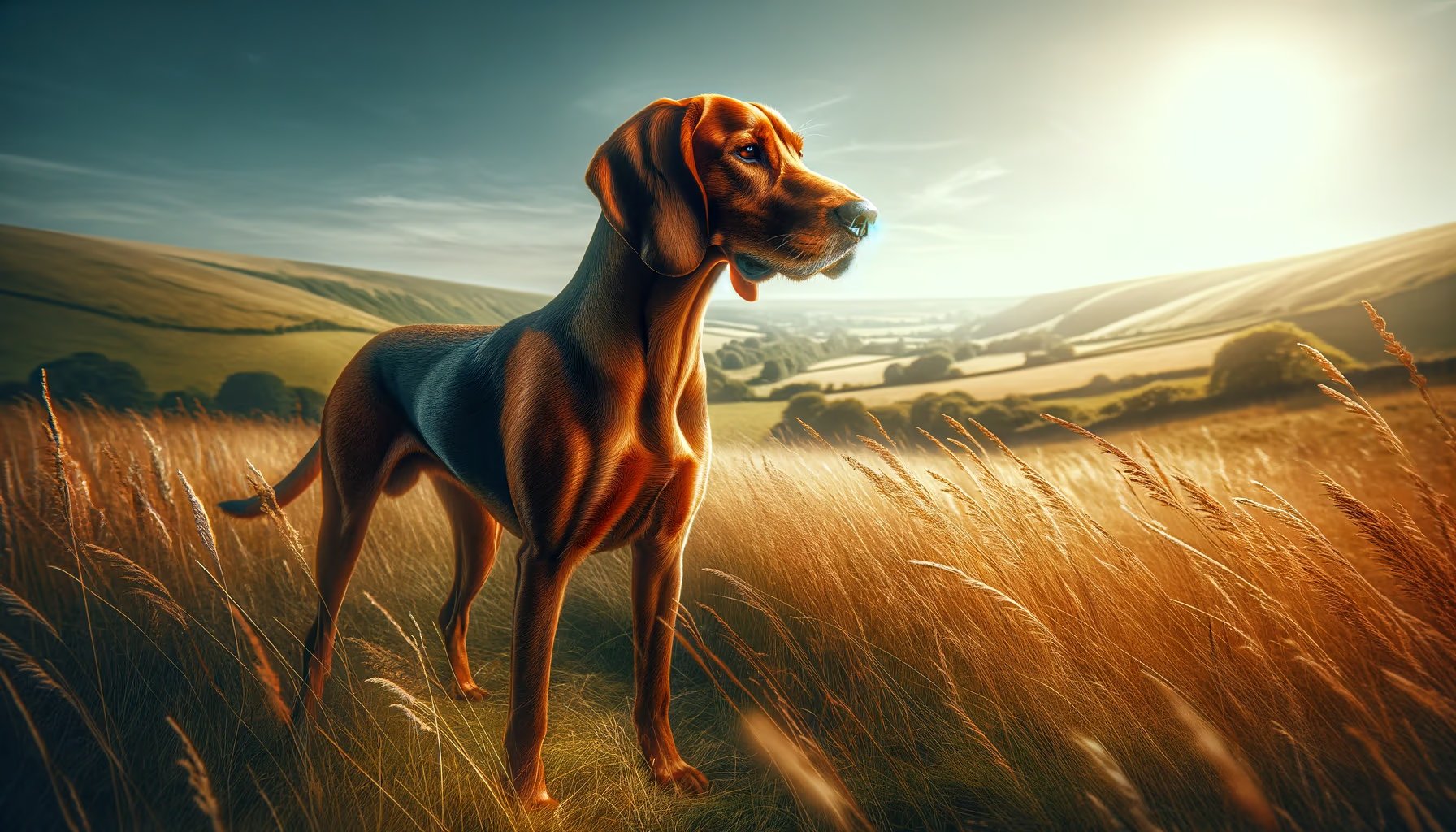 In medieval England, the Harrier gained popularity among hunters who followed the dogs on foot, as maintaining a stable of horses for Foxhound packs was costly. The Harrier was prized for its stamina and ability to navigate various terrains. While historically revered for its hunting prowess, the Harrier has also emerged as a favored family pet, admired for its friendly and pleasant demeanor.
In medieval England, the Harrier gained popularity among hunters who followed the dogs on foot, as maintaining a stable of horses for Foxhound packs was costly. The Harrier was prized for its stamina and ability to navigate various terrains. While historically revered for its hunting prowess, the Harrier has also emerged as a favored family pet, admired for its friendly and pleasant demeanor.
Group: Hound Group
Temperament: Harriers are known for being outgoing, friendly, and cheerful. They have a pack mentality, which makes them good with other dogs and sociable with people.
Height: Typically stands about 19-21 inches (48-53 cm) tall at the shoulder.
Weight: Usually weighs between 45-60 pounds (20-27 kg).
Coat and Color: They have a short, dense coat that is easy to care for. The coat comes in various colors, including tri-color, lemon and white, and red and white.
Life Expectancy: The average lifespan is around 12-15 years.
Activity Level: High; Harriers are active and energetic, requiring regular exercise to stay healthy and happy.
Trainability: Intelligent and willing to please, they can be trained, although they may sometimes be distracted by scents due to their strong hunting instincts.
Socialization: They benefit from early socialization to channel their pack mentality positively and develop well-rounded behaviors.
Grooming Needs: Low; their short coat only requires regular brushing to remove loose hair and maintain cleanliness.
Health Issues: Generally a healthy breed, but like many dogs, they can be prone to hip dysplasia and certain types of ear infections.
Adaptability: Adaptable to various living environments, but they do best with access to a yard or outdoor space for exercise.
Living Space Compatibility: Suitable for both rural and urban settings, provided they get enough physical activity.
Family Situation: Excellent with families, including those with children. Their friendly nature and love for play make them a compatible companion for family environments.
Harriers are sociable, energetic dogs that fit well into active family environments. They require regular exercise and are known for their friendly and outgoing nature. With low grooming needs and a generally healthy constitution, Harriers are adaptable to various living situations and are particularly good with children, making them excellent family pets. The Kennel Club
Jack Russell Terrier
The Jack Russell Terrier originated in England in the early 19th century, developed by Reverend John Russell, an avid fox hunter. He sought to create a terrier breed adept at fox hunting, capable of keeping pace with the hunt while being small enough to flush out foxes. The foundation of the breed was a small white and tan terrier named Trump, acquired by Russell in 1819, which exemplified the traits he sought: fearlessness, agility, and the ability to chase without harming the fox, aligning with the non-lethal approach of fox hunts.
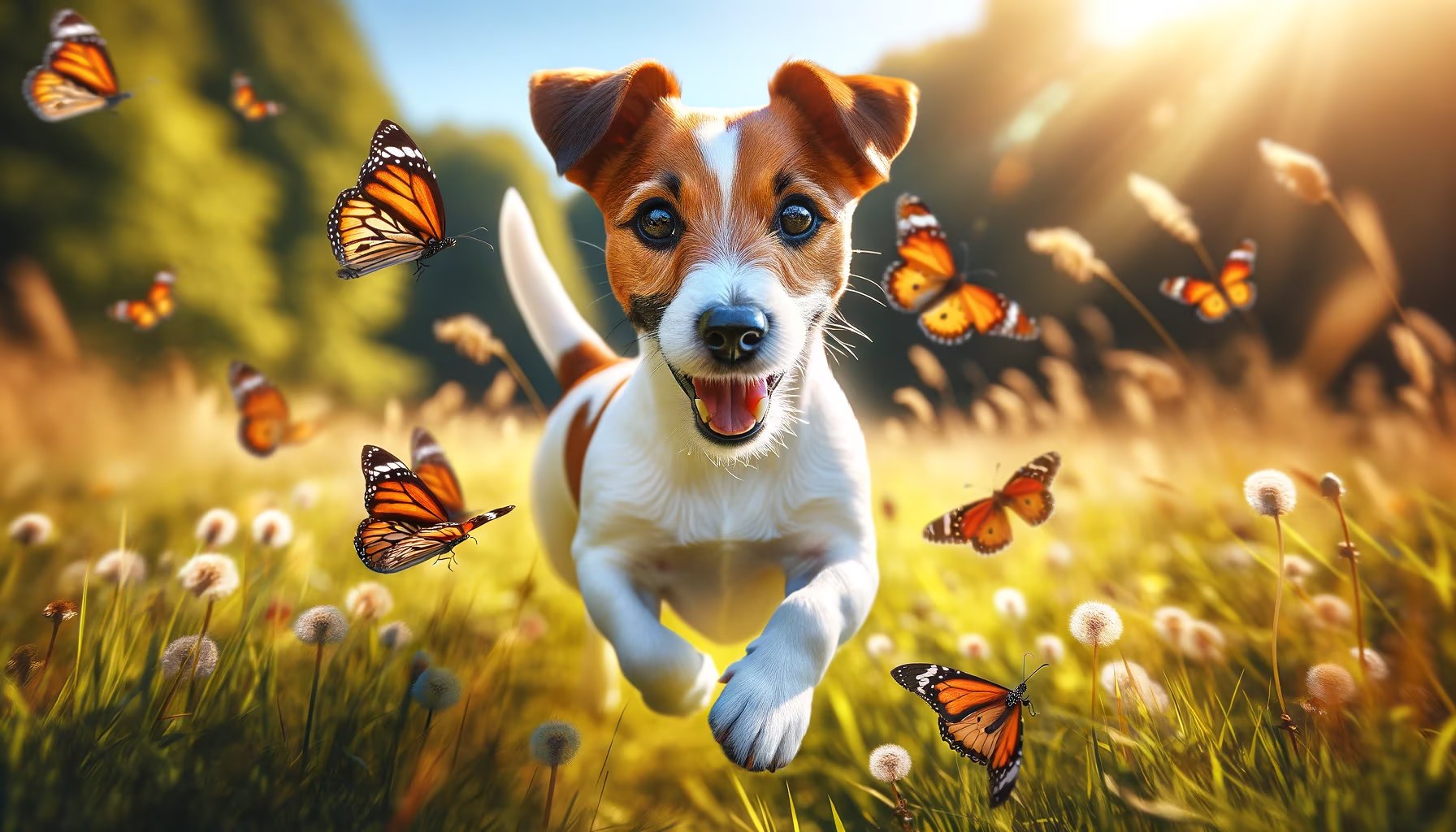 Over the years, the Jack Russell Terrier gained popularity among fox hunters for its effectiveness, energy, and size, but it remained primarily a working dog rather than a show dog, with little emphasis on a standardized appearance. It was only in the late 20th century that the breed became widely recognized as a companion animal.
Over the years, the Jack Russell Terrier gained popularity among fox hunters for its effectiveness, energy, and size, but it remained primarily a working dog rather than a show dog, with little emphasis on a standardized appearance. It was only in the late 20th century that the breed became widely recognized as a companion animal.
Group: Terrier Group
Temperament: Jack Russell Terriers are known for their high energy, intelligence, and fearless nature. They are lively, independent, and often have a strong prey drive.
Height: Typically stands about 10-15 inches (25-38 cm) at the shoulder.
Weight: Usually weighs between 13-17 pounds (6-8 kg).
Coat and Color: Their coat can be smooth, broken, or rough and is predominantly white with black, brown, or tan markings.
Life Expectancy: The average lifespan is around 13-16 years.
Activity Level: Very high; they require plenty of exercise and mental stimulation due to their energetic nature.
Trainability: Intelligent but can be stubborn. They respond well to consistent, positive training methods.
Socialization: Early socialization is important to manage their strong hunting instincts and ensure they are well-rounded.
Grooming Needs: Relatively low; regular brushing is sufficient to maintain their coat, with occasional baths.
Health Issues: Generally healthy, but can be prone to certain conditions like patellar luxation, deafness, and eye problems.
Adaptability: Adaptable to various living environments, as long as they receive enough physical and mental exercise.
Living Space Compatibility: Can live in apartments or houses, but require a secure outdoor space where they can play and explore safely.
Family Situation: Good with families, particularly those who lead active lifestyles. They can be too energetic for very young children and may chase small pets due to their prey drive.
The Jack Russell Terrier is a lively, intelligent dog, perfect for active families. They need lots of exercise and thrive in environments where they can stay active and engaged. Despite their small size, they have a bold personality and require consistent training and socialization. They are ideal for energetic households looking for an engaging, spirited companion. The Kennel Club
King Charles Spaniel
The King Charles Spaniel, also known as the English Toy Spaniel, boasts a history deeply intertwined with British royalty, particularly with King Charles II in the 17th century. Favored by the nobility for their companionship and lap-warming abilities in drafty residences, these spaniels were not only cherished as pets but also occasionally used in hunting due to their sharp sense of smell.
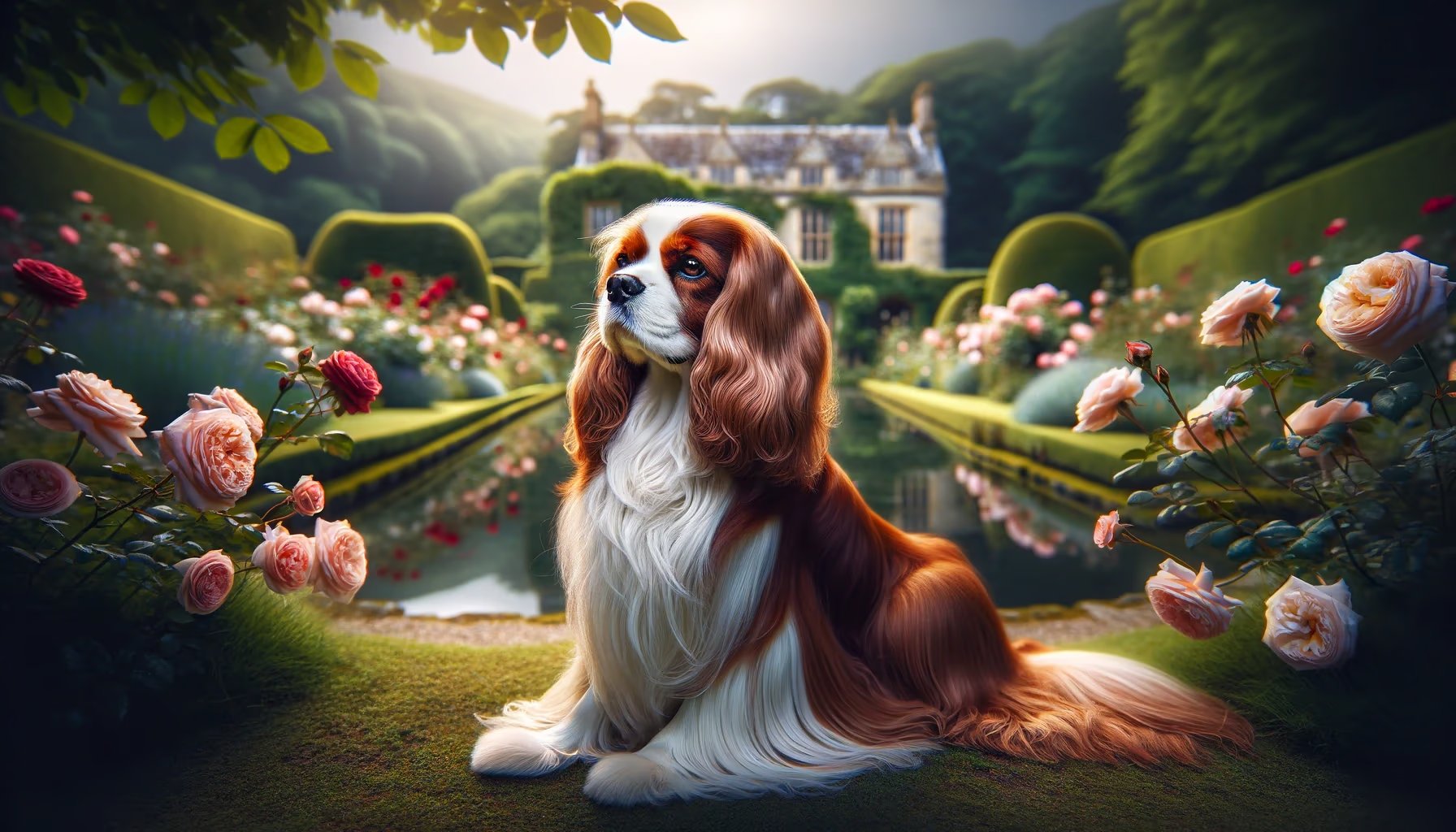 Initially similar to the Cavalier King Charles Spaniel, the King Charles Spaniel underwent significant changes in the 19th century when breeders crossed them with flat-faced breeds like Pugs and Japanese Chin, leading to their distinctive appearance today, characterized by a domed head, short muzzle, and prominent eyes.
Initially similar to the Cavalier King Charles Spaniel, the King Charles Spaniel underwent significant changes in the 19th century when breeders crossed them with flat-faced breeds like Pugs and Japanese Chin, leading to their distinctive appearance today, characterized by a domed head, short muzzle, and prominent eyes.
Recognized by The Kennel Club in the UK as a distinct breed in the late 19th century, the King Charles Spaniel's popularity waned somewhat with the rise of the Cavalier King Charles Spaniel, a breed that sought to revive the spaniel's earlier form. Despite this, the King Charles Spaniel has retained a dedicated following, prized for its elegant look and affectionate demeanor.
Group: Toy Group
Temperament: King Charles Spaniels are known for their affectionate, gentle, and friendly nature. They are typically quiet and amiable, making them excellent companions.
Height: They usually stand about 9-11 inches (23-28 cm) at the shoulder.
Weight: Typically, they weigh between 13-18 pounds (6-8 kg).
Coat and Color: They have a silky, long coat with feathering on the ears, tail, and legs. Common coat colors include black and tan, tricolor, ruby, and Blenheim (chestnut and white).
Life Expectancy: Their average lifespan is around 12-15 years.
Activity Level: Moderate; they enjoy short walks and playtime but are not overly energetic.
Trainability: Generally easy to train due to their eagerness to please, but they can be independent at times.
Socialization: They are naturally sociable but benefit from early socialization to become well-rounded pets.
Grooming Needs: Moderate; requires regular brushing to maintain their coat and prevent matting.
Health Issues: Prone to certain health problems such as heart conditions, eye issues, and patellar luxation.
Adaptability: Adaptable to various living situations, including apartments and houses.
Living Space Compatibility: Suitable for apartment living due to their small size and moderate activity level.
Family Situation: Excellent with families, including those with children and other pets. Their loving and gentle disposition makes them a compatible family pet.
The King Charles Spaniel is a gentle, affectionate breed ideal for family life and suitable for apartment living. They require moderate exercise and grooming and are known for their friendly nature. Adaptable and sociable, they make excellent companions for households with or without children and other pets. The Kennel Club
Labrador Retriever
The Labrador Retriever's origins trace back to the early 19th century in Newfoundland, Canada, where they were initially known as St. John's dogs. Used by fishermen to retrieve nets and fish from the cold Atlantic waters, their excellent swimming abilities and hardy nature made them invaluable working dogs. These dogs caught the attention of visiting British nobles, who brought them back to England. There, they were further developed into the breed known today as the Labrador Retriever, with a focus on enhancing their retrieving skills for hunting and their amiable temperament.
 The breed was officially recognized by The Kennel Club in England in 1903 and later by the American Kennel Club in 1917.
The breed was officially recognized by The Kennel Club in England in 1903 and later by the American Kennel Club in 1917.
Over time, Labradors gained immense popularity, not just as hunting dogs but also for their versatility in various roles, including as service and therapy dogs, and as beloved family pets.
Group: Sporting Group
Temperament: Labrador Retrievers are known for their friendly, outgoing, and affectionate nature. They are intelligent, eager to please, and often very good with children, making them excellent family pets.
Height: Typically, males stand about 22-24 inches (56-61 cm) tall, and females stand about 21-23 inches (53-58 cm).
Weight: Males usually weigh between 65-80 pounds (29-36 kg), and females weigh between 55-70 pounds (25-32 kg).
Coat and Color: They have a short, dense, water-resistant coat. Common colors are black, yellow, and chocolate.
Life Expectancy: The average lifespan is around 10-12 years.
Activity Level: High; they are an active breed and require regular exercise, including walks, playtime, and opportunities for swimming.
Trainability: Highly trainable and often used as service and therapy dogs due to their intelligence and desire to work.
Socialization: Naturally sociable, they generally get along well with people and other dogs. Early socialization is beneficial.
Grooming Needs: Relatively low; requires regular brushing to manage shedding and maintain coat health.
Health Issues: Prone to certain conditions like hip and elbow dysplasia, heart disorders, and eye problems. Can also be prone to obesity if not properly exercised and fed.
Adaptability: Very adaptable; can live comfortably in apartments or houses as long as they receive enough physical and mental exercise.
Living Space Compatibility: Best suited to homes with yards; can adapt to apartment living if given enough exercise.
Family Situation: Excellent with families, good with children, and generally get along well with other pets. Their friendly and patient nature makes them a compatible family pet.
Labrador Retrievers are popular for their friendly, adaptable nature, making them ideal family pets. They require regular exercise and are known for their intelligence and trainability. Suitable for various living environments, Labradors are excellent with children and other pets, embodying a balanced mix of energy, affection, and loyalty. The Kennel Club
Lakeland Terrier
The Lakeland Terrier, originating from England's Lake District, was developed in the 19th century, primarily by farmers who required a robust dog for protecting sheep from predators like foxes. Drawing on the traits of various terriers such as the Bedlington and Border Terriers, the Lakeland Terrier was bred for its hunting ability, particularly in chasing and tackling foxes in the rugged terrain. The breed's small size enabled it to follow prey into dens, and its wiry coat offered protection against the harsh, damp climate of the region.
 Initially known as the Patterdale Terrier, the breed was later renamed the Lakeland Terrier in the early 20th century. It transitioned from a primarily working dog to gaining recognition in dog shows, celebrated for its bold personality and distinct look. The Kennel Club in the UK officially recognized the Lakeland Terrier in 1921.
Initially known as the Patterdale Terrier, the breed was later renamed the Lakeland Terrier in the early 20th century. It transitioned from a primarily working dog to gaining recognition in dog shows, celebrated for its bold personality and distinct look. The Kennel Club in the UK officially recognized the Lakeland Terrier in 1921.
Group: Terrier Group
Temperament: Lakeland Terriers are known for being bold, confident, and spirited. They are lively and have a friendly disposition, often showing a mischievous streak.
Height: Typically stands about 13-15 inches (33-38 cm) at the shoulder.
Weight: Usually weighs between 15-17 pounds (7-8 kg).
Coat and Color: They have a dense, wiry coat. Common colors include black and tan, blue, red, wheaten, and grizzle.
Life Expectancy: The average lifespan is around 12-16 years.
Activity Level: Moderate to high; they require regular exercise and enjoy active playtime.
Trainability: Intelligent but can be independent, responding best to consistent and positive training methods.
Socialization: Early socialization is important to manage their strong terrier instincts and ensure they are well-rounded.
Grooming Needs: Moderate; regular brushing is required to maintain their coat, and professional grooming is recommended to keep it in good condition.
Health Issues: Generally a healthy breed, but can be prone to certain conditions like hip dysplasia and eye problems.
Adaptability: Adaptable to various living environments, but they do best with access to a yard or outdoor space for exercise.
Living Space Compatibility: Can live comfortably in apartments or houses as long as their exercise needs are met.
Family Situation: Good with families, including those with older children. They may have a high prey drive, so caution is advised around small pets. Their playful and affectionate nature makes them a compatible family pet.
The Lakeland Terrier is a bold, spirited breed ideal for active households. Adaptable to various living situations, they require regular exercise and moderate grooming. Known for their playful and friendly demeanor, Lakeland Terriers fit well in families, particularly those with older children, and make lively, affectionate companions. The Kennel Club
Lurcher
The Lurcher, a type of dog rather than a specific breed, has its origins in the British Isles, primarily associated with the working-class and poaching activities. Not a purebred, the Lurcher is traditionally a cross between a sighthound and another working dog breed, such as a terrier, collie, or shepherd.
 This crossbreeding was aimed at creating a dog that combined the sighthound's speed and hunting prowess with the intelligence, tenacity, and versatility of other working breeds. Lurchers were bred to be effective hunters, capable of catching small game like rabbits and hares, which was crucial for families who relied on these dogs for sustenance, especially in times when they couldn't legally own hunting dogs.
This crossbreeding was aimed at creating a dog that combined the sighthound's speed and hunting prowess with the intelligence, tenacity, and versatility of other working breeds. Lurchers were bred to be effective hunters, capable of catching small game like rabbits and hares, which was crucial for families who relied on these dogs for sustenance, especially in times when they couldn't legally own hunting dogs.
Over the years, Lurchers were often associated with poaching, as their stealth and efficiency made them ideal for this task. However, as times have changed, so has the role of the Lurcher.
Group: Not applicable, as Lurchers are not a recognized breed but a type of crossbreed.
Temperament: Lurchers are typically known for their gentle, affectionate, and laid-back nature. They can be independent but are often loving and loyal to their families.
Height and Weight: Varies widely depending on the specific breeds used in the cross. They can range from medium to large in size.
Coat and Color: The coat type and color vary significantly based on their breeding. They can have short or rough coats and come in a wide variety of colors.
Life Expectancy: Generally, Lurchers have a life expectancy of around 12-15 years, but this can vary depending on the specific breeds in their lineage.
Activity Level: Usually high; they require regular exercise due to their sighthound heritage.
Trainability: Intelligence varies, but they can be trained with patience and consistency. Their sighthound heritage may make them more independent.
Socialization: Important from a young age, especially if they have a strong hunting instinct from their sighthound lineage.
Grooming Needs: Varies with coat type; can range from minimal to moderate.
Health Issues: Generally healthy, but some may be prone to conditions common in their parent breeds, such as hip dysplasia or eye problems.
Adaptability: Quite adaptable to different living environments, but they do best with space to run.
Living Space Compatibility: Can adapt to apartment living if given enough exercise, but a home with a garden is ideal.
Family Situation: Often good with families, including those with children. However, their compatibility with other pets depends on their individual temperament and prey drive.
Lurchers are affectionate and adaptable dogs, well-suited to family life. They vary in size and coat due to their mixed heritage but generally require regular exercise and minimal to moderate grooming. Known for their gentle nature, Lurchers can fit well into various homes, thriving in environments where they have space to exercise. The Kennel Club
Manchester Terrier
The Manchester Terrier, with its roots in 19th-century England, was bred as a ratter and coursing dog. Originating in Manchester, it was developed by crossing the Black and Tan Terrier, a renowned ratting dog, with the Whippet, known for its speed.
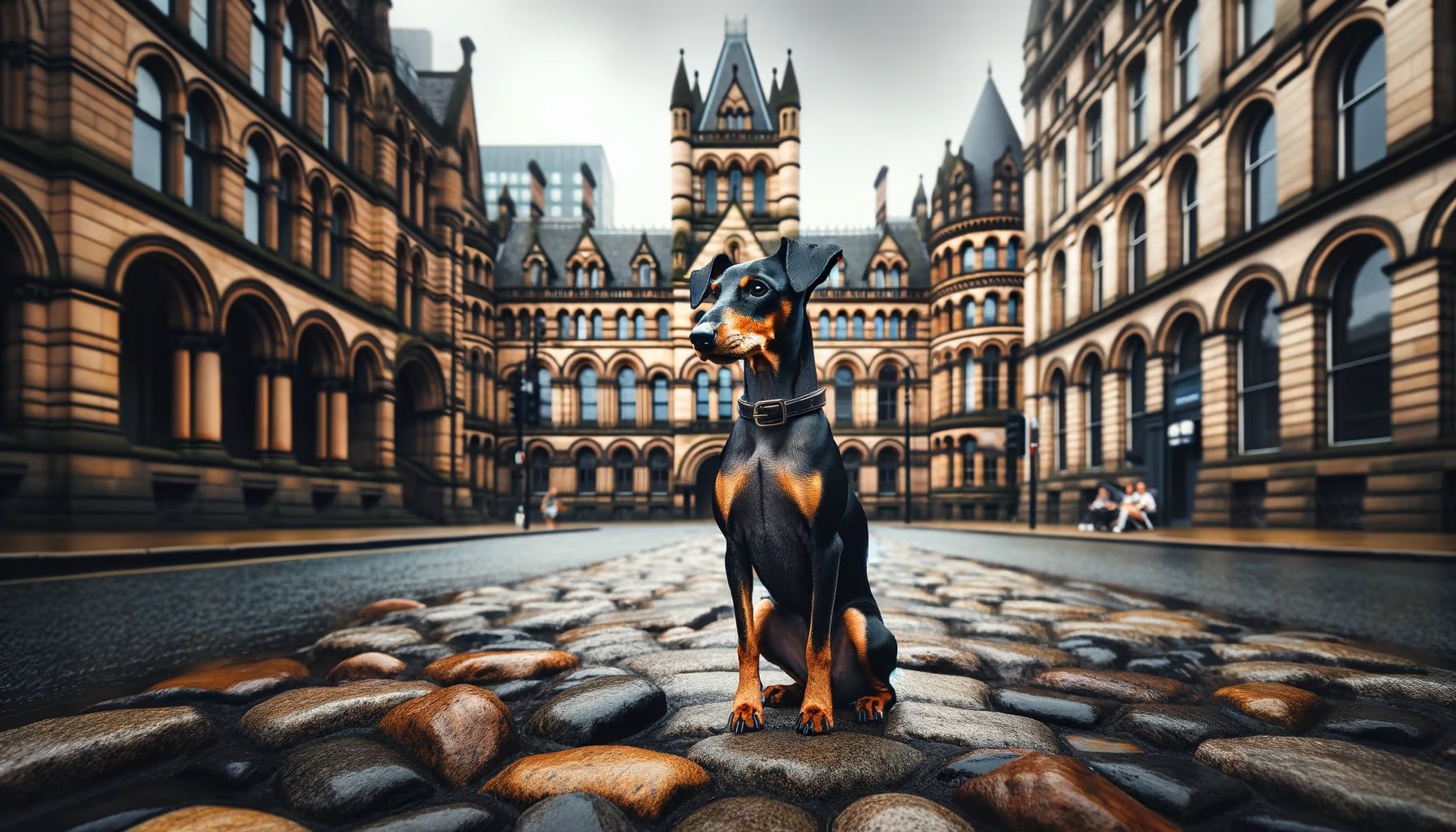 This crossbreeding aimed to create a breed that combined the Whippet's agility and speed with the Black and Tan Terrier's tenacity and skill in killing rats. The Manchester Terrier quickly gained popularity for its effectiveness in controlling rat populations in urban areas, particularly in a time when rat infestations were a significant public health issue.
This crossbreeding aimed to create a breed that combined the Whippet's agility and speed with the Black and Tan Terrier's tenacity and skill in killing rats. The Manchester Terrier quickly gained popularity for its effectiveness in controlling rat populations in urban areas, particularly in a time when rat infestations were a significant public health issue.
During the Victorian era, the breed also gained fame through the sport of rat-baiting, an activity where dogs competed to kill as many rats as possible in a set time. The Manchester Terrier excelled in this sport, further cementing its reputation as an efficient vermin controller.
Group: Terrier Group
Temperament: Manchester Terriers are known for their keen intelligence, alertness, and lively disposition. They are spirited and highly energetic, often displaying a strong hunting instinct.
Height: Typically stands about 15-16 inches (38-41 cm) for standard size, and 10-12 inches (25-30 cm) for toy size.
Weight: Standard Manchester Terriers weigh between 12-22 pounds (5.5-10 kg), and toy varieties weigh less, around 6-8 pounds (2.7-3.6 kg).
Coat and Color: They have a short, smooth, and glossy coat. The color is typically black with distinct tan markings.
Life Expectancy: The average lifespan is around 15-17 years.
Activity Level: High; they are active and agile, requiring regular exercise to stay fit and stimulated.
Trainability: Highly trainable, they respond well to positive reinforcement but can be independent and strong-willed.
Socialization: Early socialization is important, especially given their strong prey drive and terrier instincts.
Grooming Needs: Low; their short coat requires minimal grooming, mainly regular brushing to remove loose hair.
Health Issues: Generally a healthy breed, but some may be prone to patellar luxation, heart issues, and eye problems.
Adaptability: Adaptable to various living environments, including apartments, as long as they get enough exercise.
Living Space Compatibility: Can live comfortably in both apartments and houses, provided they have opportunities for exercise and play.
Family Situation: Good with families, but their high energy and hunting instincts might be overwhelming for very young children. They tend to do well in active households that can meet their exercise needs.
The Manchester Terrier is a lively, intelligent breed suited for active households. With minimal grooming needs and high trainability, they adapt well to various living environments, including apartments. Their spirited nature makes them suitable for families with older children who can match their energy and engage in interactive play. The Kennel Club
Mastiff
The Mastiff, one of the oldest and most majestic dog breeds, has a storied history that dates back to ancient times. Originating in Britain, these powerful dogs were initially used by the Romans in warfare, prized for their size, strength, and intimidating presence on the battlefield.
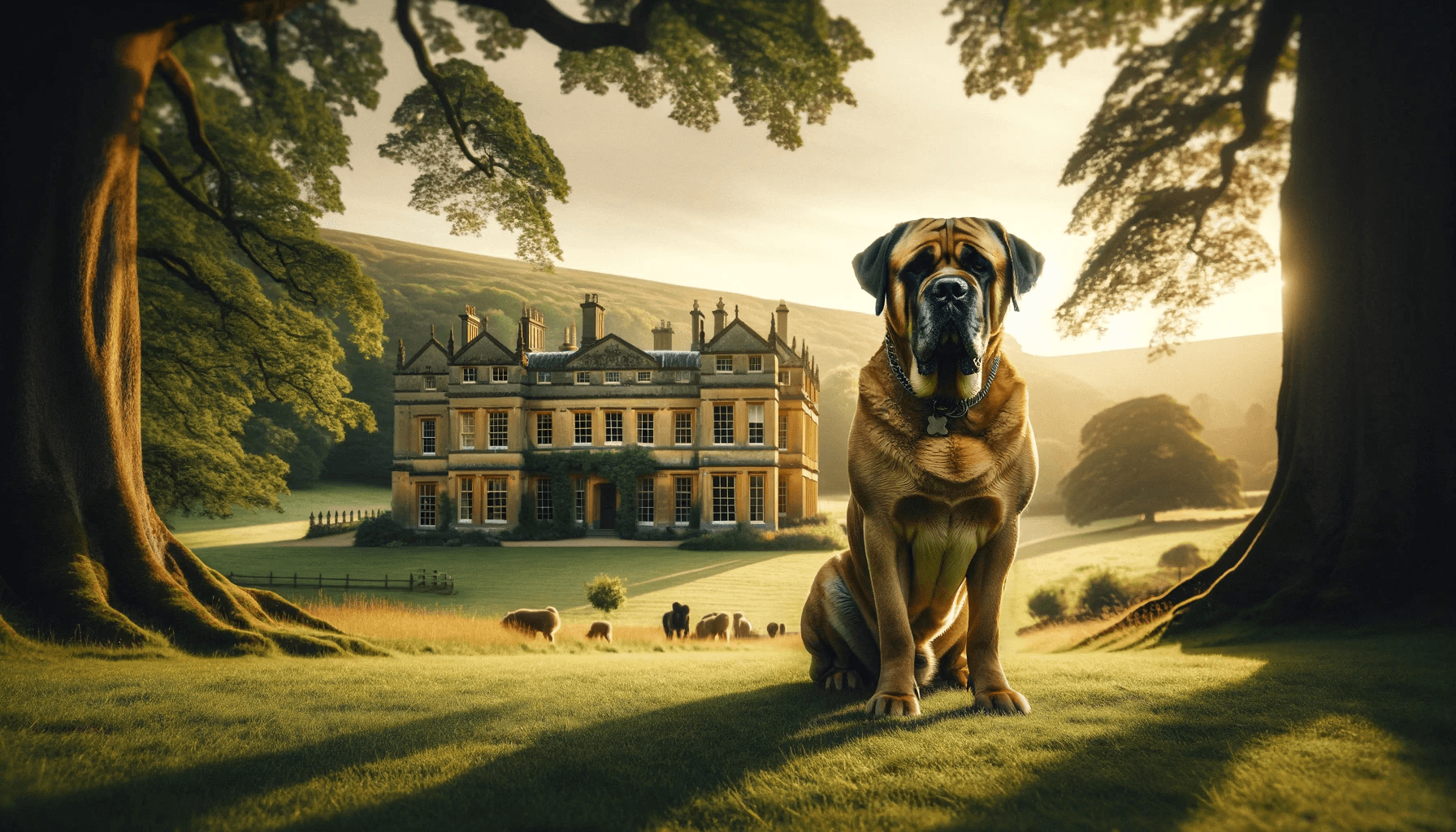 Over the centuries, Mastiffs were employed in various roles, from guarding estates and protecting livestock to being companions to nobility. Their imposing stature and loyal nature made them ideal for these purposes. In medieval England, Mastiffs were often used in bear-baiting, a now-outlawed bloodsport, and as protectors against wolves and other predators.
Over the centuries, Mastiffs were employed in various roles, from guarding estates and protecting livestock to being companions to nobility. Their imposing stature and loyal nature made them ideal for these purposes. In medieval England, Mastiffs were often used in bear-baiting, a now-outlawed bloodsport, and as protectors against wolves and other predators.
Despite their use in combat and guarding, Mastiffs were also known for their gentle and affectionate nature with their families, a trait that has persisted to this day. The breed faced near extinction after World War II due to the hardships of war, leading to severe food shortages that made it difficult to sustain such large dogs. However, dedicated breeders in the United States and Canada, where the breed had been exported in the 19th century, helped to revive the Mastiff.
Group: Working Group
Temperament: Mastiffs are known for their calm, gentle, and loyal nature. Despite their size, they are often affectionate and good-natured, making them excellent family pets.
Height: Typically, males stand at least 30 inches (76 cm) tall, and females are slightly smaller.
Weight: They are one of the heaviest breeds, with males weighing between 160-230 pounds (72-104 kg) and females slightly less.
Coat and Color: Mastiffs have a short, straight coat. Common colors include fawn, apricot, or brindle, all usually with a black mask on the face.
Life Expectancy: The average lifespan is around 6-10 years, shorter than many smaller breeds.
Activity Level: Moderate; they require regular but not excessive exercise.
Trainability: Intelligent but can be independent. Early and consistent training is important.
Socialization: Early socialization is crucial to prevent them from becoming overprotective or shy.
Grooming Needs: Low; their short coat requires minimal grooming, but they can be heavy droolers.
Health Issues: Prone to conditions common in large breeds, such as hip dysplasia, elbow dysplasia, and heart problems. Their size also contributes to a shorter lifespan.
Adaptability: Due to their size, they are better suited to homes with more space.
Living Space Compatibility: Best suited for a house with a yard rather than an apartment.
Family Situation: Good with families, particularly if raised with them. Their size and strength necessitate supervision around small children, despite their gentle nature.
The Mastiff is a gentle giant, known for its calm and loyal nature, making it a good family pet. Best suited for homes with ample space, they require moderate exercise and minimal grooming. Despite their imposing size, Mastiffs are affectionate and protective, fitting well into households where they can be properly managed and socialized. The Kennel Club
Norfolk Terrier
The Norfolk Terrier, one of the smallest working terriers, originated in England, particularly in East Anglia. The breed's history is closely linked with that of the Norwich Terrier, with both breeds often being indistinguishable until the 20th century. Initially bred for controlling vermin and fox hunting, Norfolk Terriers were known for their toughness, tenacity, and excellent ratters.
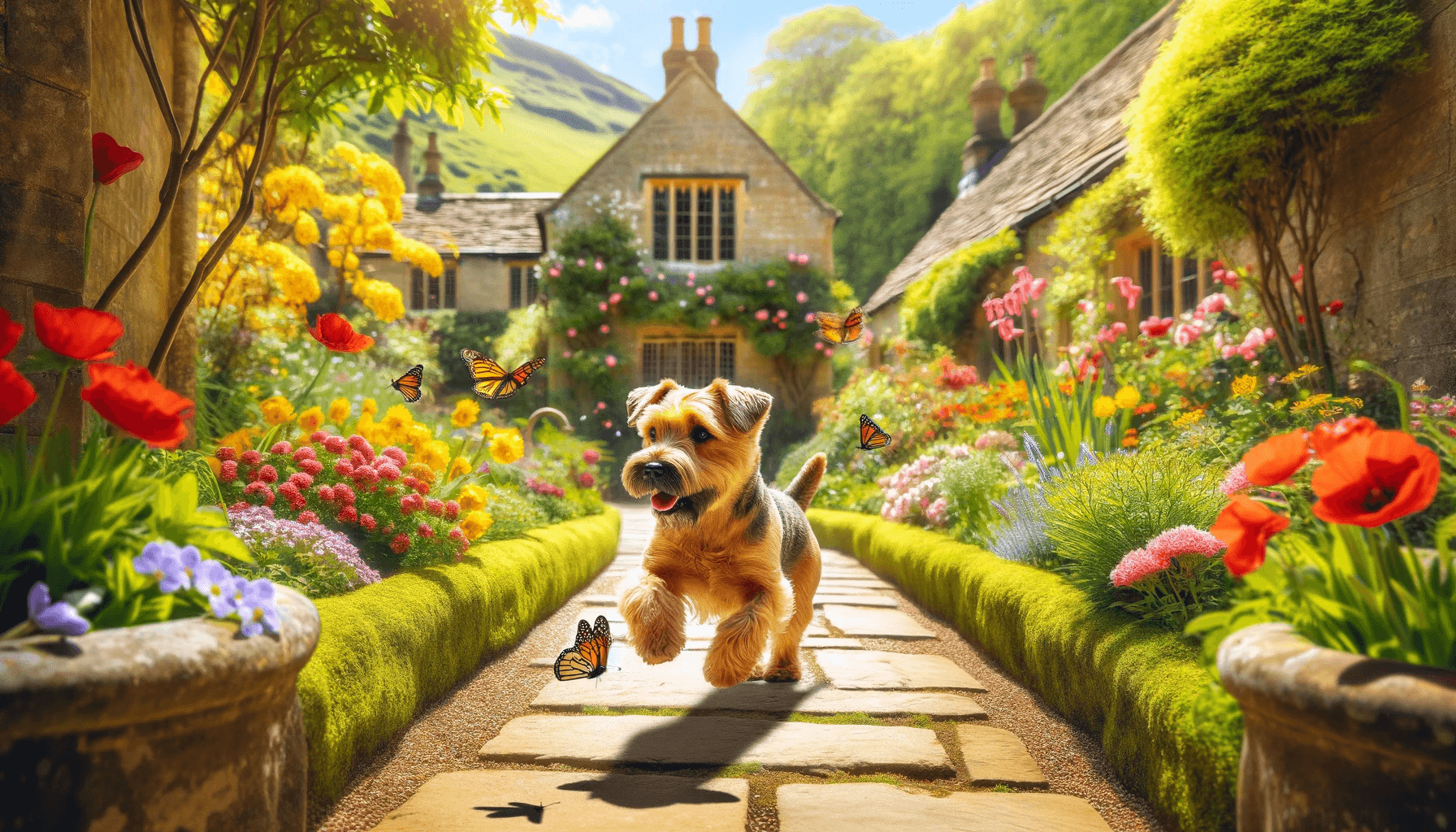 They were a common sight on farms and stables, valued for their working ability rather than their appearance. These small, fearless dogs were also popular among Cambridge University students for their ratting abilities and as companions.
They were a common sight on farms and stables, valued for their working ability rather than their appearance. These small, fearless dogs were also popular among Cambridge University students for their ratting abilities and as companions.
In the 1930s, the breed began to be differentiated from the Norwich Terrier, primarily based on ear carriage – the Norfolk has folded ears, while the Norwich has prick ears. The Kennel Club in England recognized them as separate breeds in 1964, with the American Kennel Club following suit in 1979.
Group: Terrier Group
Temperament: Norfolk Terriers are known for their spirited, alert, and affectionate nature. They are friendly, fearless, and typically have a sociable disposition.
Height: Generally stand about 9-10 inches (23-25 cm) tall at the shoulder.
Weight: Usually weigh around 11-12 pounds (5-5.5 kg).
Coat and Color: They have a wiry, straight coat that is weather-resistant. Common colors include red, wheaten, black and tan, and grizzle.
Life Expectancy: Their average lifespan is around 12-15 years.
Activity Level: Moderate to high; they are active and energetic dogs that require regular exercise and playtime.
Trainability: Intelligent and eager to please, they can be trained effectively but may display a typical terrier stubbornness at times.
Socialization: Early socialization is important to ensure they are well-rounded, particularly around other animals due to their strong hunting instincts.
Grooming Needs: Moderate; regular brushing is necessary to maintain their coat, and they may require professional grooming a few times a year.
Health Issues: Generally a healthy breed, but like many small dogs, they can be prone to conditions such as hip dysplasia and dental issues.
Adaptability: Highly adaptable to various living situations, including apartments, as long as they get enough exercise.
Living Space Compatibility: Suitable for both apartment living and houses, provided they have opportunities for daily physical activity.
Family Situation: Good with families and typically do well with children. Their playful and loving nature makes them a great companion for active households.
The Norfolk Terrier, with its spirited and friendly personality, is a versatile small dog breed well-suited for various households, including apartments. They are adaptable, require moderate exercise, and are known for being affectionate companions, making them ideal for both active families and individuals. The Kennel Club
Norwich Terrier
The Norwich Terrier, originating from the United Kingdom, shares a closely intertwined history with the Norfolk Terrier. Developed in East Anglia, particularly around the town of Norwich, this breed was initially used for vermin control and as a barnyard ratter.
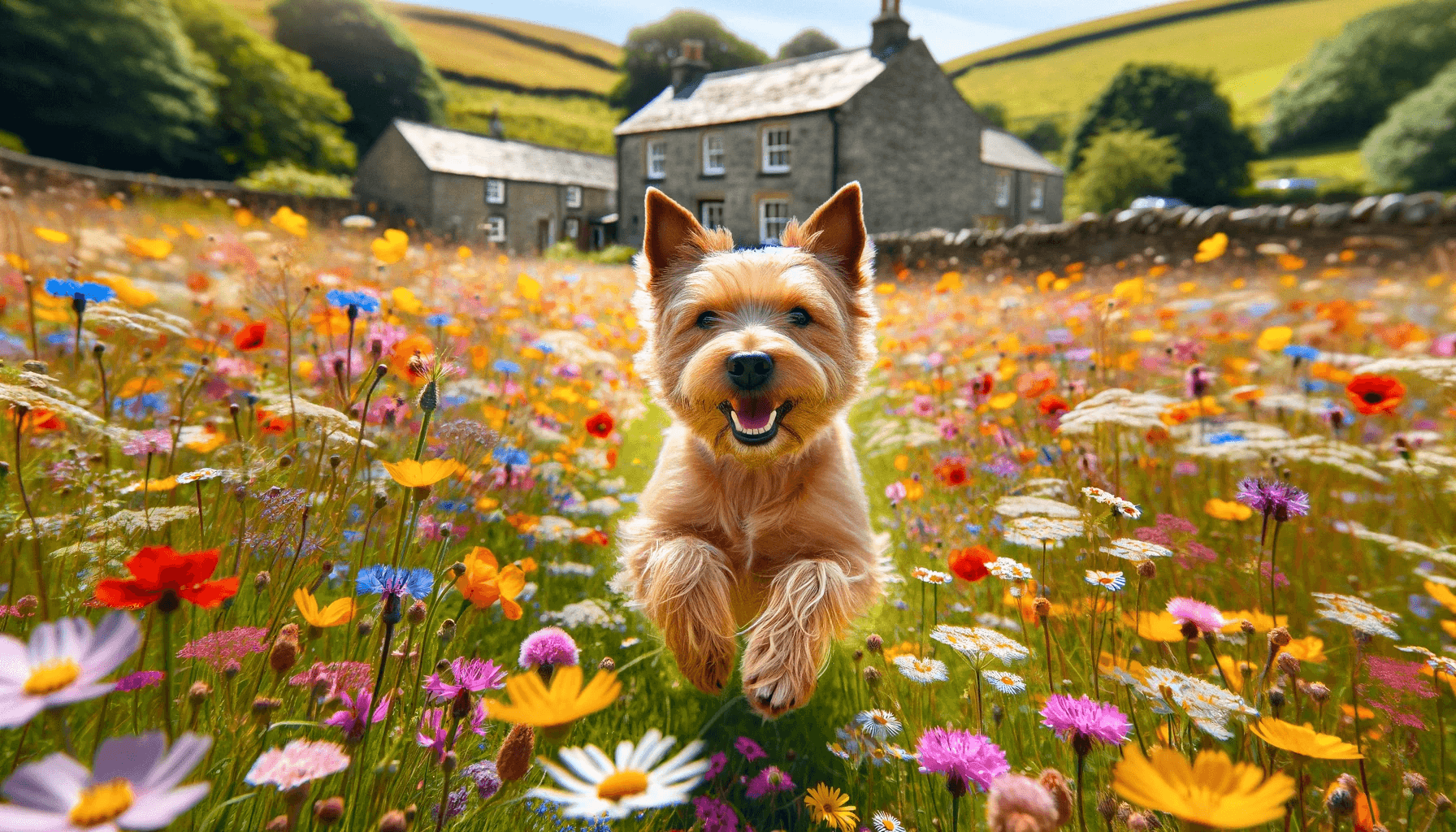 The breed's roots trace back to the 19th century, where it was a popular choice among Cambridge University students for ratting and as a loyal companion. These small, hardy dogs were valued for their tenacity, courage, and hunting abilities, making them effective in controlling rat populations and assisting in fox hunts.
The breed's roots trace back to the 19th century, where it was a popular choice among Cambridge University students for ratting and as a loyal companion. These small, hardy dogs were valued for their tenacity, courage, and hunting abilities, making them effective in controlling rat populations and assisting in fox hunts.
Originally grouped with the Norfolk Terrier, the Norwich Terrier was distinguished by its erect, prick ears, as opposed to the folded ears of the Norfolk. This distinction became the primary characteristic separating the two breeds. The Kennel Club (UK) officially recognized the Norwich Terrier as a distinct breed in 1964, followed by the American Kennel Club in 1979.
Since then, the Norwich Terrier has evolved from a skilled vermin hunter to a beloved family pet, known for its spirited personality, small stature, and adaptability to various living environments. Despite their transition to companion animals, Norwich Terriers retain the robustness and fearless nature of their working ancestors.
Group: Terrier Group
Temperament: Norwich Terriers are known for their spirited, affectionate, and loyal nature. They are friendly, brave, and exhibit a good-natured disposition.
Height: Typically stands about 9-10 inches (23-25 cm) tall at the shoulder.
Weight: Usually weighs around 11-12 pounds (5-5.5 kg).
Coat and Color: They have a hard, wiry coat that is weather-resistant. Common colors include red, wheaten, black and tan, and grizzle.
Life Expectancy: The average lifespan is around 12-15 years.
Activity Level: Moderate; they are active and enjoy regular playtime and walks.
Trainability: Intelligent and eager to please, they can be effectively trained, though they may show typical terrier stubbornness.
Socialization: Early socialization is important for well-rounded behavior, especially given their strong terrier instincts.
Grooming Needs: Moderate; their coat requires regular brushing and occasional hand-stripping to maintain its condition.
Health Issues: Generally healthy, but can be prone to conditions such as hip dysplasia, patellar luxation, and dental issues.
Adaptability: Highly adaptable to different living environments, including urban apartments, as long as they receive adequate exercise.
Living Space Compatibility: Suitable for both apartment and house living, provided they have opportunities for daily physical activity.
Family Situation: Good with families and can do well with children, thanks to their playful and affectionate nature. Their size and energy level make them suitable for a variety of home settings.
The Norwich Terrier is a friendly, spirited breed, well-suited for various households, including apartments. They require moderate exercise and grooming and are known for their affectionate and brave nature, making them excellent companions for both families and individuals. The Kennel Club
Old English Sheepdog
The Old English Sheepdog, an iconic and distinctive breed, has its roots in the rural pastoral landscapes of England. Its history dates back to the early 19th century, where it was primarily used as a drover, helping farmers drive cattle and sheep to market.
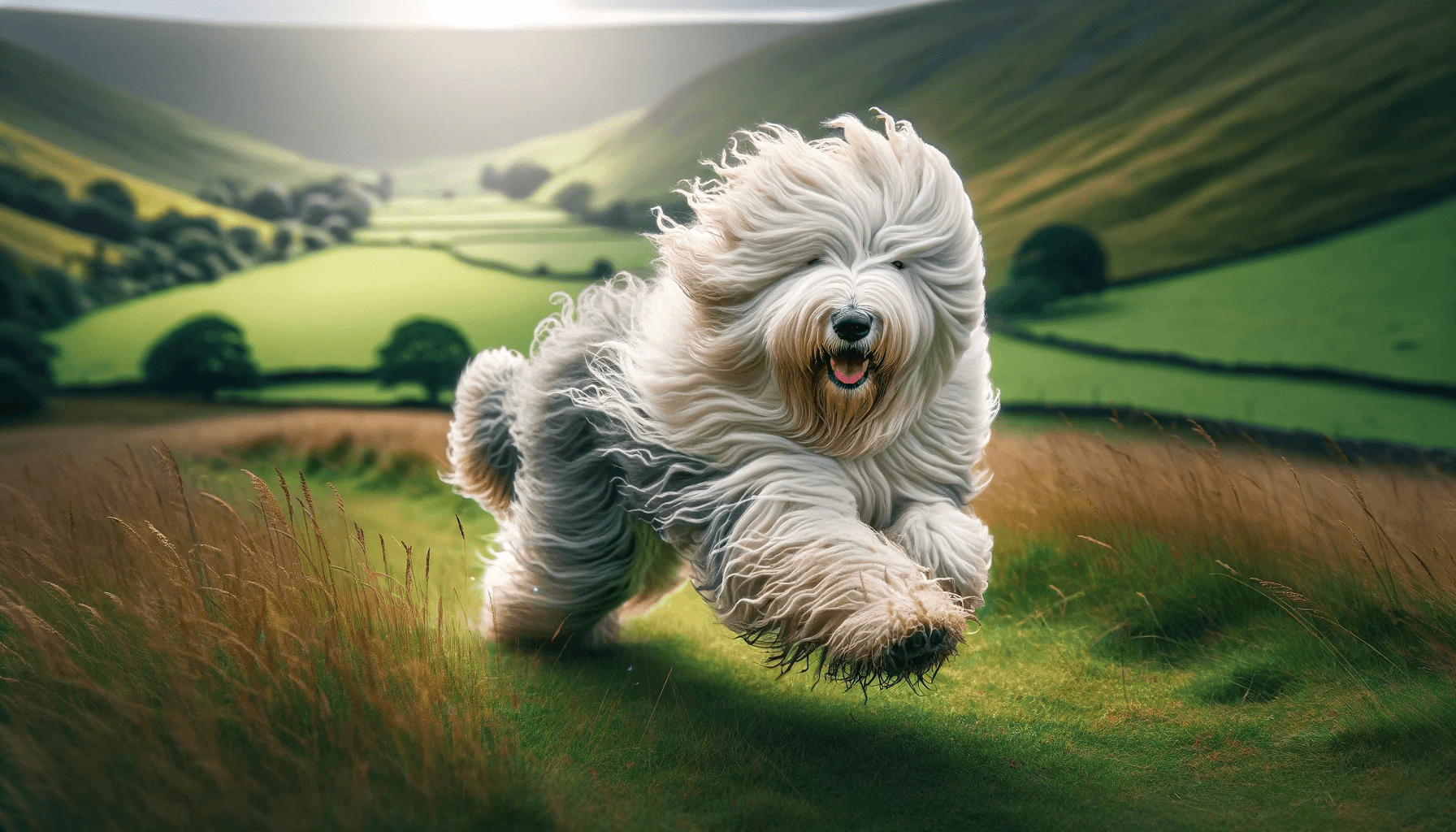 The breed's exact origins are unclear, but it's believed to have descended from various European herding dogs, possibly including the Scottish Bearded Collie and the Russian Owtchar. The Old English Sheepdog was valued for its herding abilities, strength, and endurance, as well as its weather-resistant double coat, which protected it from the harsh English climate.
The breed's exact origins are unclear, but it's believed to have descended from various European herding dogs, possibly including the Scottish Bearded Collie and the Russian Owtchar. The Old English Sheepdog was valued for its herding abilities, strength, and endurance, as well as its weather-resistant double coat, which protected it from the harsh English climate.
Despite its name, the Old English Sheepdog was not primarily a sheep herder but more a cattle driver, known for its ability to keep herds under control on the way to market. Its characteristic shaggy coat was also useful for protecting it from the elements and from the hooves of the livestock it herded.
The breed gained popularity in the late 19th century, especially in show rings, and became known for its amiable nature and unique appearance. Recognized by The Kennel Club in 1873, the Old English Sheepdog became a symbol of the Victorian era's idyllic rural life.
Group: Herding Group
Temperament: Old English Sheepdogs are known for their playful, affectionate, and gentle nature. They are intelligent, sociable, and often have a clownish personality.
Height: Typically stands about 20-24 inches (51-61 cm) at the shoulder.
Weight: Usually weighs between 60-100 pounds (27-45 kg).
Coat and Color: They have a long, shaggy double coat that is weather-resistant. The coat is usually gray, grizzle, blue, or blue merle, often with white markings.
Life Expectancy: The average lifespan is around 10-12 years.
Activity Level: Moderate; they enjoy regular exercise, including walks and playtime.
Trainability: Intelligent and generally responsive to training, but they can be independent-minded, requiring patience and consistency.
Socialization: Socialization from a young age is important, especially due to their herding instincts.
Grooming Needs: High; their thick coat requires regular grooming to prevent matting and to maintain cleanliness.
Health Issues: Can be prone to certain conditions like hip dysplasia, cataracts, and thyroid problems.
Adaptability: Adaptable to various living environments, but they do best with space to move around.
Living Space Compatibility: Best suited for homes with yards, as they need room to roam and exercise.
Family Situation: Excellent with families, including those with children. Their friendly and protective nature makes them a compatible companion for family environments.
The Old English Sheepdog is an affectionate and playful breed, well-suited for family life. They require regular exercise and extensive grooming. Known for their intelligence and sociable nature, they are great with children and adapt well to various living situations, thriving best in homes with ample space. The Kennel Club
Otterhound
The Otterhound, a rare and ancient breed, originated in England, with its history dating back to the medieval period. Developed primarily for hunting otters, a practice that was crucial in those times to protect fishing stocks, the Otterhound is a unique blend of various hounds and terriers.
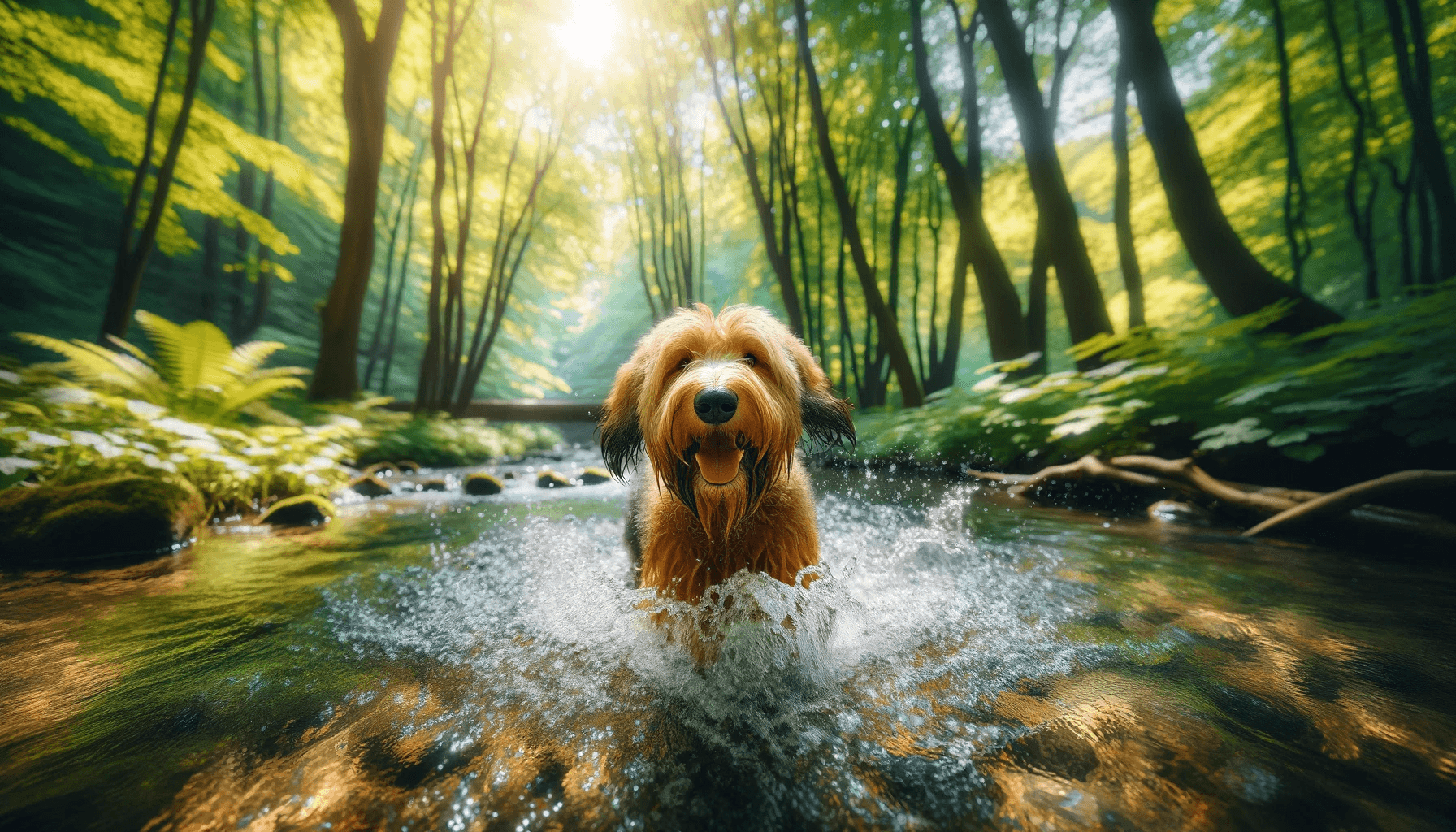 These breeds were chosen for their keen sense of smell, strong swimming ability, and determination. Otter hunting, which involved tracking and pursuing otters along rivers and streams, required dogs that could navigate both land and water effectively. The Otterhound's rough, double coat, webbed feet, and robust build made it ideally suited for this task.
These breeds were chosen for their keen sense of smell, strong swimming ability, and determination. Otter hunting, which involved tracking and pursuing otters along rivers and streams, required dogs that could navigate both land and water effectively. The Otterhound's rough, double coat, webbed feet, and robust build made it ideally suited for this task.
The breed's popularity was closely tied to the practice of otter hunting, which was eventually banned in the UK in 1978 due to conservation efforts. With the decline of its traditional role, the Otterhound became increasingly rare.
Group: Hound Group
Temperament: Otterhounds are known for their friendly, enthusiastic, and independent nature. They are affectionate, have a good sense of humor, and can be boisterous.
Height: Typically stands about 24-27 inches (61-69 cm) for males and 23-26 inches (58-66 cm) for females.
Weight: Usually weighs between 80-115 pounds (36-52 kg) for males and 65-100 pounds (29-45 kg) for females.
Coat and Color: They have a dense, rough, and waterproof double coat. Common colors include liver and tan, black and tan, and various shades of grizzle.
Life Expectancy: The average lifespan is around 10-13 years.
Activity Level: Moderate; they require regular exercise to stay healthy and happy.
Trainability: Intelligent but can be stubborn, requiring patient and consistent training methods.
Socialization: Early socialization is important due to their strong hunting instincts and independent nature.
Grooming Needs: High; their thick, oily coat requires regular grooming to prevent matting and maintain health.
Health Issues: Generally a robust breed but can be prone to hip dysplasia, gastric torsion, and elbow dysplasia.
Adaptability: Adaptable to various living situations but do best with access to outdoor space.
Living Space Compatibility: Ideal for homes with yards where they can exercise; less suited for apartment living.
Family Situation: Good with families, including those with children, due to their playful and loving nature. Their size and energy level require supervision around smaller children.
The Otterhound is a friendly and enthusiastic breed, well-suited for active households with space for exercise. Known for their playful nature and independent character, they require regular grooming and enjoy outdoor activities. Otterhounds are affectionate family pets that thrive in environments where they can be both physically and mentally stimulated. The Kennel Club
Pembroke Welsh Corgi
The Pembroke Welsh Corgi, renowned for its association with Queen Elizabeth II, has a rich history in Wales, where it was used as a herding dog. Believed to have been introduced by Flemish weavers in the 10th century, the breed excelled in herding cattle by nipping at their heels and ducking away from kicks.
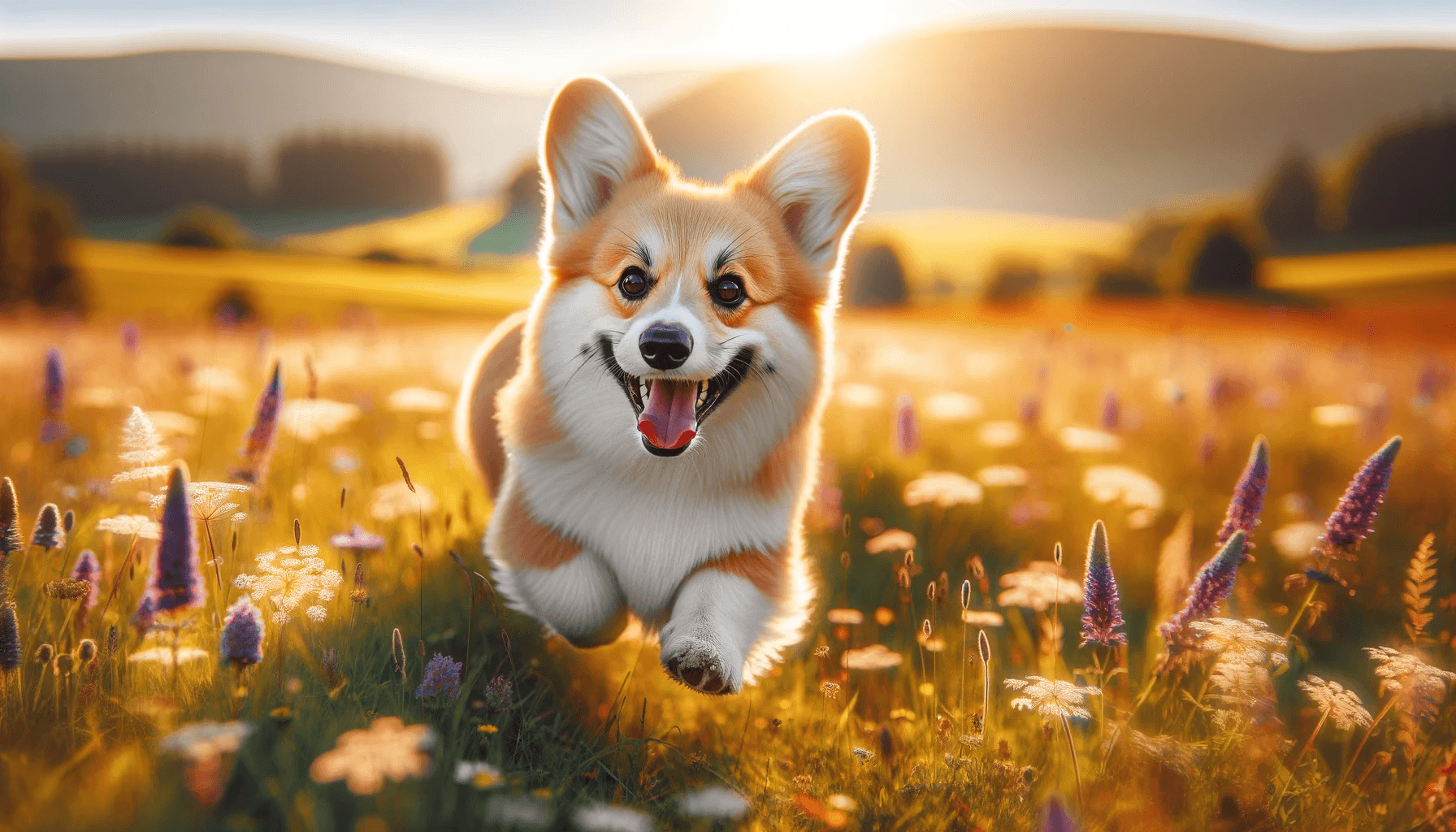 Its low stature was an evolutionary advantage in this role. The Pembroke and the Cardigan Welsh Corgi were initially considered the same breed, but they were separated into two distinct breeds in the early 20th century.
Its low stature was an evolutionary advantage in this role. The Pembroke and the Cardigan Welsh Corgi were initially considered the same breed, but they were separated into two distinct breeds in the early 20th century.
The Pembroke Welsh Corgi gained immense popularity due to its association with the British royal family, particularly with Queen Elizabeth II, who received her first Pembroke Corgi as a child and has owned many since.
Group: Herding Group
Temperament: Pembroke Welsh Corgis are known for being intelligent, active, and affectionate. They are alert, sociable, and have a friendly disposition.
Height: Typically stands about 10-12 inches (25-30 cm) at the shoulder.
Weight: Usually weighs between 25-30 pounds (11-14 kg).
Coat and Color: They have a double coat, with a thick undercoat and a longer topcoat. Common colors include red, sable, fawn, black and tan, often with white markings.
Life Expectancy: The average lifespan is around 12-15 years.
Activity Level: High; they require regular exercise and enjoy activities like herding, obedience, and agility training.
Trainability: Highly trainable, known for their intelligence and eagerness to learn.
Socialization: Socialization from a young age is important, particularly to manage their herding instincts around children and other animals.
Grooming Needs: Moderate; their coat requires regular brushing to manage shedding.
Health Issues: Can be prone to health issues such as hip dysplasia, degenerative myelopathy, and eye problems.
Adaptability: Adaptable to various living situations, including apartments, as long as they get enough physical and mental exercise.
Living Space Compatibility: Can live comfortably in both apartments and houses with adequate exercise.
Family Situation: Good with families, including those with children. They are loyal and protective, making them a great family companion.
The Pembroke Welsh Corgi is an intelligent, active, and affectionate breed, suitable for various living situations including apartments, as long as they receive adequate exercise. Known for their friendly and loyal nature, they make excellent companions for families, including those with children. The Kennel Club
Pointer
The Pointer, known for its impressive hunting skills, originated in England around the 17th century. It was bred to locate and point to game birds, particularly in open terrain. The breed's ancestors likely included various types of hunting dogs, including the Spanish Pointer, which was brought to England from the Continent.
 These dogs were valued for their exceptional sense of smell and their ability to point, a stance they take when they find game, which was crucial for hunters before the advent of firearms.
These dogs were valued for their exceptional sense of smell and their ability to point, a stance they take when they find game, which was crucial for hunters before the advent of firearms.
Over time, the Pointer was refined and developed in England to suit the evolving needs of bird hunting. They were crossed with Greyhounds to enhance their speed and with Foxhounds to improve their stamina and scenting ability. By the 18th century, the Pointer had become well-established as a distinct breed.
Group: Sporting Group
Temperament: Pointers are known for their even-tempered, friendly, and alert nature. They are energetic, intelligent, and exhibit a strong hunting instinct.
Height: Typically stands about 23-28 inches (58-71 cm) for males and 21-26 inches (53-66 cm) for females.
Weight: Usually weighs between 45-75 pounds (20-34 kg), with males generally being heavier.
Coat and Color: They have a short, smooth coat. Common colors include liver, lemon, black, or orange; either solid or combined with white.
Life Expectancy: The average lifespan is around 12-17 years.
Activity Level: High; they are active dogs that require plenty of exercises, ideally with opportunities to run and play off-leash.
Trainability: Highly trainable due to their intelligence and eagerness to work. They respond well to positive training methods.
Socialization: Early socialization is important, particularly to channel their hunting instincts positively.
Grooming Needs: Low; their short coat requires minimal grooming, primarily regular brushing and occasional baths.
Health Issues: Generally healthy, but can be prone to some conditions such as hip dysplasia and certain genetic eye abnormalities.
Adaptability: Adaptable to various living environments but thrive in settings where they have ample space to exercise.
Living Space Compatibility: Best suited for homes with yards, though they can adapt to apartment living if sufficiently exercised.
Family Situation: Good with families, including those with children. Their energetic and playful nature makes them excellent companions for active households.
Pointers are energetic, intelligent, and friendly dogs, well-suited for active families and homes with space for exercise. Known for their strong hunting instincts and trainability, they make excellent companions for outdoor activities and are adaptable to various living environments, including homes with children. The Kennel Club
Pug
The Pug, with its distinctive appearance and charming personality, has origins dating back to ancient China, where it was a favored pet among Buddhist monasteries in Tibet and Chinese emperors. Bred to be lap dogs, Pugs were valued for their compact size and sociable nature.
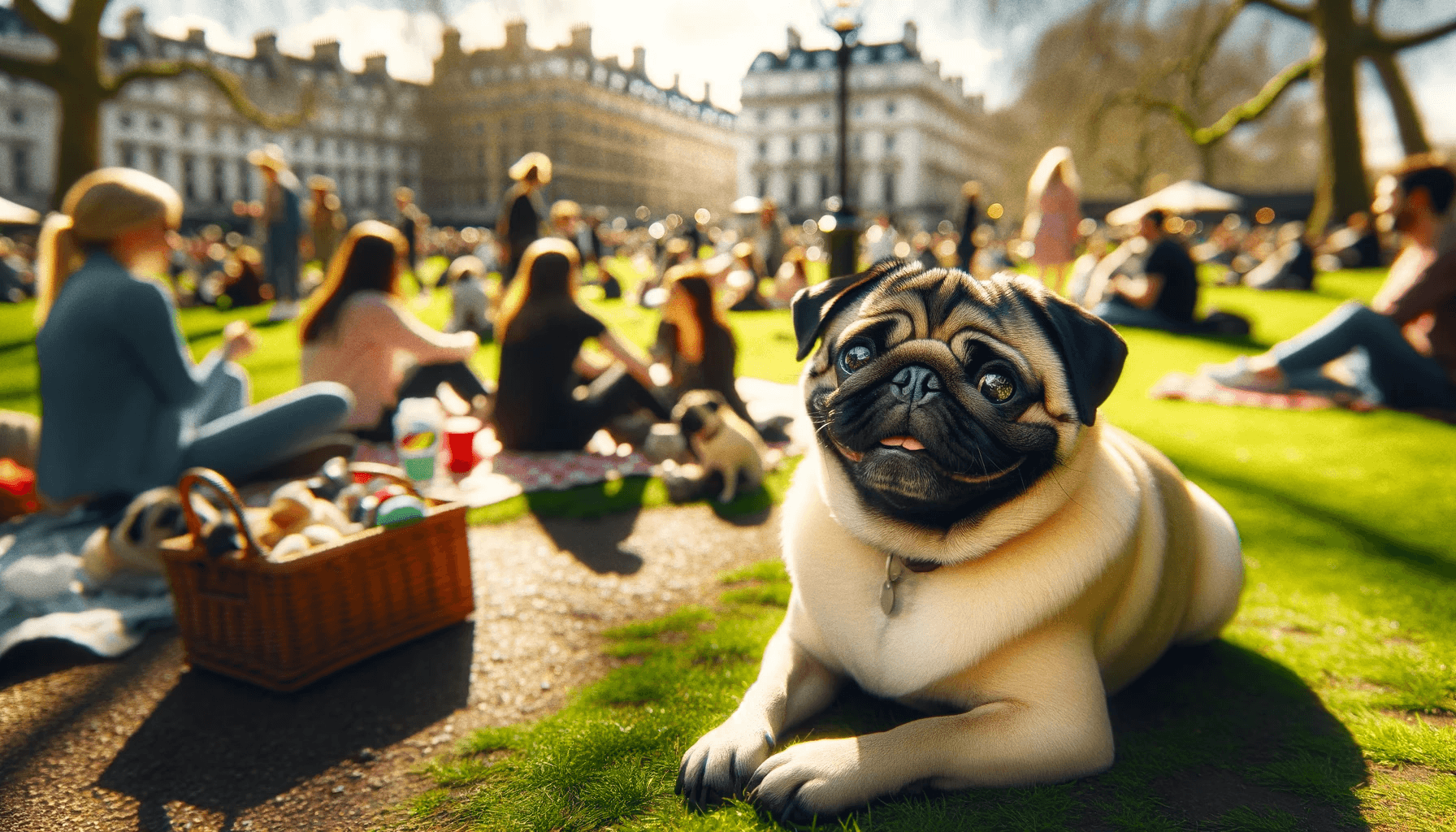 The breed was brought to Europe in the 16th century through Dutch traders, where it quickly gained popularity among European nobility, including becoming a favorite in the Dutch royal court.
The breed was brought to Europe in the 16th century through Dutch traders, where it quickly gained popularity among European nobility, including becoming a favorite in the Dutch royal court.
In England, Pugs continued to enjoy royal favor and were bred and popularized during the Victorian era. Queen Victoria herself had a deep affection for Pugs, which contributed to their popularity. Over the centuries, Pugs have been cherished not only for their companionship but also for their unique appearance, characterized by their expressive faces and compact, muscular bodies.
Group: Toy Group
Temperament: Pugs are known for their friendly, sociable, and affectionate nature. They are charming, playful, and have a bit of a mischievous streak.
Height: Typically stands about 10-13 inches (25-33 cm) tall at the shoulder.
Weight: Usually weighs between 14-18 pounds (6-8 kg).
Coat and Color: They have a smooth, short coat. Common colors include fawn, black, apricot, and silver.
Life Expectancy: The average lifespan is around 13-15 years.
Activity Level: Moderate; they enjoy playtime and short walks but can be prone to laziness.
Trainability: Intelligent but can be stubborn, requiring patience and consistency in training.
Socialization: They are naturally sociable dogs but benefit from early socialization to enhance their friendly disposition.
Grooming Needs: Low to moderate; regular brushing is needed, and they require cleaning of facial wrinkles to prevent infection.
Health Issues: Prone to certain health problems such as brachycephalic syndrome, obesity, and eye issues.
Adaptability: Highly adaptable and can thrive in various living environments, including apartments.
Living Space Compatibility: Suitable for apartment living due to their small size and moderate exercise needs.
Family Situation: Excellent with families, including those with children and other pets. Their loving and gentle nature makes them a great companion for all ages.
Pugs are affectionate, sociable pets well-suited for any living situation, including apartments. Their playful yet easygoing nature makes them great companions for families and individuals alike. While they have moderate grooming and exercise needs, their charming personality and adaptability make them beloved pets. The Kennel Club
Redbone Coonhound
The Redbone Coonhound, although recognized as an American breed, has its origins linked to foxhounds and bloodhounds imported to the United States from Britain and Ireland. Developed in the late 18th to early 19th century, this breed was refined in the American South, specifically in Georgia.
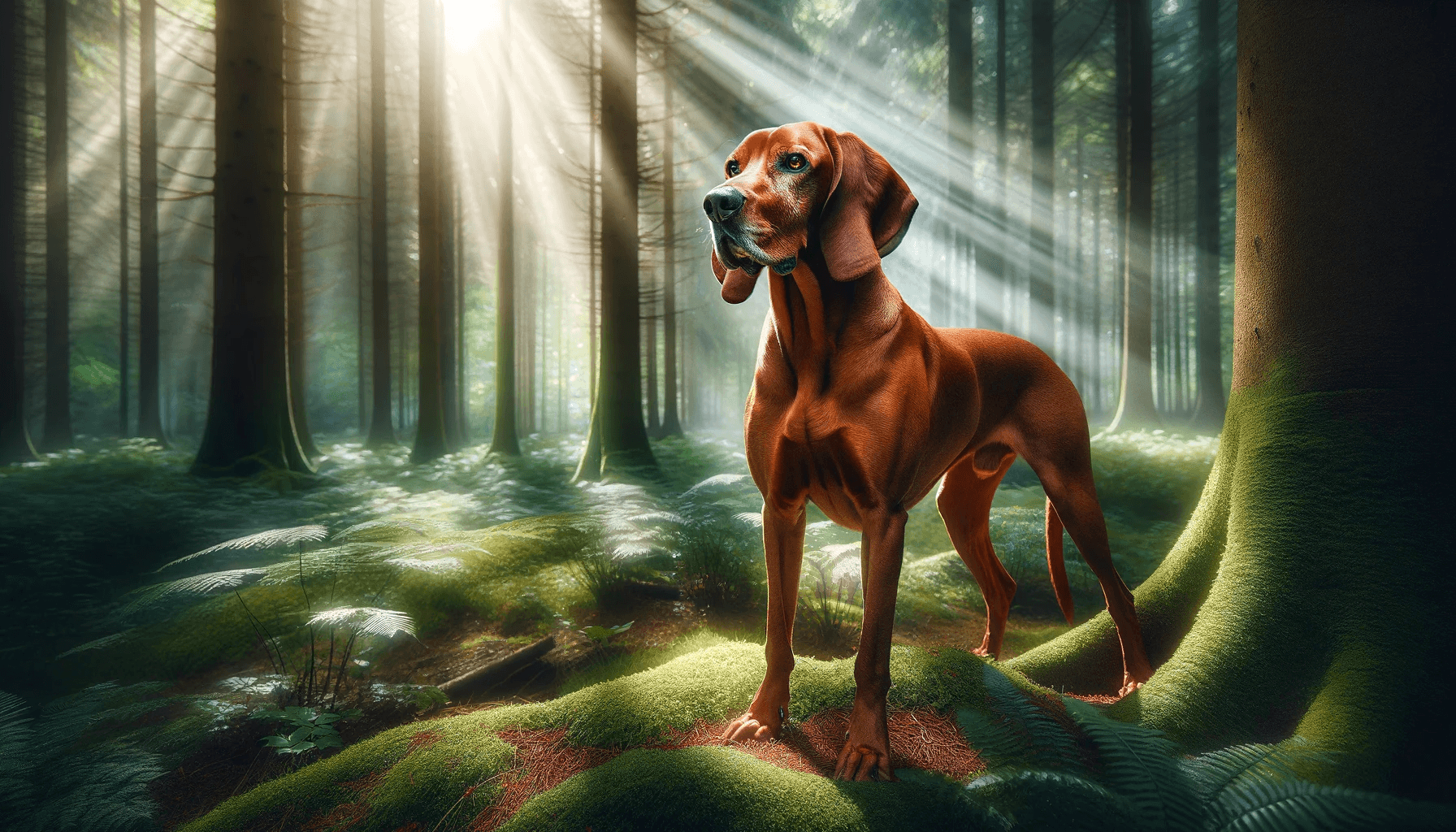 The Redbone Coonhound was selectively bred to adapt to the varied and challenging hunting terrain of the region, and its name is derived from its distinctive red coat, a trait selectively encouraged by breeders.
The Redbone Coonhound was selectively bred to adapt to the varied and challenging hunting terrain of the region, and its name is derived from its distinctive red coat, a trait selectively encouraged by breeders.
Initially bred for hunting raccoons and other game, the Redbone Coonhound's excellent tracking skills, agility, and adaptability in various terrains made it a valued companion for American hunters. Its keen sense of smell, coupled with a strong, even temperament, made the breed effective in treeing and tracking game.
Group: Hound Group
Temperament: Redbone Coonhounds are known for being friendly, confident, and energetic. They are eager to please, making them good family pets, but they also have a strong hunting instinct.
Height: Males typically stand about 22-27 inches (56-69 cm) tall, and females are slightly shorter.
Weight: Usually weighs between 45-70 pounds (20-32 kg).
Coat and Color: They have a short, smooth coat, with a rich red color being their most distinguishing feature.
Life Expectancy: The average lifespan is around 11-12 years.
Activity Level: High; they are active dogs that require plenty of exercises, especially outdoor activities.
Trainability: Intelligent and trainable, but their hunting instincts can sometimes distract them. Consistent, positive training methods work best.
Socialization: Early socialization is important, especially to curb their strong prey drive and to ensure they are well-rounded.
Grooming Needs: Low; their short coat requires basic grooming, including regular brushing and occasional baths.
Health Issues: Generally healthy, but can be prone to typical large breed issues like hip dysplasia, and ear infections due to their floppy ears.
Adaptability: They can adapt to various living situations, but they thrive in environments where they have space to roam and explore.
Living Space Compatibility: Best suited for homes with yards. Their energy and size make apartment living challenging unless they have ample exercise opportunities.
Family Situation: Good with families, including those with children. Their friendly nature makes them compatible companions, but their size and energy level necessitate supervision around small children and other pets.
The Redbone Coonhound is an energetic and friendly breed, suitable for active families with space for exercise. Known for their hunting skills and affable nature, they are adaptable but thrive best in environments where they can be active and engaged. Their easy-going temperament makes them a good fit for family life. The Kennel Club
Saluki
The Saluki, one of the oldest dog breeds, has its origins in the Middle East, rather than Britain. Revered in ancient times, Salukis are believed to date back to ancient Egypt, where they were considered royal dogs and often mummified alongside pharaohs.
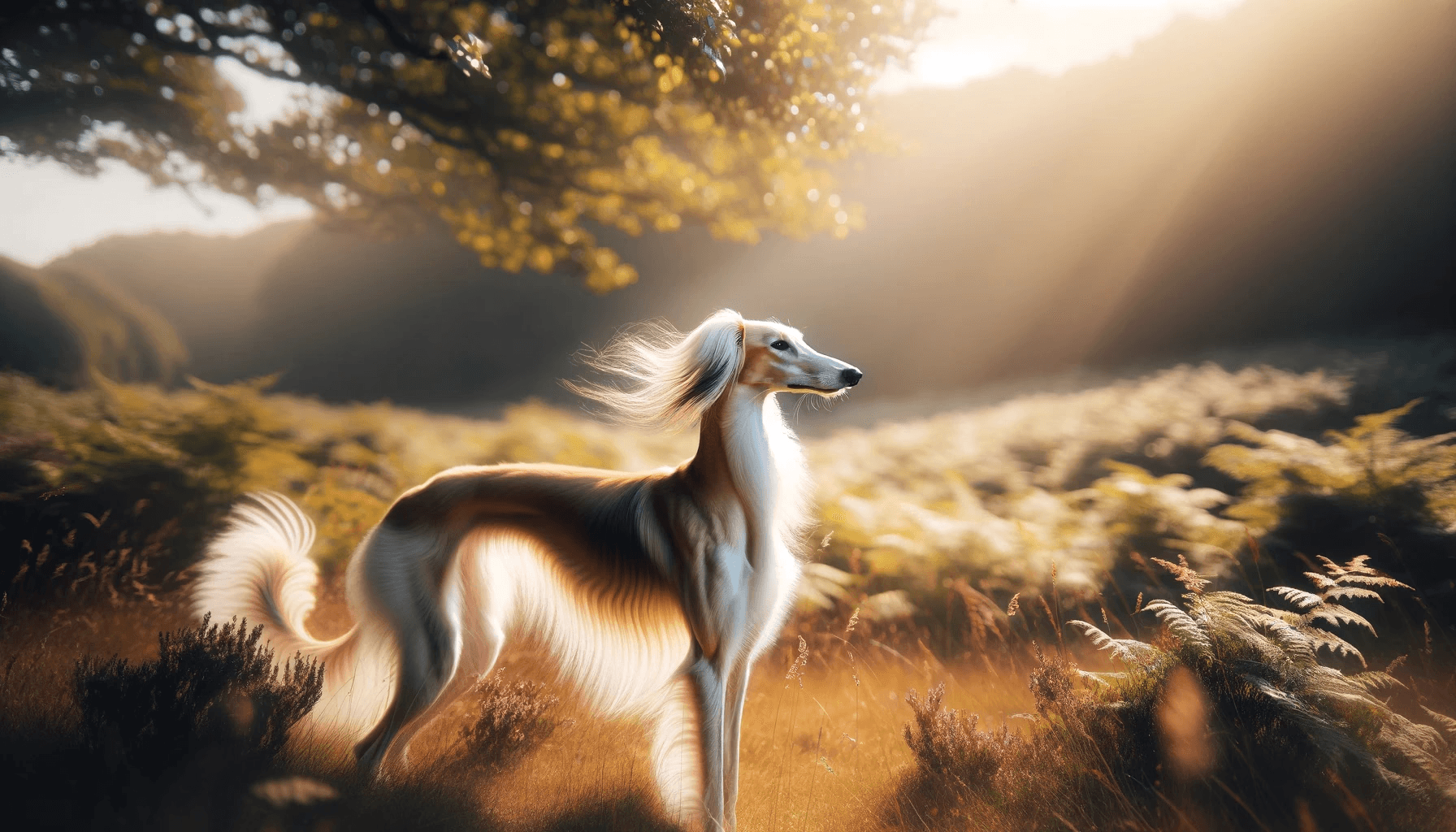 Known for their grace and speed, Salukis were bred by nomadic tribes for hunting due to their exceptional sight and agility, making them adept at chasing game over long distances in desert conditions.
Known for their grace and speed, Salukis were bred by nomadic tribes for hunting due to their exceptional sight and agility, making them adept at chasing game over long distances in desert conditions.
Salukis were introduced to Europe, including Britain, primarily in the 19th and 20th centuries. They quickly gained admiration for their elegance and hunting prowess. Recognized by major kennel clubs, they are now prized as show dogs and companions, while still retaining their strong hunting instincts.
Group: Hound Group
Temperament: Salukis are known for their reserved, graceful, and independent nature. They are often aloof with strangers but loyal to their families.
Height: Typically stands about 23-28 inches (58-71 cm) for males and 17-23 inches (43-58 cm) for females.
Weight: Usually weighs between 40-60 pounds (18-27 kg).
Coat and Color: They have a smooth, silky coat and feathering on their ears and tail. Common colors include white, cream, fawn, golden, red, grizzle and tan, tricolor (white, black, and tan), and black and tan.
Life Expectancy: The average lifespan is around 12-14 years.
Activity Level: High; Salukis are active dogs that require plenty of exercises, especially opportunities to run.
Trainability: Intelligent but can be independent and challenging to train. They respond best to patient, consistent training methods.
Socialization: Early and consistent socialization is important due to their reserved nature.
Grooming Needs: Low; their coat requires minimal grooming, but they do need regular brushing.
Health Issues: Generally a healthy breed, but can be prone to some genetic conditions like heart issues and hip dysplasia.
Adaptability: Adaptable to various living situations but do best in homes where they have space to exercise.
Living Space Compatibility: Best suited for homes with yards. Can adapt to apartment living if given sufficient exercise.
Family Situation: They can be good with families, but their reserved nature means they may not be ideal for homes with small children. They are best suited for families who understand their need for space and gentle interaction.
The Saluki is a graceful and independent breed, well-suited for active households that can accommodate their exercise needs. While reserved in nature, they are loyal to their families and adapt well to various living environments, thriving best in homes with space for running and play. The Kennel Club
Samoyed
The Samoyed, known for its striking white coat and friendly expression, originates from the Siberian region, not Britain. Traditionally used by the Samoyedic peoples of Siberia, these dogs were valued for their versatility, aiding in herding reindeer, hunting, and pulling sleds. Their amiable nature and endurance in cold climates made them indispensable companions in the harsh Arctic environment.
 The breed gained international recognition in the late 19th and early 20th centuries when Arctic explorers brought Samoyeds to England. These dogs played significant roles in polar expeditions due to their strength and ability to withstand extreme cold. In Britain, their striking appearance and gentle disposition quickly made them popular as both working dogs and companions.
The breed gained international recognition in the late 19th and early 20th centuries when Arctic explorers brought Samoyeds to England. These dogs played significant roles in polar expeditions due to their strength and ability to withstand extreme cold. In Britain, their striking appearance and gentle disposition quickly made them popular as both working dogs and companions.
Group: Working Group
Temperament: Samoyeds are known for their friendly, gentle, and social nature. They are playful, have a cheerful disposition, and are known for their characteristic "Sammy smile."
Height: Males typically stand about 21-23.5 inches (53-60 cm) tall, and females are slightly shorter.
Weight: Males usually weigh between 45-65 pounds (20-30 kg), and females are slightly lighter.
Coat and Color: They have a dense, double-layer coat, which is white, cream, or biscuit-colored.
Life Expectancy: The average lifespan is around 12-14 years.
Activity Level: High; Samoyeds are energetic and enjoy regular exercise and playtime.
Trainability: Intelligent and relatively easy to train, but they can be independent and stubborn at times.
Socialization: Early socialization is important to nurture their friendly nature and prevent them from becoming too reserved or shy.
Grooming Needs: High; their thick coat requires regular brushing to prevent matting and to manage shedding.
Health Issues: Can be prone to certain conditions such as hip dysplasia, eye problems, and heart issues.
Adaptability: Adaptable to various living environments, but they need space to exercise and can struggle in very hot climates.
Living Space Compatibility: Best suited for homes with yards where they can play, but they can adapt to apartment living if sufficiently exercised.
Family Situation: Excellent with families, including those with children. Their friendly and playful nature makes them a great companion for active households.
The Samoyed is a friendly and sociable breed, known for its distinctive white coat and cheerful disposition. Ideal for active families, they require regular exercise and grooming. Adaptable to various living situations, Samoyeds thrive in environments where they can be active and are well-suited for homes with space to play. The Kennel Club
Scottish Terrier
The Scottish Terrier, affectionately known as the Scottie, has its origins in Scotland, where it was bred to hunt vermin on farms and to hunt badgers and foxes in the Highlands. Dating back to the late 1700s, Scotties are one of the oldest highland terrier breeds, and their exact ancestry is somewhat obscure due to minimal historical records. However, it's widely believed that they share a common lineage with other terriers of Scotland, developed for their tenacity and ability to hunt in rugged terrains.
 The breed gained popularity in the 19th century, becoming a symbol of Scotland's cultural heritage. Scotties were recognized for their distinctive silhouette, wiry coat, and bold, confident character. They received royal favor when Queen Victoria owned a Scottish Terrier, and their popularity soared, especially in the United States, in the early 20th century.
The breed gained popularity in the 19th century, becoming a symbol of Scotland's cultural heritage. Scotties were recognized for their distinctive silhouette, wiry coat, and bold, confident character. They received royal favor when Queen Victoria owned a Scottish Terrier, and their popularity soared, especially in the United States, in the early 20th century.
Group: Terrier Group
Temperament: Scottish Terriers are known for their independent, confident, and sometimes aloof personality. They are bold, dignified, and can be quite feisty.
Height: Typically stands about 10 inches (25 cm) tall at the shoulder.
Weight: Usually weighs between 18-22 pounds (8-10 kg).
Coat and Color: They have a distinctive double coat with a hard, wiry outer coat and a soft undercoat. Common colors include black, wheaten, or brindle.
Life Expectancy: The average lifespan is around 12-15 years.
Activity Level: Moderate; they enjoy regular walks and playtime but are not overly energetic.
Trainability: Intelligent but can be stubborn, requiring consistent and patient training.
Socialization: Early socialization is important to manage their strong-willed nature and to get along with other pets.
Grooming Needs: Moderate; their wiry coat requires regular brushing and occasional professional grooming.
Health Issues: Can be prone to certain health conditions like Scottie Cramp, von Willebrand's disease, and certain types of cancers.
Adaptability: Adaptable to various living environments, including apartments, as long as they receive enough physical and mental stimulation.
Living Space Compatibility: Suitable for both apartments and houses, provided they get regular exercise.
Family Situation: Good with families, especially if raised with them from a young age. Their independent nature makes them suitable for people who appreciate a dog with a strong personality.
The Scottish Terrier, known for its bold and independent nature, is a versatile breed suitable for various households, including apartments. They require moderate exercise and grooming and are well-suited for families who appreciate a dog with a strong character and distinctive personality. The Kennel Club
Sealyham Terrier
The Sealyham Terrier, a small but sturdy breed, originated in Wales, specifically in the Sealyham region, from which it gets its name. Developed in the 19th century by Captain John Edwards, the breed was created to hunt small game such as otters, foxes, and badgers. Its ancestors likely include several terrier breeds, such as the Dandie Dinmont, Corgi, and West Highland White Terrier, contributing to its tenacity, courage, and distinctive appearance.
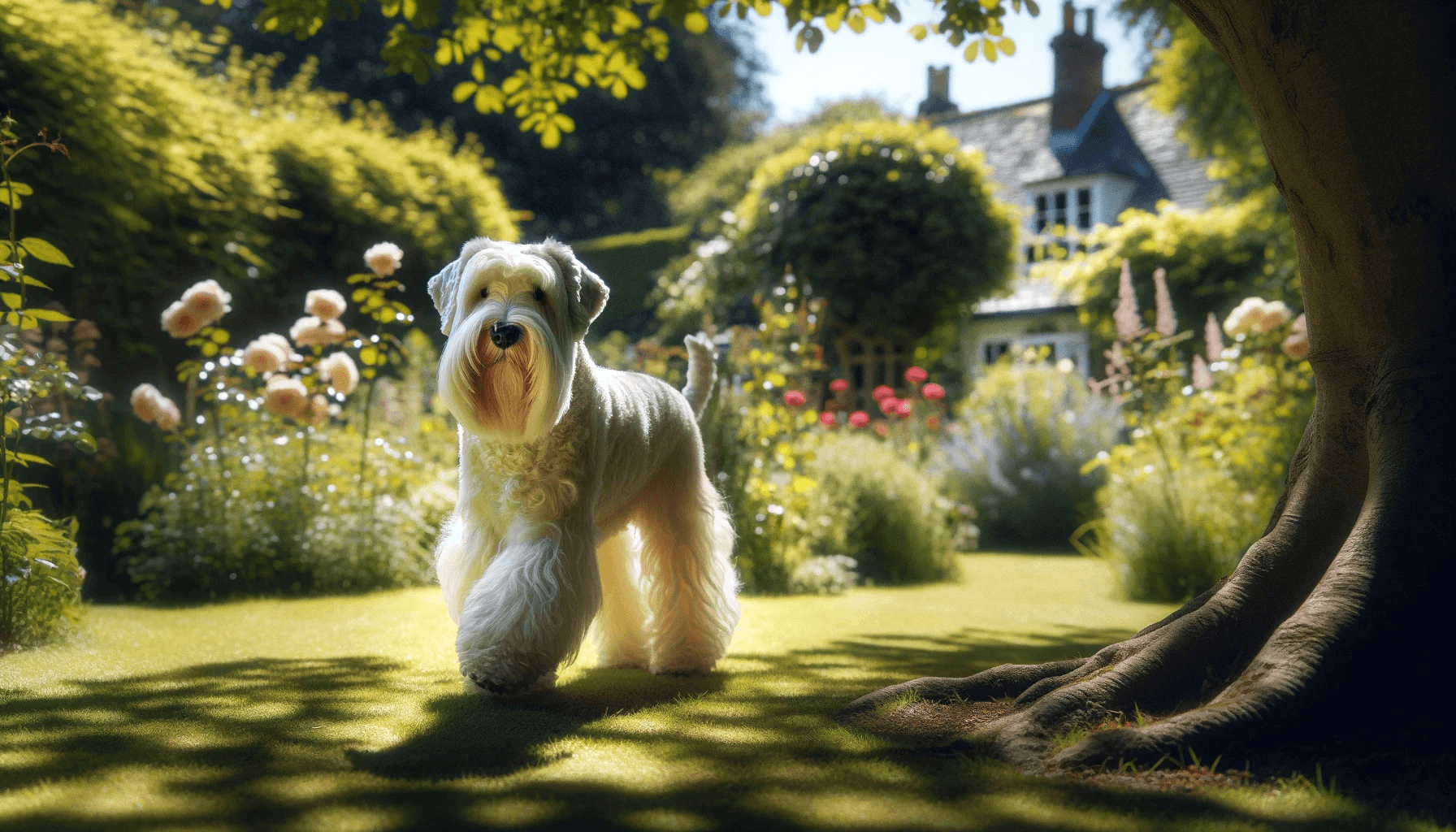 Initially bred for its hunting prowess, the Sealyham Terrier's compact size and fearless nature made it particularly adept at tackling vermin in the rugged Welsh terrain. Over time, the breed transitioned from a working terrier to a show dog and companion, gaining popularity in the early 20th century, especially in the United States and Britain.
Initially bred for its hunting prowess, the Sealyham Terrier's compact size and fearless nature made it particularly adept at tackling vermin in the rugged Welsh terrain. Over time, the breed transitioned from a working terrier to a show dog and companion, gaining popularity in the early 20th century, especially in the United States and Britain.
Group: Terrier Group
Temperament: Sealyham Terriers are known for their outgoing, friendly, and even-tempered nature. They are spirited and alert, yet can be quite independent.
Height: Typically stands about 10-12 inches (25-30 cm) tall at the shoulder.
Weight: Usually weighs between 20-24 pounds (9-11 kg).
Coat and Color: They have a dense, wiry coat with a weather-resistant undercoat. Common colors include white, sometimes with lemon, tan, or badger markings on the head and ears.
Life Expectancy: The average lifespan is around 12-14 years.
Activity Level: Moderate; they enjoy regular exercise and play but are not overly energetic.
Trainability: Intelligent and generally responsive to training, but their independent streak can require a patient and consistent approach.
Socialization: Early socialization is important to develop their friendly disposition and to ensure they are well-rounded.
Grooming Needs: High; their coat requires regular grooming, including brushing and professional trimming.
Health Issues: Generally healthy but can be prone to certain genetic health issues, such as retinal atrophy and deafness.
Adaptability: Adaptable to various living environments, including apartments, as long as they have adequate exercise.
Living Space Compatibility: Suitable for both apartment and house living, provided their exercise needs are met.
Family Situation: Good with families and can do well with children. Their playful nature and adaptability make them a suitable companion for a variety of home settings.
The Sealyham Terrier, with its friendly and spirited personality, is adaptable to various living environments and suitable for families. They require moderate exercise and regular grooming, making them a compatible companion for both active households and apartment living. The Kennel Club
Shetland Sheepdog
The Shetland Sheepdog, often known as the Sheltie, originates from the Shetland Islands in Scotland. This breed was developed to herd sheep, ponies, and poultry on the rugged terrain of the islands. Their ancestors likely include the Scottish Collie and the King Charles Spaniel, among others, and were bred for their small size, intelligence, and herding ability. The harsh climate of the Shetland Islands played a crucial role in shaping this breed into a hardy and resourceful dog.
 In the early 20th century, the Shetland Sheepdog was introduced to mainland Britain, where it quickly became popular as a companion and show dog. Despite its resemblance to the Rough Collie, the Sheltie is a distinct breed with its own unique characteristics.
In the early 20th century, the Shetland Sheepdog was introduced to mainland Britain, where it quickly became popular as a companion and show dog. Despite its resemblance to the Rough Collie, the Sheltie is a distinct breed with its own unique characteristics.
Group: Herding Group
Temperament: Shetland Sheepdogs are intelligent, alert, and affectionate. They are known for their loyalty, responsiveness, and gentle nature.
Height: Typically stands about 13-16 inches (33-41 cm) at the shoulder.
Weight: Usually weighs between 15-25 pounds (7-11 kg).
Coat and Color: They have a long, dense double coat. Common colors include sable, black, and blue merle, often with white and/or tan markings.
Life Expectancy: The average lifespan is around 12-14 years.
Activity Level: Moderate to high; they are active dogs that require regular exercise and mental stimulation.
Trainability: Highly trainable due to their intelligence and eagerness to please. They excel in obedience and agility training.
Socialization: Early socialization is important to develop their friendly and confident nature, especially given their herding instincts.
Grooming Needs: High; their thick coat requires regular brushing to prevent matting and to maintain its condition.
Health Issues: Generally healthy, but can be prone to certain genetic conditions like hip dysplasia, thyroid issues, and eye problems.
Adaptability: Adaptable to various living environments, including apartments, as long as they get enough exercise.
Living Space Compatibility: Can live comfortably in both apartments and houses, provided they have adequate exercise and stimulation.
Family Situation: Excellent with families, including those with children. Their affectionate and playful nature makes them great companions for active households.
The Shetland Sheepdog is a highly trainable, intelligent, and affectionate breed, suitable for various households, including apartments, provided they have sufficient exercise. Known for their loyalty and gentle nature, Shelties make excellent family pets and adapt well to different living environments. The Kennel Club
Skye Terrier
The Skye Terrier, named after the Isle of Skye in Scotland, is one of the oldest terrier breeds. Its history dates back to the 16th century, where it was bred by farmers to protect livestock from foxes and badgers.
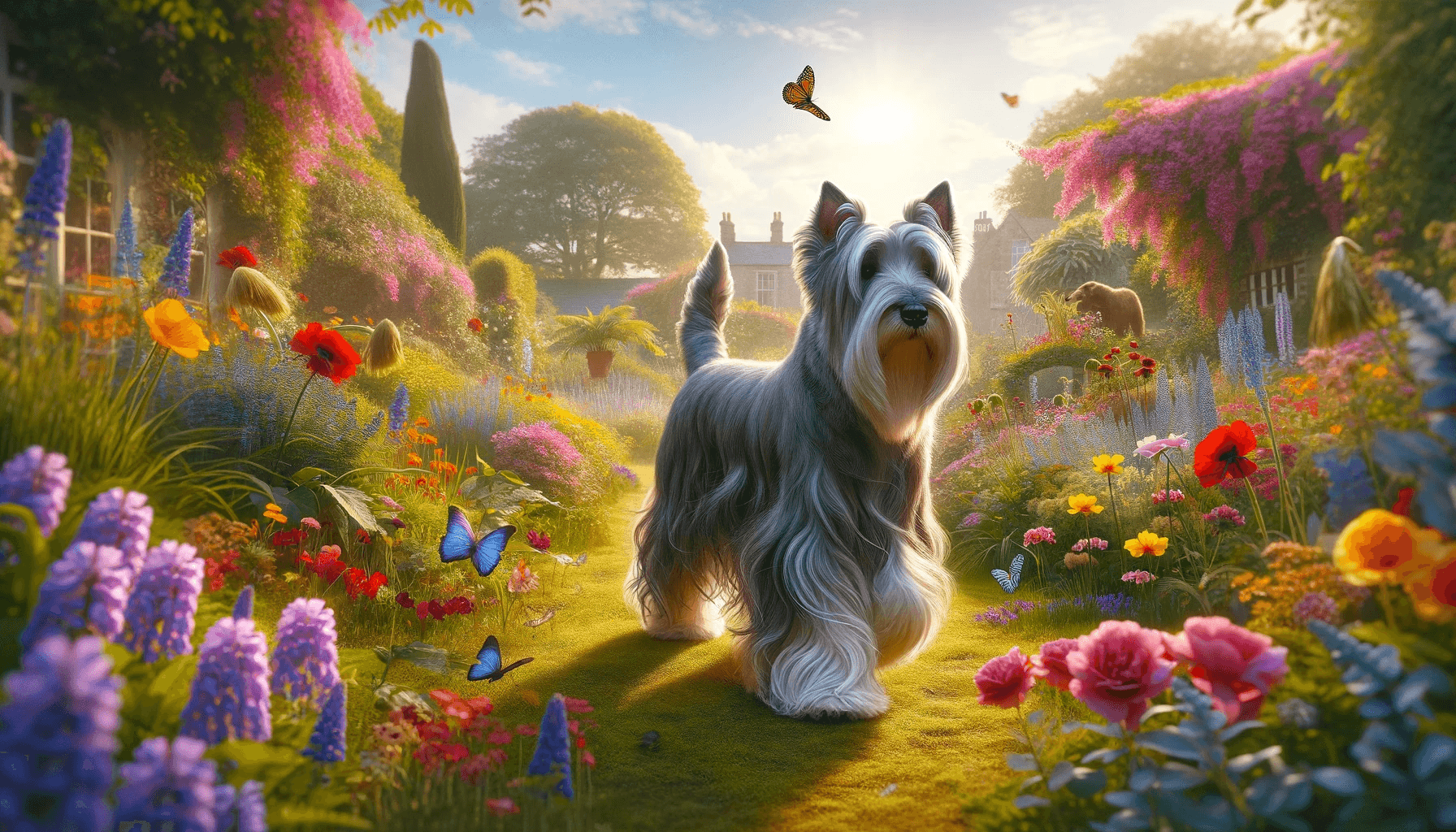 This breed's long, low body and sturdy build were ideal for pursuing prey in the rugged, rocky terrain of the Scottish Highlands. The Skye Terrier gained fame in the 19th century through the story of Greyfriars Bobby, a loyal Skye Terrier who reportedly guarded his owner's grave for 14 years, symbolizing the breed's loyalty and devotion.
This breed's long, low body and sturdy build were ideal for pursuing prey in the rugged, rocky terrain of the Scottish Highlands. The Skye Terrier gained fame in the 19th century through the story of Greyfriars Bobby, a loyal Skye Terrier who reportedly guarded his owner's grave for 14 years, symbolizing the breed's loyalty and devotion.
During the Victorian era, the Skye Terrier enjoyed popularity among the nobility and was a favorite in dog shows for its elegant appearance and dignified demeanor. Despite this, the breed has always remained relatively rare.
Group: Terrier Group
Temperament: Skye Terriers are known for their courageous, good-natured, and loyal personality. They can be reserved with strangers but are affectionate with their families.
Height: Typically stands about 10 inches (25 cm) at the shoulder.
Weight: Usually weighs between 25-40 pounds (11-18 kg).
Coat and Color: They have a distinctive long, double coat that covers the body and eyes. Common colors include black, blue, cream, gray, silver, and fawn.
Life Expectancy: The average lifespan is around 12-14 years.
Activity Level: Moderate; they enjoy regular walks and playtime but are not overly energetic.
Trainability: Intelligent but can be independent, requiring consistent and patient training.
Socialization: Early socialization is important to prevent them from becoming too shy or wary.
Grooming Needs: High; their long coat requires regular brushing to prevent matting and tangling.
Health Issues: Generally healthy, but can be prone to conditions like hypothyroidism, orthopedic problems, and dental issues.
Adaptability: Adaptable to various living environments, including apartments, as long as they get regular exercise.
Living Space Compatibility: Suitable for both apartment and house living, provided they have opportunities for daily physical activity.
Family Situation: Good with families, including those with older children. They are loyal and affectionate companions, but their reserved nature may require supervision around young children and other pets.
The Skye Terrier is a loyal and good-natured breed, suitable for various living situations, including apartments. Known for their distinctive coat and reserved temperament, they require regular grooming and moderate exercise, making them a charming and manageable companion for families and individuals. The Kennel Club
Staffordshire Bull Terrier
The Staffordshire Bull Terrier, often affectionately known as the Staffie, has its origins in the region of Staffordshire, England, dating back to the 19th century.
 The breed was initially developed for the now-outlawed sports of bull-baiting and dog fighting, combining the strength of the Bulldog with the agility and tenacity of terriers, possibly including the Black and Tan Terrier and the Manchester Terrier. After the prohibition of blood sports in 1835, the breed's focus shifted from fighting to companionship, with breeders emphasizing traits like loyalty and affection towards humans.
The breed was initially developed for the now-outlawed sports of bull-baiting and dog fighting, combining the strength of the Bulldog with the agility and tenacity of terriers, possibly including the Black and Tan Terrier and the Manchester Terrier. After the prohibition of blood sports in 1835, the breed's focus shifted from fighting to companionship, with breeders emphasizing traits like loyalty and affection towards humans.
The Staffordshire Bull Terrier gained popularity as a family pet, appreciated for its courageous yet gentle disposition. Recognized by The Kennel Club in the UK in 1935, the breed standard was established to promote its positive attributes and discourage breeding for aggression.
Group: Terrier Group
Temperament: Staffordshire Bull Terriers are known for their courage, intelligence, and affectionate nature. They are loyal and often have a friendly and gentle disposition towards people.
Height: Typically stands about 14-16 inches (36-41 cm) tall at the shoulder.
Weight: Usually weighs between 24-38 pounds (11-17 kg).
Coat and Color: They have a short, smooth coat. Common colors include black, blue, fawn, red, white, or brindle, often with white markings.
Life Expectancy: The average lifespan is around 12-14 years.
Activity Level: High; they are energetic and require regular exercise to stay healthy and happy.
Trainability: Highly trainable, responsive to positive reinforcement techniques.
Socialization: Early socialization is crucial to ensure they are well-behaved and sociable, especially given their strong personality.
Grooming Needs: Low; their short coat is easy to care for, requiring only occasional brushing and bathing.
Health Issues: Generally robust, but can be prone to certain conditions like hip dysplasia, elbow dysplasia, and hereditary cataracts.
Adaptability: Adaptable to various living environments, including apartments, as long as they receive sufficient exercise.
Living Space Compatibility: Suitable for both apartment and house living, provided they have opportunities for daily physical activity.
Family Situation: Good with families, including those with children. Known for their affectionate nature, they can make loyal and loving companions. However, like all breeds, interactions with young children should always be supervised.
The Staffordshire Bull Terrier is an affectionate, intelligent breed, well-suited for family life. Known for their loyalty and friendly nature, they adapt well to various living environments, provided they get enough exercise. Their low grooming needs and robust health make them a popular choice for active households. The Kennel Club
Sussex Spaniel
The Sussex Spaniel, a breed with deep roots in England, specifically in Sussex County, was developed in the early 19th century for hunting in dense underbrush. Bred by Mr.
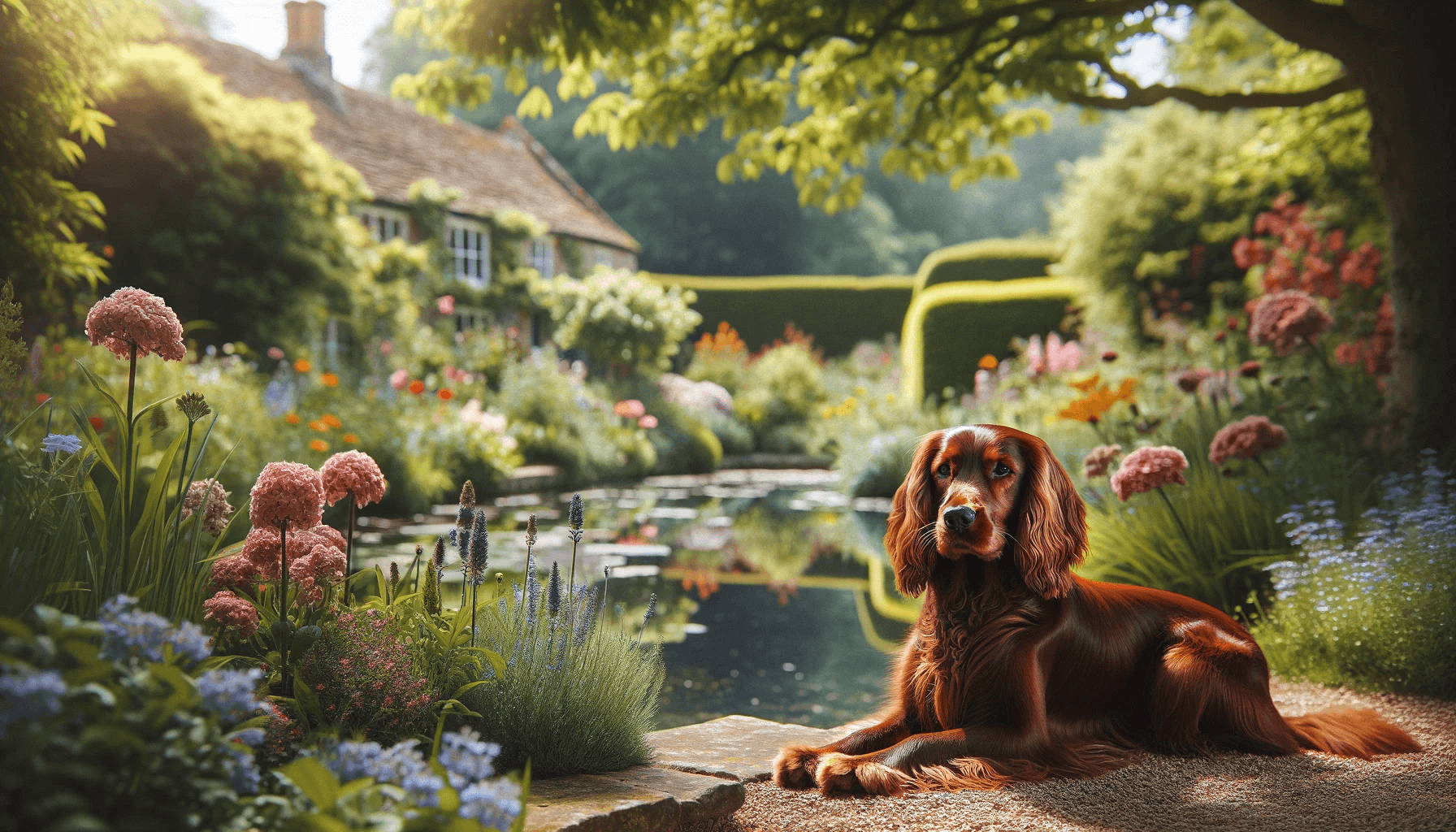 Fuller of Rosehill Park, Sussex, for over 50 years, the breed was designed to be slow and methodical in the hunt, with a distinctive rich golden liver coat, making it easily visible in the field. The Sussex Spaniel's sturdy build and short legs allowed it to move through thick undergrowth, while its melodious bark kept hunters informed of its location.
Fuller of Rosehill Park, Sussex, for over 50 years, the breed was designed to be slow and methodical in the hunt, with a distinctive rich golden liver coat, making it easily visible in the field. The Sussex Spaniel's sturdy build and short legs allowed it to move through thick undergrowth, while its melodious bark kept hunters informed of its location.
Despite its early popularity, the breed's numbers dwindled, especially after World War II, almost leading to its extinction. However, dedicated breeding programs in the post-war period helped revive the Sussex Spaniel.
Group: Sporting Group
Temperament: Sussex Spaniels are known for their calm, friendly, and affectionate nature. They are typically easygoing and somewhat serious, with a loyal and steady disposition.
Height: Typically stands about 13-15 inches (33-38 cm) at the shoulder.
Weight: Usually weighs between 35-45 pounds (16-20 kg).
Coat and Color: They have a rich, golden liver-colored, silky, and slightly wavy coat.
Life Expectancy: The average lifespan is around 11-12 years.
Activity Level: Moderate; they enjoy regular, moderate exercise and are not as high-energy as some other spaniel breeds.
Trainability: Intelligent but can be somewhat willful; responds best to gentle, consistent training methods.
Socialization: Early socialization is important to develop their confidence and prevent shyness.
Grooming Needs: Moderate; their coat requires regular brushing to prevent matting and to maintain its condition.
Health Issues: Can be prone to back problems, ear infections, and heart conditions.
Adaptability: Adaptable to various living environments, but they do appreciate having a yard to explore.
Living Space Compatibility: Suitable for both apartment and house living, provided they get enough exercise.
Family Situation: Good with families and tend to be gentle with children. Their affectionate nature makes them a good companion for family settings.
The Sussex Spaniel, known for its calm and affectionate nature, is a suitable breed for various households, including those with children. They require moderate exercise and grooming, and their loyal temperament makes them a cherished companion for families seeking a gentle and steady pet. The Kennel Club
Toy Fox Terrier
The Toy Fox Terrier, while closely associated with the American Fox Terrier, has a history that intertwines with British dog breeds. Originating in the United States, this breed was developed in the 20th century by crossing the smaller Fox Terriers, themselves originally from Britain, with other toy breeds such as the Miniature Pinscher, Italian Greyhound, and Chihuahua.
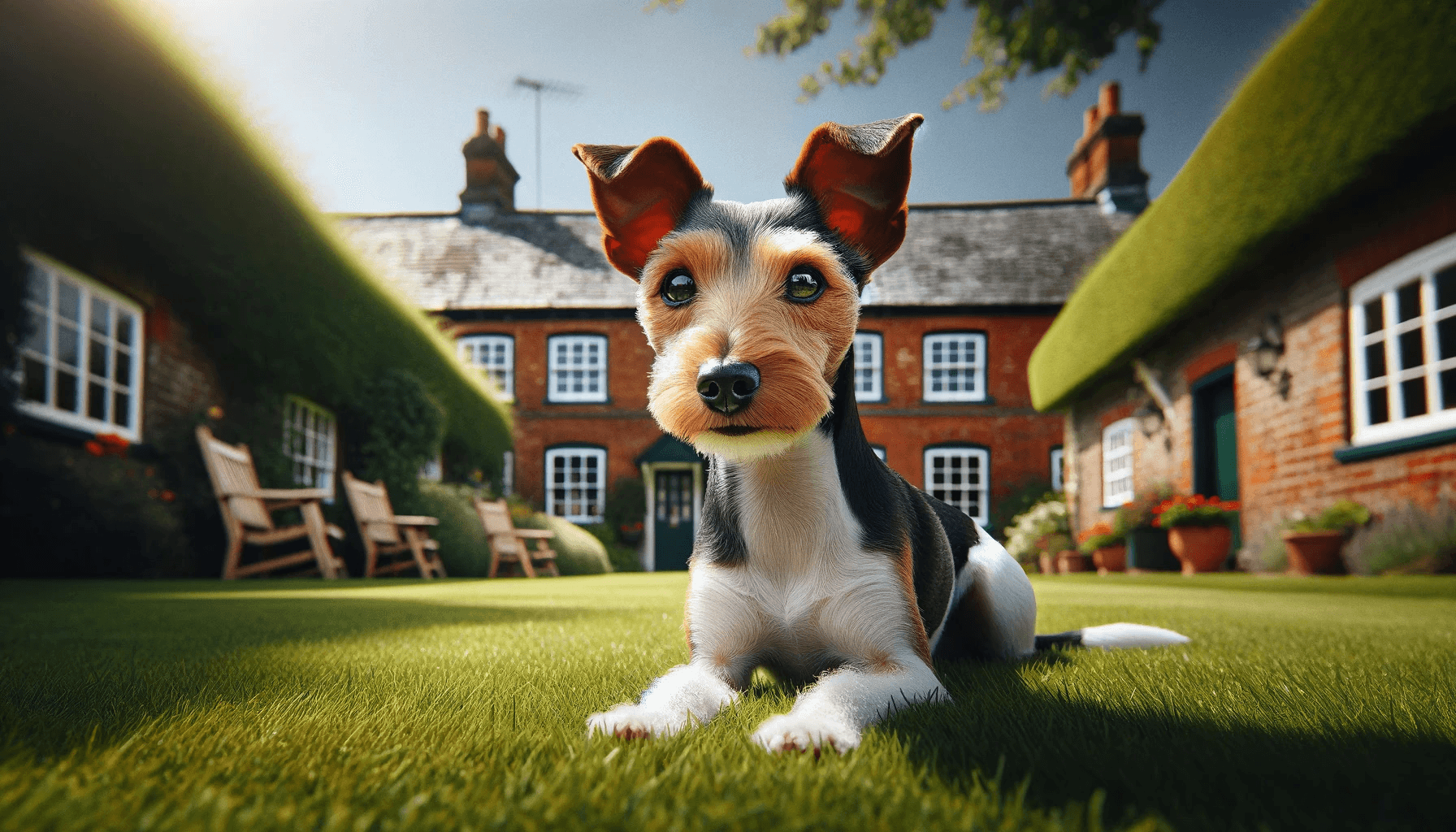 The goal was to create a smaller, companion-sized dog that retained the hunting ability and energetic temperament of the larger Fox Terrier.
The goal was to create a smaller, companion-sized dog that retained the hunting ability and energetic temperament of the larger Fox Terrier.
The Toy Fox Terrier quickly gained popularity in America for its small size, intelligence, and playful nature, making it a favored choice as a family pet. Despite its diminutive stature, the breed retains the fearless and bold characteristics of its terrier lineage, excelling in various canine sports and activities.
Group: Terrier Group (AKC)
Temperament: Toy Fox Terriers are known for being intelligent, alert, and friendly. They are energetic, playful, and show a lot of courage and tenacity despite their small size.
Height: Typically stands about 8.5 to 11.5 inches (22-29 cm) tall at the shoulder.
Weight: Usually weighs between 3.5 and 7 pounds (1.5-3 kg).
Coat and Color: They have a short, smooth coat. Common colors include white with black or tan markings, or tricolor.
Life Expectancy: The average lifespan is around 13-15 years.
Activity Level: High; they are active and agile dogs that enjoy play and exercise.
Trainability: Highly trainable, known for their intelligence and willingness to learn.
Socialization: Early socialization is important to ensure they are well-rounded and confident.
Grooming Needs: Low; their short coat requires minimal grooming, mainly regular brushing.
Health Issues: Generally healthy but can be prone to patellar luxation, legg-calve-perthes disease, and allergies.
Adaptability: Highly adaptable to various living situations, including apartments due to their small size.
Living Space Compatibility: Suitable for both apartment and house living, as long as they receive adequate exercise.
Family Situation: Good with families and can be excellent companions for older children who understand how to handle small dogs. Their playful nature makes them a fun addition to many households.
The Toy Fox Terrier is a small, energetic, and intelligent breed, ideal for various living environments, including apartments. They are highly adaptable, require minimal grooming, and make lively companions for families, especially those who enjoy an active and playful dog. The Kennel Club
Welsh Springer Spaniel
The Welsh Springer Spaniel, a distinct breed from the English Springer Spaniel, has its origins in Wales. The breed dates back to at least the Renaissance period, as evident from artworks and writings, and was initially used for flushing game in the Welsh valleys.
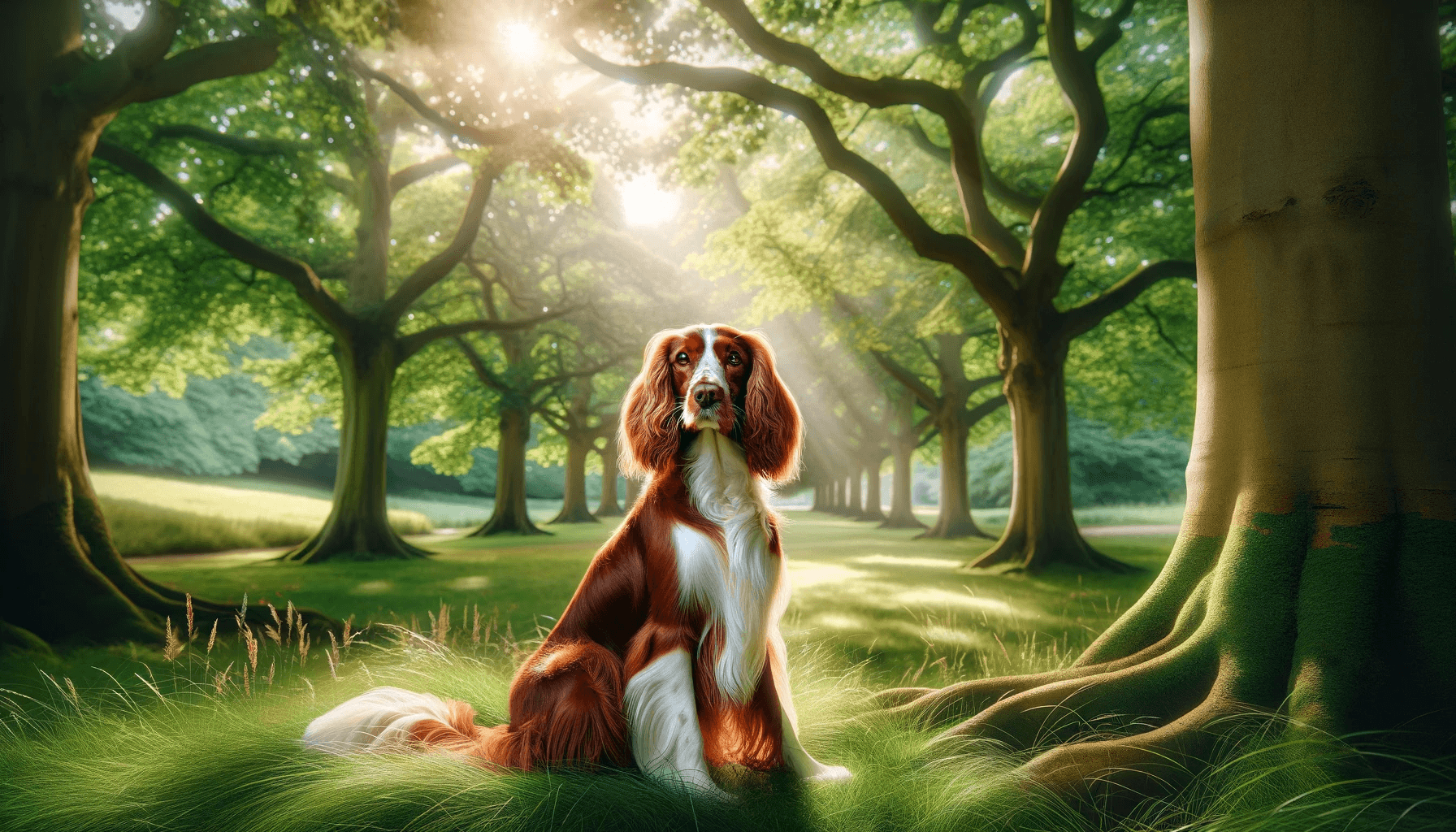 These spaniels were highly valued for their excellent hunting abilities, particularly in wet and rough terrain, and were known for being hardy and versatile.
These spaniels were highly valued for their excellent hunting abilities, particularly in wet and rough terrain, and were known for being hardy and versatile.
The breed faced a decline in popularity in the 19th century, overshadowed by the development of other spaniel breeds, but dedicated breeding efforts in the early 20th century led to its revival. The Welsh Springer Spaniel was recognized by The Kennel Club in the UK in 1902.
Group: Sporting Group
Temperament: Welsh Springer Spaniels are known for their friendly, loyal, and affectionate nature. They are generally outgoing and enthusiastic, with a gentle disposition.
Height: Typically stands about 17-19 inches (43-48 cm) at the shoulder.
Weight: Usually weighs between 35-55 pounds (16-25 kg).
Coat and Color: They have a straight, silky coat with feathering on the ears, chest, legs, and tail. The breed's coat is usually red and white.
Life Expectancy: The average lifespan is around 12-15 years.
Activity Level: High; they are active dogs that require regular exercise, including walks and opportunities to run and play.
Trainability: Intelligent and generally eager to please, making them relatively easy to train.
Socialization: Socialization from a young age is important to ensure they are well-rounded and confident.
Grooming Needs: Moderate; their coat requires regular brushing to prevent matting and to keep it in good condition.
Health Issues: Generally healthy but can be prone to certain conditions like hip dysplasia, ear infections, and eye problems.
Adaptability: Adaptable to various living environments, but they do best with access to outdoor space for exercise.
Living Space Compatibility: Suitable for both apartment and house living, as long as they receive sufficient exercise.
Family Situation: Excellent with families, including those with children. They are known for their affectionate nature and ability to bond closely with family members.
The Welsh Springer Spaniel, with its friendly and loyal demeanor, is a versatile breed suitable for families, thriving in various living environments provided they have adequate exercise. Known for their affectionate nature, they make great companions for active households. The Kennel Club
Welsh Terrier
The Welsh Terrier, originally known as the Old English Terrier or Black-and-Tan Wire Haired Terrier, hails from Wales and boasts a history dating back to the 19th century.
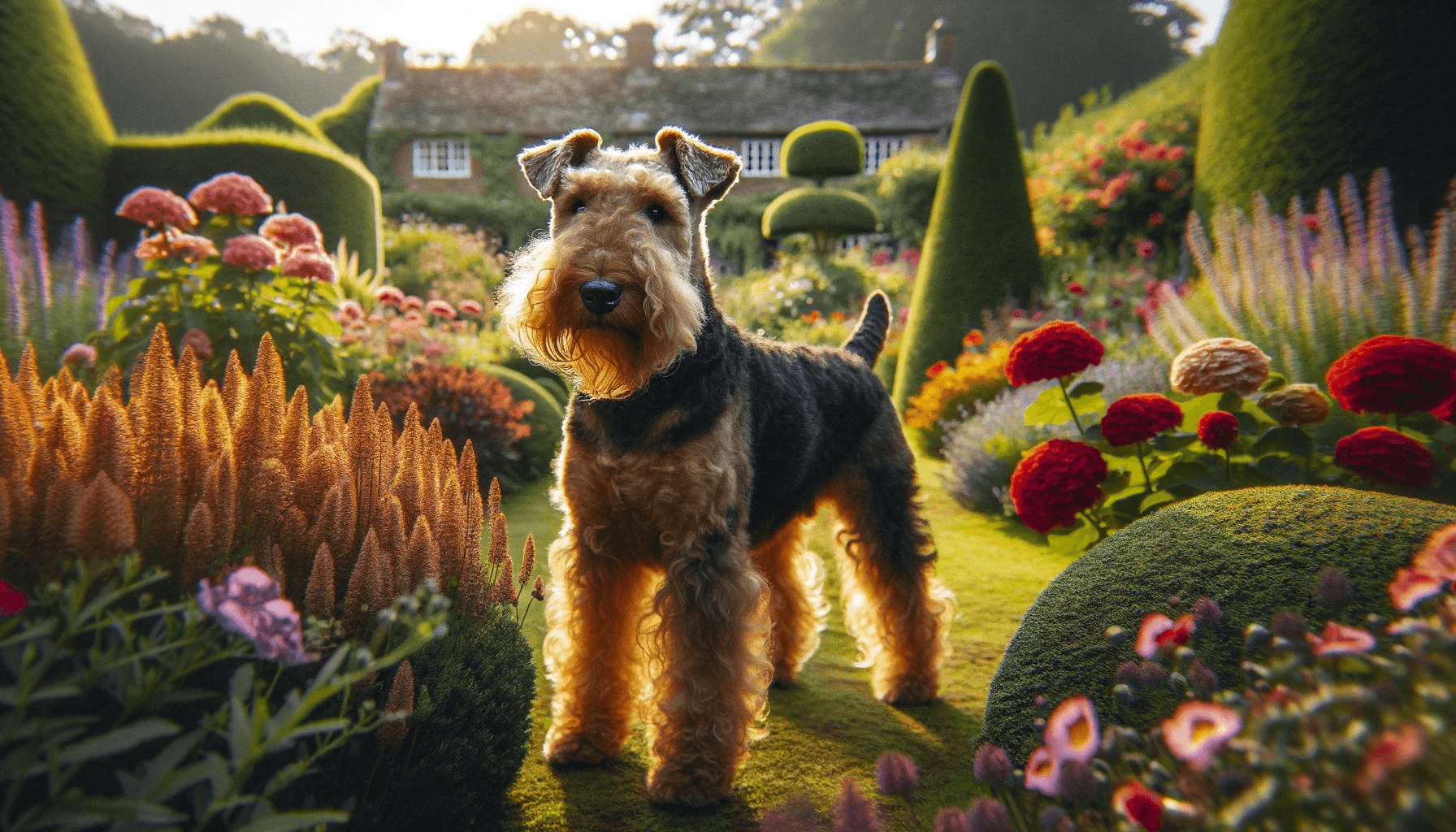 Bred primarily for hunting foxes, otters, and badgers, this breed was prized for its tenacity and ability to work in rugged terrain. The Welsh Terrier shares a common ancestry with the Lakeland Terrier and the Airedale Terrier, but it is distinguished by its smaller size and unique coat pattern.
Bred primarily for hunting foxes, otters, and badgers, this breed was prized for its tenacity and ability to work in rugged terrain. The Welsh Terrier shares a common ancestry with the Lakeland Terrier and the Airedale Terrier, but it is distinguished by its smaller size and unique coat pattern.
In the late 19th and early 20th centuries, the Welsh Terrier began to gain popularity beyond hunting circles, especially in dog shows, due to its distinctive appearance and lively character. The breed was officially recognized by The Kennel Club in England in 1885.
Group: Terrier Group
Temperament: Welsh Terriers are known for their spirited, friendly, and intelligent nature. They are bold, energetic, and often have an independent streak.
Height: Typically stands about 15-15.5 inches (38-39 cm) at the shoulder.
Weight: Usually weighs between 20-21 pounds (9-9.5 kg).
Coat and Color: They have a dense, wiry double coat. The color is predominantly black and tan.
Life Expectancy: The average lifespan is around 12-13 years.
Activity Level: High; they are active dogs that require regular exercise and mental stimulation.
Trainability: Intelligent and can be trained, but may display independence, requiring patience and consistency.
Socialization: Early socialization is important, especially due to their strong terrier instincts and prey drive.
Grooming Needs: Moderate; their wiry coat needs regular brushing and occasional professional grooming to maintain its condition.
Health Issues: Generally healthy, but can be prone to conditions such as allergies and hip dysplasia.
Adaptability: Adaptable to various living environments, including apartments, as long as they get adequate exercise.
Living Space Compatibility: Suitable for both apartment and house living, provided they have opportunities for daily physical activity.
Family Situation: Good with families and can do well with children. Their playful and energetic nature makes them a great companion for active households.
The Welsh Terrier is an energetic and spirited breed, ideal for active families and adaptable to various living situations. They require regular exercise and grooming, and their friendly and intelligent nature makes them a compatible companion for those who appreciate a lively and independent dog. The Kennel Club
West Highland White Terrier
The West Highland White Terrier, commonly known as the Westie, originated in Scotland and is one of several small terrier breeds from the Scottish Highlands. It shares a common ancestry with other Scottish terriers such as the Cairn, Scottish, and Dandie Dinmont Terriers.
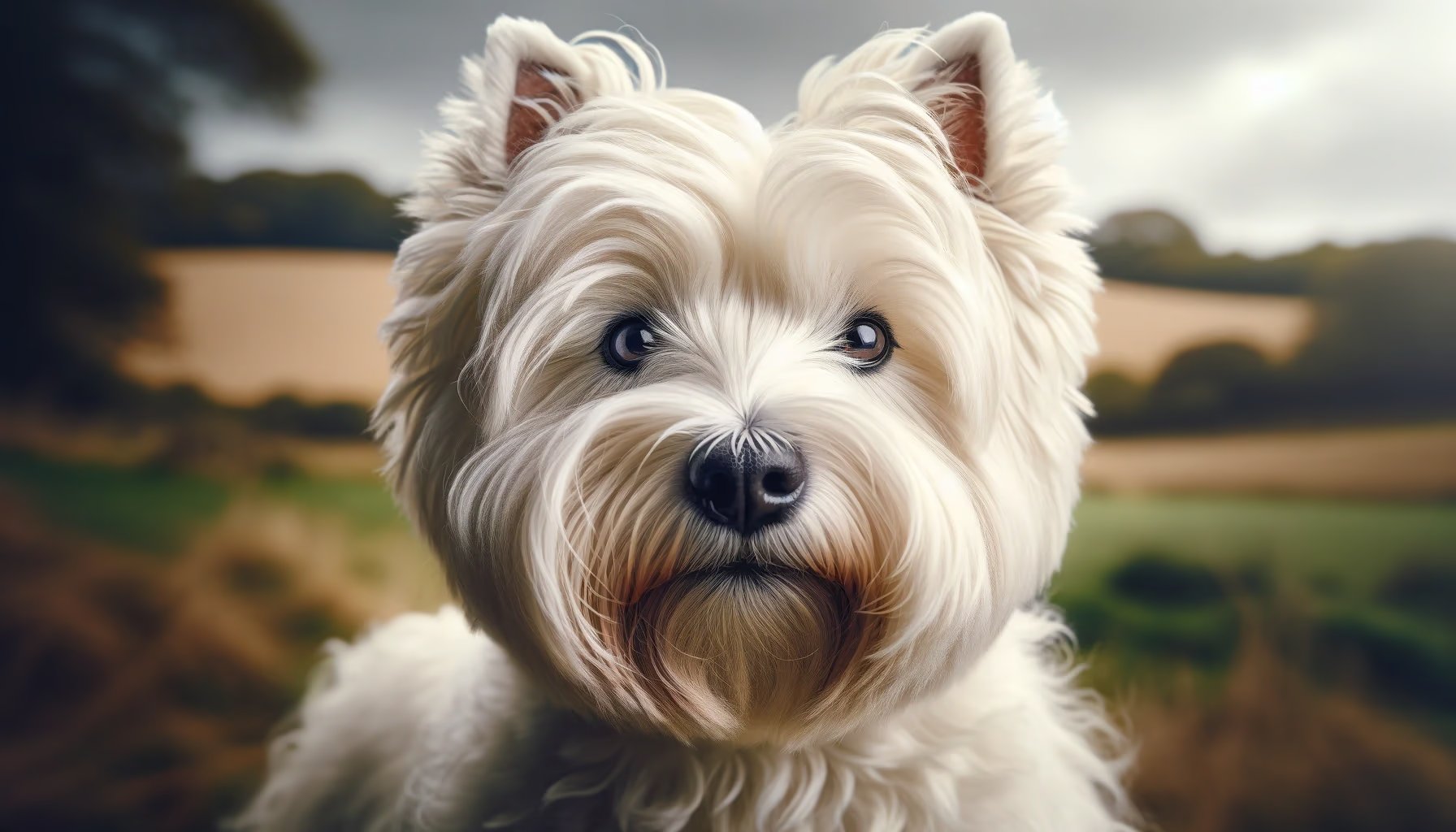 The breed was developed in the 19th century, with a focus on its distinctive white coat, which set it apart from its relatives. This white coat was not just a matter of appearance; it was bred into these terriers for practical reasons, making them more visible when hunting on Scottish moors and in rugged landscapes.
The breed was developed in the 19th century, with a focus on its distinctive white coat, which set it apart from its relatives. This white coat was not just a matter of appearance; it was bred into these terriers for practical reasons, making them more visible when hunting on Scottish moors and in rugged landscapes.
The Westie was initially bred for controlling the population of rats, foxes, and other vermin. The breed gained popularity not just for its hunting prowess but also for its compact size and charming personality. It was recognized as a distinct breed in the early 20th century.
Group: Terrier Group
Temperament: West Highland White Terriers, or Westies, are known for their lively, friendly, and independent nature. They are confident, courageous, and have a strong personality.
Height: Typically stands about 10-11 inches (25-28 cm) at the shoulder.
Weight: Usually weighs between 15-20 pounds (7-9 kg).
Coat and Color: They have a distinctive double coat with a hard, wiry outer coat and a soft undercoat. The color is always white.
Life Expectancy: The average lifespan is around 12-16 years.
Activity Level: Moderate; they are active and enjoy regular exercise, but their small size makes them suitable for various living environments.
Trainability: Intelligent but can be stubborn. They respond well to consistent, positive training methods.
Socialization: Early socialization is important for well-rounded behavior, as they can be strong-willed and have a tendency to chase small animals.
Grooming Needs: High; their white coat requires regular grooming to maintain its appearance and prevent matting.
Health Issues: Generally healthy, but can be prone to certain conditions like patellar luxation, skin issues, and cranio-mandibular osteopathy.
Adaptability: Highly adaptable to various living situations, including apartments, as long as they receive adequate exercise.
Living Space Compatibility: Suitable for both apartment and house living. Their size and exercise needs make them versatile in different living environments.
Family Situation: Good with families, including those with older children. They are playful and affectionate, making them a great companion for active households.
The West Highland White Terrier is a lively, friendly, and adaptable breed, suitable for a variety of living situations, including apartments. Known for their distinctive white coat and independent nature, they require regular grooming and enjoy moderate exercise, making them a charming and manageable companion for families and individuals alike. The Kennel Club
Whippet
The Whippet, a breed known for its agility and speed, originated in England during the 18th and 19th centuries. Developed in the north of England, the Whippet was bred by working-class people who wanted a smaller, more affordable version of the Greyhound for coursing and racing.
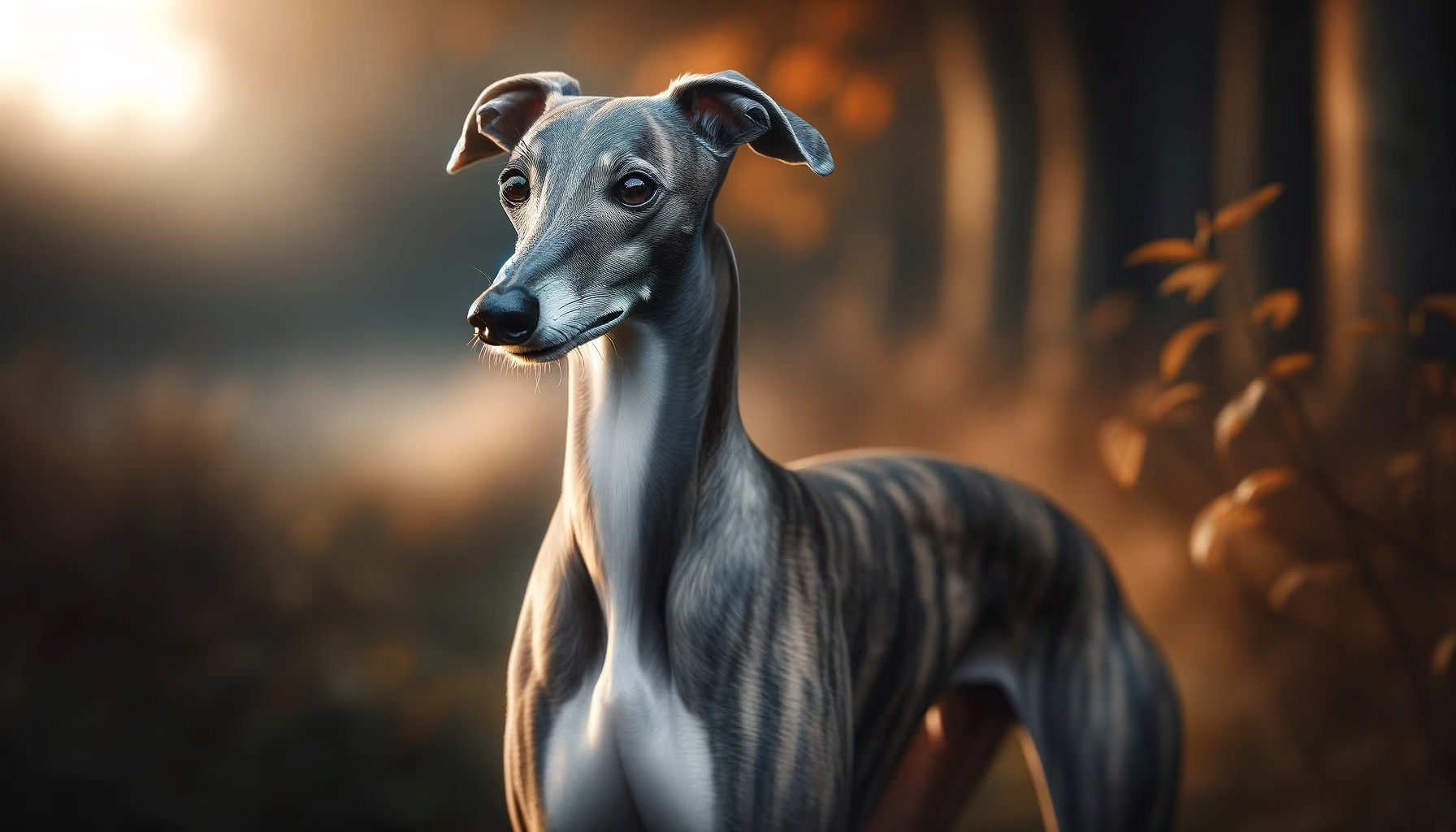 They were particularly popular among miners, who raced them as a pastime. The breed is a mix of Greyhounds with smaller, long-legged terriers and, in some instances, with Italian Greyhounds. This mix resulted in a breed that combined the speed of the Greyhound with a more compact size and a versatile temperament.
They were particularly popular among miners, who raced them as a pastime. The breed is a mix of Greyhounds with smaller, long-legged terriers and, in some instances, with Italian Greyhounds. This mix resulted in a breed that combined the speed of the Greyhound with a more compact size and a versatile temperament.
Whippets quickly gained popularity for their racing prowess and were known as the "poor man's racehorse." Their gentle and friendly disposition also made them excellent companions. Recognized by The Kennel Club in the UK in 1891, the Whippet became a popular show dog and family pet.
Group: Hound Group
Temperament: Whippets are known for being gentle, affectionate, and friendly. They are calm in the home but can be playful and energetic outdoors.
Height: Typically stands about 18-22 inches (46-56 cm) at the shoulder.
Weight: Usually weighs between 25-40 pounds (11-18 kg).
Coat and Color: They have a short, smooth coat that comes in a variety of colors and patterns, including black, white, red, blue, cream, brindle, and various combinations.
Life Expectancy: The average lifespan is around 12-15 years.
Activity Level: Moderate to high; they enjoy sprinting and require regular exercise but are also content to relax at home.
Trainability: Intelligent and generally easy to train, responsive to positive reinforcement techniques.
Socialization: Early socialization is important to develop their confidence and ensure well-rounded behavior.
Grooming Needs: Low; their short coat requires minimal grooming, mainly regular brushing and occasional baths.
Health Issues: Generally a healthy breed, but can be prone to conditions such as heart problems and deafness.
Adaptability: Highly adaptable to various living environments, including apartments, as long as they have opportunities for regular exercise.
Living Space Compatibility: Suitable for both apartment and house living, provided they have access to a space for running and exercise.
Family Situation: Good with families and typically gentle with children. Their friendly and affectionate nature makes them a great companion for active households.
The Whippet is an affectionate, gentle, and adaptable breed, well-suited for various living situations, including apartments. Known for their speed and friendly nature, they require regular exercise but are also content with relaxed home life, making them ideal companions for both active individuals and families. The Kennel Club
Yorkshire Terrier
The Yorkshire Terrier, affectionately known as the Yorkie, originated in the 19th century in the county of Yorkshire, England. Developed during the Industrial Revolution, the Yorkie was initially bred by working-class men who wanted a small, energetic dog for catching rats in mines and mills.
 The breed's ancestors likely include various terriers brought to England by Scottish workers, particularly the Clydesdale Terrier or the now-extinct Paisley Terrier, along with other small-sized terriers like the Skye Terrier and the Maltese.
The breed's ancestors likely include various terriers brought to England by Scottish workers, particularly the Clydesdale Terrier or the now-extinct Paisley Terrier, along with other small-sized terriers like the Skye Terrier and the Maltese.
Yorkshire Terriers quickly became popular among the English elite and were transformed from a working-class ratter to a fashionable companion for high society. Their fine, silky coats and compact size made them particularly appealing to Victorian ladies.
The breed was recognized by The Kennel Club in 1886. Over time, the Yorkie's popularity spread worldwide, becoming known for its bold and confident character, despite its small size.
Group: Toy Group
Temperament: Yorkshire Terriers are known for their bold, confident, and intelligent nature. They are lively and affectionate, often forming strong bonds with their owners.
Height: Typically stands about 7-8 inches (18-20 cm) at the shoulder.
Weight: Usually weighs around 4-7 pounds (2-3 kg).
Coat and Color: They have a fine, silky coat that is steel blue and tan. The coat is traditionally long and requires regular grooming.
Life Expectancy: The average lifespan is around 11-15 years.
Activity Level: Moderate; they enjoy playtime and short walks but do not require extensive exercise.
Trainability: Intelligent and can be trained, but may show a stubborn streak. Responds well to consistent, positive reinforcement.
Socialization: Early socialization is important to prevent them from becoming too timid or sharp.
Grooming Needs: High; their long coat requires regular brushing and grooming to prevent tangles and maintain its condition.
Health Issues: Can be prone to dental issues, patellar luxation, and tracheal collapse, among other health concerns.
Adaptability: Highly adaptable to various living environments, including apartments, due to their small size.
Living Space Compatibility: Ideal for apartment living but also adaptable to larger homes, as long as they have a safe space to play and explore.
Family Situation: Good with families, particularly those who can provide them with attention and care. Their small size makes them suitable for living with older children who know how to handle small pets carefully.
The Yorkshire Terrier, known for its bold personality and elegant appearance, is an adaptable and affectionate breed suitable for various living situations, including apartments. Their small size and moderate exercise needs make them ideal companions for families and individuals, especially those who appreciate a lively and loyal pet with high grooming needs. The Kennel Club
Frequently Asked Questions
Q1: What makes British dog breeds unique in terms of their characteristics?
British dog breeds are often known for their distinct personalities and strong heritage. Many of these breeds were originally developed for specific purposes like hunting, herding, or companionship, which is reflected in their behavior and abilities. For instance, terriers are typically energetic and tenacious, while spaniels are known for their affectionate nature and skill in retrieving.
Q2: How do the grooming needs vary among different British dog breeds?
Grooming needs can vary significantly. Breeds like the Yorkshire Terrier require regular grooming due to their long, silky coats, while others like the Whippet have minimal grooming needs because of their short, smooth coats. It's important to consider the grooming needs relative to a breed's coat type.
Q3: Are British dog breeds suitable for families with children?
Many British dog breeds are suitable for families with children, but it's important to consider the specific breed's temperament and energy level. Breeds like the Labrador Retriever and the Beagle are known for being particularly good with children due to their friendly and tolerant nature.
Q4: Can British dog breeds adapt well to living in apartments?
Some British dog breeds adapt well to apartment living, especially smaller breeds or those with lower energy levels. Breeds like the Cavalier King Charles Spaniel and the Bulldog can do well in apartments, but it's crucial to ensure they receive adequate exercise and mental stimulation.
Q5: What are some common health issues in British dog breeds?
Health issues can vary by breed, but some common concerns include hip dysplasia in larger breeds like the Labrador Retriever, respiratory issues in brachycephalic breeds like the Bulldog, and hereditary eye conditions in breeds like the Cocker Spaniel. Regular health check-ups and awareness of breed-specific health issues are important for maintaining their well-being.
Q6: What is the native dog breed of England?
The native dog breed of England is the English Cocker Spaniel. This breed is known for its intelligence, agility, and friendly temperament.
Q7: Which dog is considered the most British?
The most British dog is often considered to be the Pembroke Welsh Corgi. These dogs are closely associated with the British royal family and are known for their distinct appearance and herding abilities.
Q8: What is the national dog of Britain?
The national dog of Britain is the Bulldog. Bulldogs are symbolically linked to British culture and are known for their muscular build and distinctive wrinkled face.
Q9: What is the most favored dog breed in the UK?
The most favored dog breed in the UK varies, but popular choices include the Labrador Retriever, the Staffordshire Bull Terrier, and the French Bulldog.
Q10: Is the UK known for being a dog-friendly country?
Yes, the UK is generally known for being a dog-friendly country. Many public places, parks, and accommodations are welcoming to dogs, and there is a strong culture of dog ownership.
Q11: Are pit bulls originally American or British dog breeds?
Pit bulls are originally American dog breeds. Breeds like the American Pit Bull Terrier and the American Staffordshire Terrier are often collectively referred to as pit bulls.
Q12: What led to the development of numerous distinct dog breeds in Britain?
The development of numerous distinct dog breeds in Britain can be attributed to a combination of factors, including geographic isolation, specific breeding purposes, and the influence of historical events.
Q13: What is the cultural significance behind the British love for dogs?
The cultural significance behind the British love for dogs is deeply rooted in history, where dogs served various roles, including companionship, hunting, herding, and guarding. The bond between Britons and their dogs is reflected in literature, art, and popular culture.
Q14: What are some small British dog breeds?
Some small British dog breeds include the Cavalier King Charles Spaniel, the Shetland Sheepdog, and the Pug.
Q15: Which are the best British dog breeds?
The best British dog breeds depend on individual preferences, but notable breeds include the Border Collie for intelligence, the Labrador Retriever for versatility, and the Beagle for its friendly nature.
Q16: What are some popular British dog breeds?
Popular British dog breeds include the Labrador Retriever, the Cocker Spaniel, the Staffordshire Bull Terrier, and the Dachshund.
Q17: What are some large English dog breeds?
Large English dog breeds include the English Mastiff, the Bulldog, and the Old English Sheepdog. These breeds are known for their imposing size and distinctive features.
Conclusion
Ultimately, the enduring charm and character of British dog breeds continue to captivate dog lovers worldwide.
Their rich histories, combined with unique temperaments, ensure that these breeds not only serve as beloved companions but also as living links to Britain's cultural heritage.
For those seeking a canine companion, the variety and depth offered by British dog breeds provide a plethora of options to find the perfect match.
----------------------------------------------------

Read More